Cruise Tips For Families & Single Cruisers
Things to Know Before You Cruise

Cruise Ship Propellers: Size, Speed, And Sustainability
As a cruise ship enthusiast and a lover of the open sea, I have always been fascinated by the sheer size and power of cruise ship propellers. These mammoth vessels require propellers that can withstand the harsh marine environment, while also providing the necessary thrust to navigate through the water.
In this article, we will delve into the world of cruise ship propellers, exploring their design, materials, and safety considerations, as well as the latest technological advancements that are improving their efficiency and sustainability.
From the traditional fixed-pitch propellers to the modern azipods, cruise ship propellers have come a long way in terms of design and functionality. These propellers must be strong enough to withstand the forces of the sea, while also being flexible enough to provide the necessary maneuverability for the ship.
In addition, the sustainability of cruise ship propellers is becoming increasingly important, as the industry strives to reduce its environmental impact and promote a more sustainable future.
Join me as we explore the fascinating world of cruise ship propellers, and discover how these powerful machines are shaping the future of ocean travel.
- Cruise ship propellers can vary in size and are made from an alloy of stainless steel and aluminium to withstand corrosion and degradation.
- Modern cruise ships use azipods, which have the propeller at the front of the pod and can spin 360 degrees to help with steering, and typically have three propellers for balance between fuel consumption, thrust, and manoeuvrability.
- The number of propellers a ship has determines its speed, fuel consumption, and ease of turning, and the biggest propellers belong to container ships, with the MSC Oscar having propellers that are approximately 35 feet in diameter.
- Changes are being made to cruise ship engines and fuel types to make ships more sustainable, and while the odds of falling overboard on a cruise ship are low, it’s not safe to swim over to a cruise ship in a dock due to sudden current shifts.
Propeller Design and Materials
I learned that cruise ship propellers are a crucial component of these mammoth vessels, designed to withstand the harsh conditions of the open sea. These propellers are made from an alloy of stainless steel and aluminium, chosen for their durability and corrosion resistance.
To ensure the safety of passengers, propeller design is carefully considered to minimize the risk of accidents. Propeller maintenance is also essential to ensure that the ship continues to operate smoothly and efficiently.
The manufacturing process involves precision engineering, with each propeller tailored to the specific needs of the ship. With modern advances in technology, propellers are becoming more efficient and eco-friendly, helping to reduce the environmental impact of these massive ships.
Overall, the design and construction of cruise ship propellers are critical to the safe and efficient operation of these vessels.
Propeller Function and Safety
Ensuring the proper maintenance of these underwater giants is crucial to keep them running smoothly and minimize the chances of any potential mishaps hitting the fan.
Cruise ship propellers are the workhorses of the ship, responsible for propelling these mammoth vessels through the water. They are designed to withstand the corrosive effects of saltwater and other forms of degradation. Any damage to the propeller can cause significant problems for the ship, including reduced speed, increased fuel consumption, and even accidents.
Propeller maintenance is an ongoing process that involves regular inspections, cleaning, and repairs. The blades must be checked for cracks, erosion, and other forms of damage. The propeller shaft must also be inspected for wear and tear. Any damage found must be repaired promptly to prevent further damage.
Propeller accidents can be catastrophic, causing damage to the ship and putting the lives of passengers and crew at risk. Proper maintenance is essential to prevent accidents and ensure that the ship operates safely and efficiently.
Modern Technology and Efficiency
Implementing new technology and more efficient systems has become a top priority for the maritime industry. Cruise ship companies are investing in modern technology to reduce their carbon footprint and improve their efficiency.
Here are some of the efficiency improvements and future developments in cruise ship propellers:
Electric propulsion systems – Some cruise ships are replacing their traditional diesel engines with electric propulsion systems. These systems have fewer moving parts and are more efficient than their diesel counterparts. They also produce fewer emissions, making them more environmentally friendly.
Advanced propeller designs – Cruise ship propellers are becoming more advanced, with designs that reduce drag and improve efficiency. These new designs use materials that are lighter and stronger than traditional stainless steel and aluminum alloys.
Azipod technology – Azipod technology, which allows the ship to turn in any direction without the use of a rudder, is becoming more popular in the cruise industry. These systems use less fuel and are more maneuverable than traditional propulsion systems.
Alternative fuels – Cruise ships are exploring alternative fuels such as LNG (liquefied natural gas) and hydrogen fuel cells. These fuels produce fewer emissions than traditional diesel and are more sustainable in the long run.
Efficiency improvements and future developments in cruise ship propellers are essential for the maritime industry to reduce its environmental impact and improve its efficiency. As technology continues to evolve, we can expect to see more advanced propulsion systems and designs in the future. The use of alternative fuels and electric propulsion systems will also become more prevalent, making cruise ships more sustainable and environmentally friendly.
Environmental Impact and Sustainability
Reducing the environmental impact of maritime transportation is crucial for the future of our planet. As the world becomes more aware of the impact of carbon emissions on our environment, the cruise industry is looking to alternative fuel sources to power their ships and reduce their carbon footprint.
One such fuel is liquefied natural gas (LNG), which has lower emissions than traditional fuels such as diesel. In fact, some new ships are being designed to run entirely on LNG, which will significantly reduce their carbon emissions.
In addition to alternative fuels, cruise companies are also investing in technology to reduce their environmental impact. One area of focus is the use of azipod propellers, which are more efficient than traditional propellers and require less power to operate. This means that ships using azipods can travel further and faster while using less fuel, resulting in fewer carbon emissions.
Overall, the cruise industry is working to find sustainable solutions to reduce its impact on the environment and protect the planet for future generations.
How often do cruise ship propellers need to be replaced?
The lifespan of cruise ship propellers varies depending on usage and maintenance frequency. Generally, they can last between 5-10 years before needing replacement. Regular inspections and repairs can extend their lifespan and ensure safe operation.
How do cruise ship propellers affect marine life?
Cruise ship propellers act as the beating heart of a ship, but their impact extends beyond. They disrupt the marine ecosystem, causing environmental damage. The underwater noise can harm marine life, affecting their communication and migration patterns.
Can cruise ship propellers be recycled?
Unfortunately, cruise ship propellers cannot be easily recycled due to their complex materials and design. This contributes to their environmental impact, but efforts are being made to improve sustainability through more efficient propeller technology.
How do propellers impact the noise level on a cruise ship?
As I stand on the deck of the cruise ship, I can’t help but notice the smoothness of the ride. The propeller design plays a crucial role in reducing vibrations and noise levels. Modern advances in technology have made it possible to create more efficient and quieter propellers.
Are there any alternative propulsion systems being developed for cruise ships?
I’ve been researching alternative solutions for cruise ship propulsion, and future prospects are looking promising. New technologies like fuel cells, wind power, and hybrid systems are being developed to reduce emissions and increase efficiency, offering a greener future for the industry.
- CruiseMapper
- Ships and Lines
Cruise Ship Engine Power, Propulsion, Fuel
These are some of the most interesting cruise ship technology-related data and facts - engines , power , marine propulsion systems , fuel consumption of cruise ships , and something about pollution (in-article navigation links).
In 2020, IMO (International Maritime Organization) implements its global 0,5% sulfur cap on marine fuels. If not using scrubbers (pollution control devices), owners of older vessels must use as ship fuels either MGO (marine gas oil), ECA Category Fuels (low sulfur MGO), new modified fuels and blends, LNG (liquefied natural gas) or electric/battery power . Each fuel option is based on vessel type and age, routes/itineraries and powerplant. Most newbuild passenger ships are LNG-powered . World's largest seaports plus numerous smaller ports already have installed shoreside power capabilities providing shore-to-ship power supply to berthed vessels. In many ports, shorepower is in addition to LNG bunkering capabilities.
Cruise Ship Engine
Without a source of power, these huge cruise vessels would be nothing more than drifting aimlessly hotels. A large number of older ships use diesel reciprocating engines for generating power for propulsion. Cruise ship engine power is supplied through the transmission to the propeller shafts. These transmissions determine the revolutions of propellers. Modern ships use either diesel-electric engines or gas turbines as a source of power for propulsion, and for ship's systems. Some of the larger ships depend on two power sources - one for electrical power and one for propulsion.
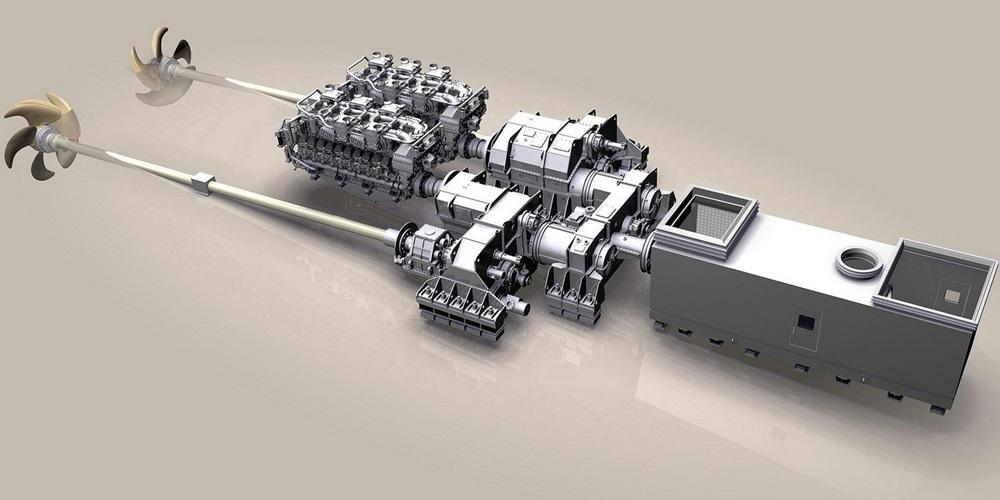
Gas turbine engines (being aero-derivative) generate heat which is transformed from mechanical energy into electricity. To achieve this, compressed air is fired in a combustion chamber. Hot exhaust is made over a turbine that spins to drive mechanically a shaft. The power can be used to spin the generators. The same way works diesel-electric engines, yet they use a direct drive system, not a turbine. The output shafts, to produce electrical power, are connected to generators.
Both engine types need a lot of fuel. Cunard QE2 , for example, consumes daily 380 tons of fuel when traveling at 29 knots speed and carries fuel enough to sail for 12 days. Usually, ships fill up at various seaports and use fueling barges as floating gas stations. Vessels use lower-grade diesel which tends not to burn as purely as diesel-powered road-going vehicles.
All ships rely on propellers/screws to be pushed through the water, providing forward and reverse motion. Airplanes, for example, require tremendous propeller speeds to provide the forward motion, but ship propellers don't need to turn so fast and rely on torque power. Therefore, ships travel slowly and rarely top 30 knots (for more info follow our speed-link above).
Cruise ship engine room
The basic detail about the cruise ship engine room is its location. For stability, the ship's heaviest weights are at its lowest possible deck, and usually, engines are mounted above the keel. Ship's lowest decks are almost entirely full of machinery. An area creating enough power for driving such an enormous vessel through water needs to be really big - very often engine rooms occupy at least three decks. Rather than long halls stretching the length of hulls, machinery is almost always divided into smaller compartments - one for the main engines, another for the heating/air-conditioning system. This compartmentalization is for safety reasons. If a penetration to the hull or fire happens, multiple compartments help contain the damage. The next photo shows the engine room of RCI's Oasis-Class vessels.
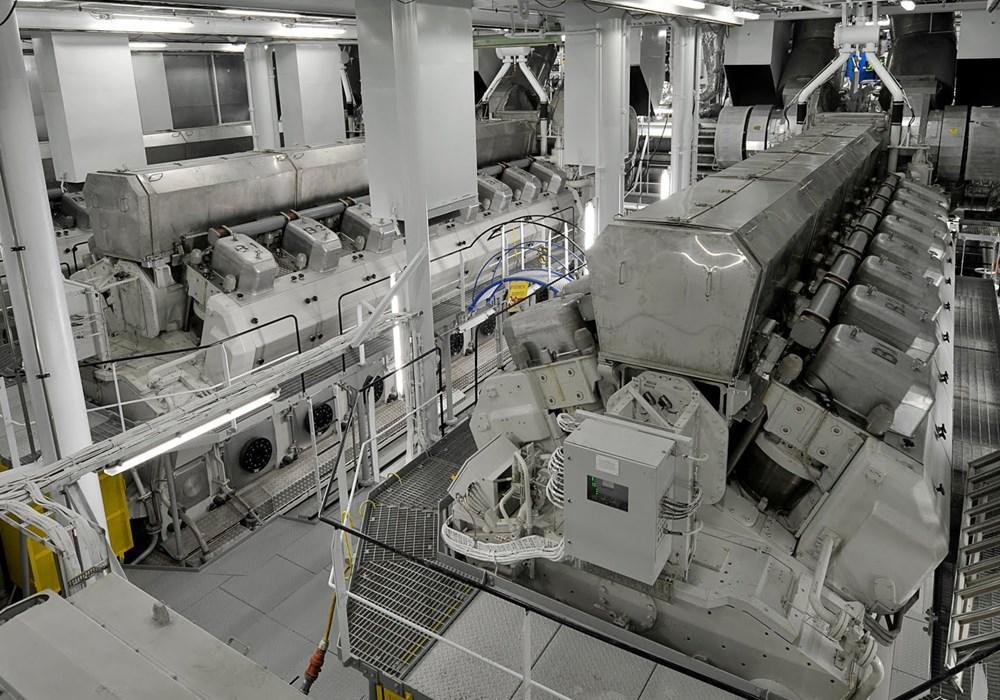
Rarely, engines are not placed at the ship's bottom. RMS Queen Mary 2's four main diesel engines are above the keel, with two smaller gas turbines on top-deck (aft of the funnel). It was not unusual for older liners to have 2 engine rooms. Gradually, technology allowed the consolidation of these spaces. However, current maritime legislation requires vessels to have equipment duplication and 2 engine rooms.
In May 2015, Wartsila Corporation and Carnival Corporation partnered to optimize cruise ship engine room operations of all 101 ships across the corporation's 9 brands. The deal was signed by Micky Arison (Carnival's Chairman) and Bjorn Rosengren (Wartsila's President and CEO). The plan included installing Wartsila's latest marine solutions, first tested on several Carnival Cruise Line vessels in pilot projects. The new systems and technologies included engine control and monitoring systems, safety and fuel efficiency equipment.
Wartsila's "Asset Performance Optimization Solution" package allows obtaining optimal performance from Wartsila marine diesel engines, recommends how to deal with potential issues, maximizes ship performance, ensures full-capacity systems operations, increases the predictability of fuel management and maintenance needs. Wartsila's fuel engine package was specifically designed to reduce fuel consumption.
Wartsila Marine technologies aim to optimize ship performance, but also allow to locate deviations from normal parameters of equipment and engines. This allows emerging problems and engine fault sources to be fixed before they occur.
Conventional diesel cruise ship engine
Today's direct-drive diesels feature one main advantage - the option to use a shaft generator, which is a device using the circular motion of the propeller shaft in order to generate the electricity needed for hotel services, like cooking and lighting.
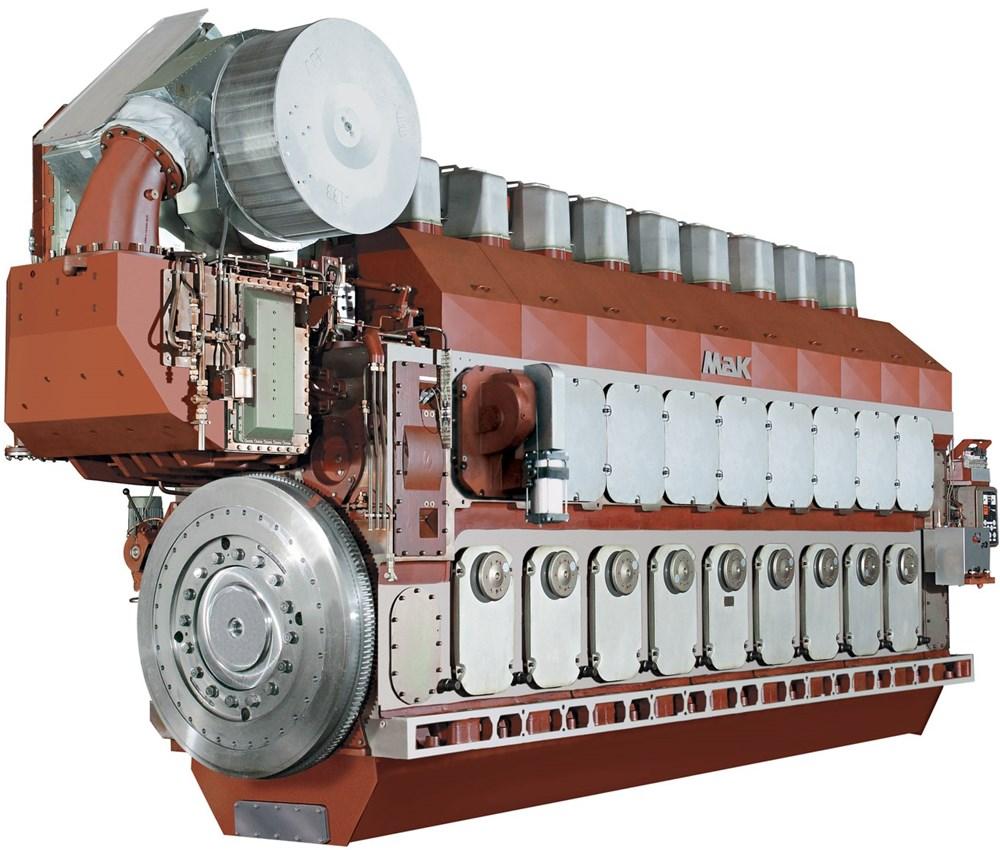
Shaft generators can be used only while the ship is moving with a fairly constant cruising speed. This is what the NCL Epic cruise ship engine looks like:
Diesel-electric cruise ship engine
Almost all new ships feature a diesel-electric propulsion form. On these ships, main engines are not connected to propeller shafts, and instead of it they are directly connected to big generators in order to produce electricity, which is sent in turn to electric motors, that then power and help turn the propellers. The main advantage of the diesel-electric cruise ship engine systems is efficiency as they allow main engines to operate near the most efficient speed, no matter if the ship is moving at 5 or 25 knots.
Losing electrical power is devastating to ships. Main engines and generators require electricity and it's needed to keep them going. Pumps that are driven electrically take in cold ocean water to cool the engines and electrical pumps get fuel from fuel tanks and supply it to the engine. Electrical power is vital for many operational functions - without it, ships come to a halt.
Large equipment (propulsion motor, bow thrusters) requires electricity of high voltage. As for smaller machinery (cabin lights, galley equipment), the electricity goes through the transformer and is thus stepped down into lower voltage. Large cables snake through all the ships to distribute electrical power. They carry power from generators to switchboards, through passageways, public rooms, crew and passenger cabins. Cabling can be a weak point in the distribution system. If the electrical cables aren't truly redundant, even ships that feature two engine rooms suffer power failure.
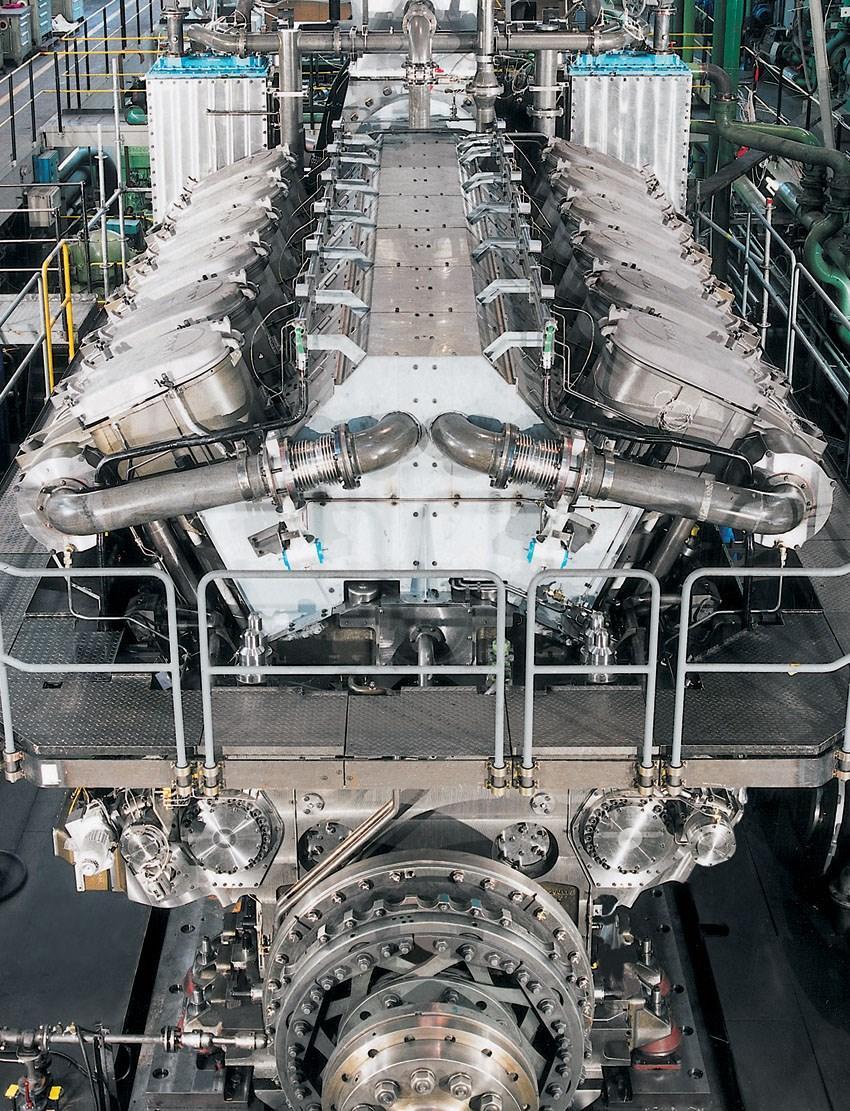
While ships are docked, generators and main engines produce more power than needed. They are turned off in port, and smaller generators supply "hotel" loads (lights, air-conditioning, galley, etc.). Moving through water takes up the vast majority of the ship's power needs - about 85% of all the diesel-electric powerplant production is consumed by the propulsion system. The above photo is of the Vista-class Carnival cruise ship engine room. The engine type is "MAN 2 times; 14V48/60CR" (common-rail diesel injection system):
Cruise ship Emergency Generators
All ships are supplied with emergency generators to maintain vital electrical power. Backup generators are located higher up and also outside engine room spaces to isolate them from damage or fire.
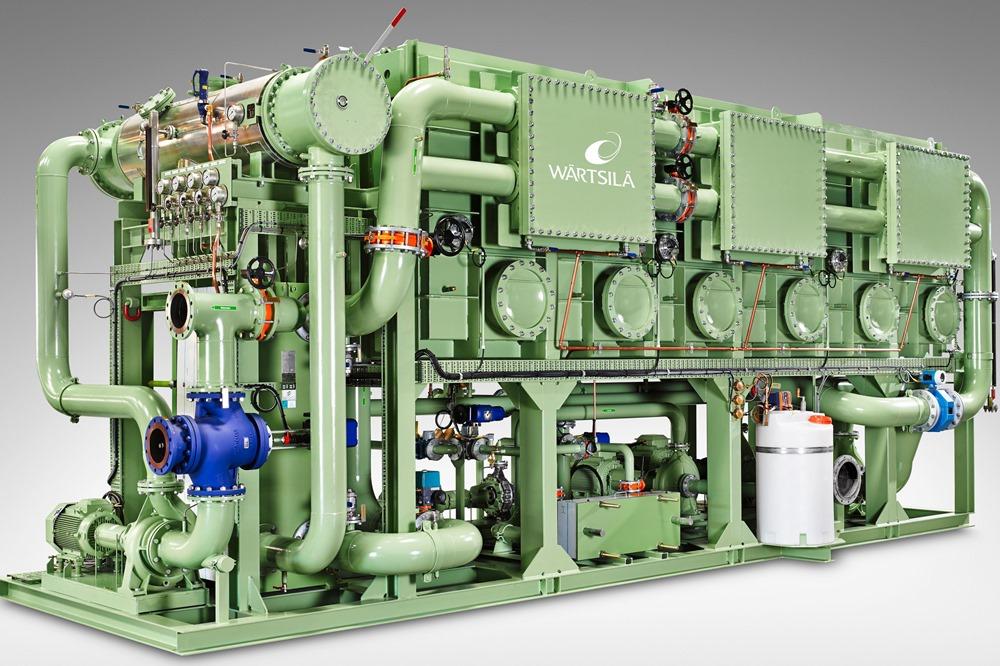
Big ships require much power, so they might have more than one emergency generator. Despite that, they don't have the capacity of main generators and engines, don't produce electricity enough to move the ship, and can't supply all the power needed in ports, because of constraints in space.
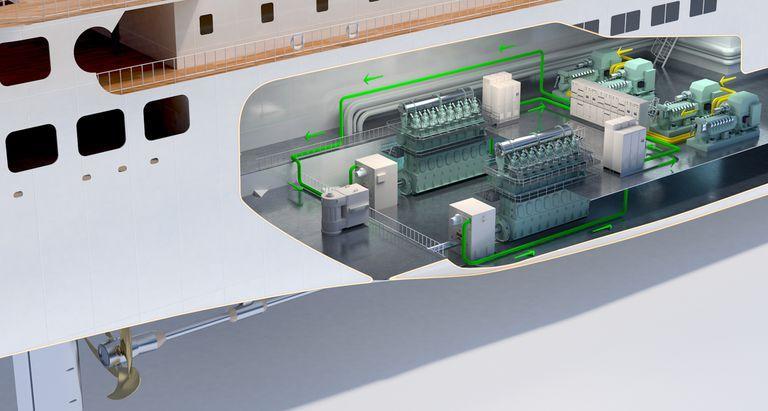
Emergency generators are instead used only for essential navigation systems - crucial communication equipment, critical pumps in the engine room, emergency lighting. Should they also fail, vessels are required to have a battery backup. 24 hours of power are at least provided by battery rooms to the smaller emergency equipment list.
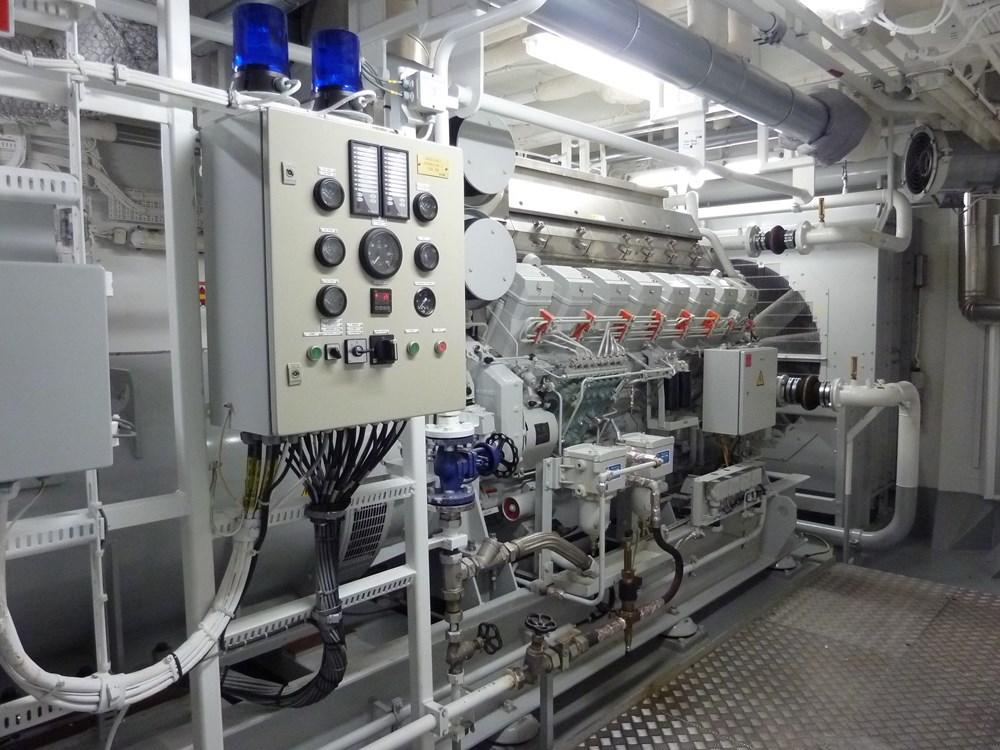
Probably you've heard about Carnival cruise ship accidents related to power failures in 2013. At our Carnival Fun Ship 2.0 upgrades link you can learn how CCL battled with this "unmaintained ships" image and implemented revolutionary new technology initiatives fleetwide - including an additional emergency backup generator on each of their vessels.
Cruise Ship Propulsion
The new cruise ship propulsion systems ABB Azipods XO (below photo) are more fuel-efficient than traditional systems, also providing better maneuverability, maximizing speed, reducing bad emissions, which as a whole optimizes ship's performance and enhances passenger safety.
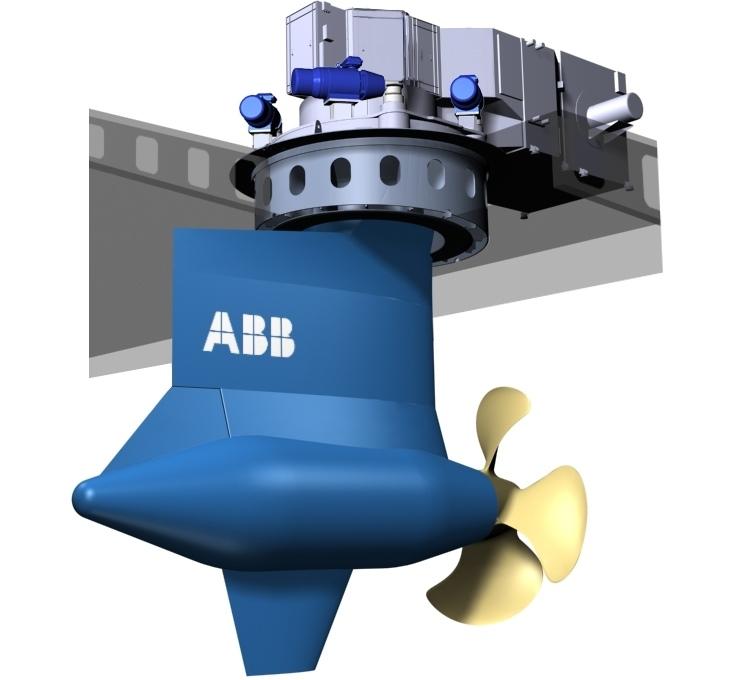
ABB Azipod propulsion systems have a major impact on the vessel's operating efficiency - reducing energy consumption and bad emissions by up to 20%.
In 2019, ABB signed a deal with Oldendorff Carriers (1921-founded, Germany's largest bulk shipping company with a fleet of ~700 ships) for the supply and installation of Azipod propulsion systems on two newbuild carriers. Both self-unloading dry bulk vessels were China-built (by Chengxi Shipyard Co Ltd / subsidiary of CSSC) and scheduled for deliveries in 2021. Each vessel was fitted with two Azipods (power output 1,9 MW per unit) plus various related electric and digital solutions (powerplant, diesel-electric generators, bow thruster motors, transformers, switchboards, power management system, ABB Ability global ABB real-time monitoring).
Azipod cruise ship propulsion system
Azipod cruise ship propulsion system is situated outside the hull in the aft of the ship. Azipod turns in all directions (360 degrees) by a rudder, providing thrust in any directions, not possible for conventional systems.
See at the first photo at right RMS Queen Mary 2 's propulsion system scheme.
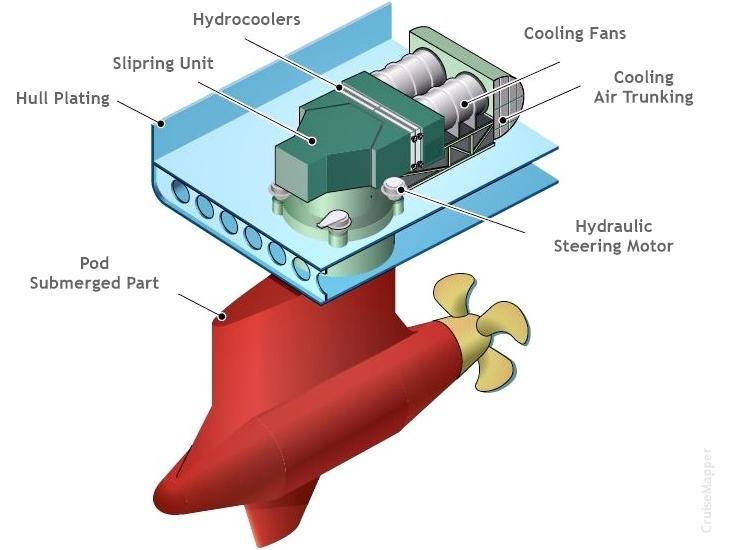
QM2's Azipod is actually an electric propulsion system consisting of the following main components:
- Propulsion motor - used to produce or drive thrust. The propeller's rotating is powered by an electric motor.
- Supply transformer - power produced by generators is 6600 KV, which is stepped down to the necessary voltage by supply transformer and is provided to the motor in the pod.
- Frequency controller - used to change the frequency of supplied power so that the rotating motor speed can be controlled.
Azipod marine ship propulsion is a combination of both steering and propulsion systems. Conventional marine propulsion systems use a two-stroke engine connected to a shaft, that passes through a stern tube and shaft tunnel to connect to the propeller outside the hull in the ship's aft/stern. This system's steering is done by a rudder (in the propeller's aft).
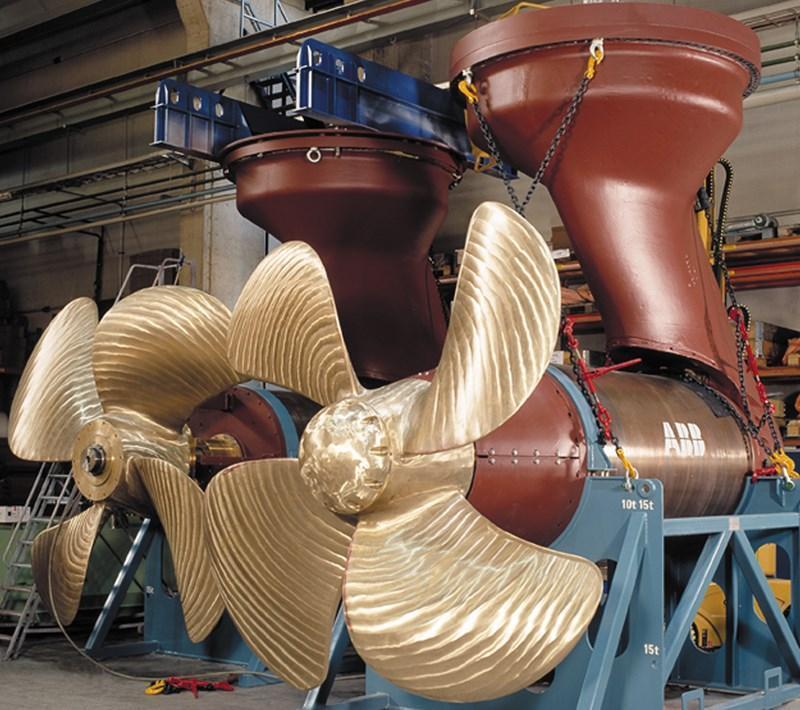
The above photo shows Oasis-class ship propulsion Azipods (2 units) before being mounted onto the hull. The next photo shows the Azipods (both units) mounted on the hull.
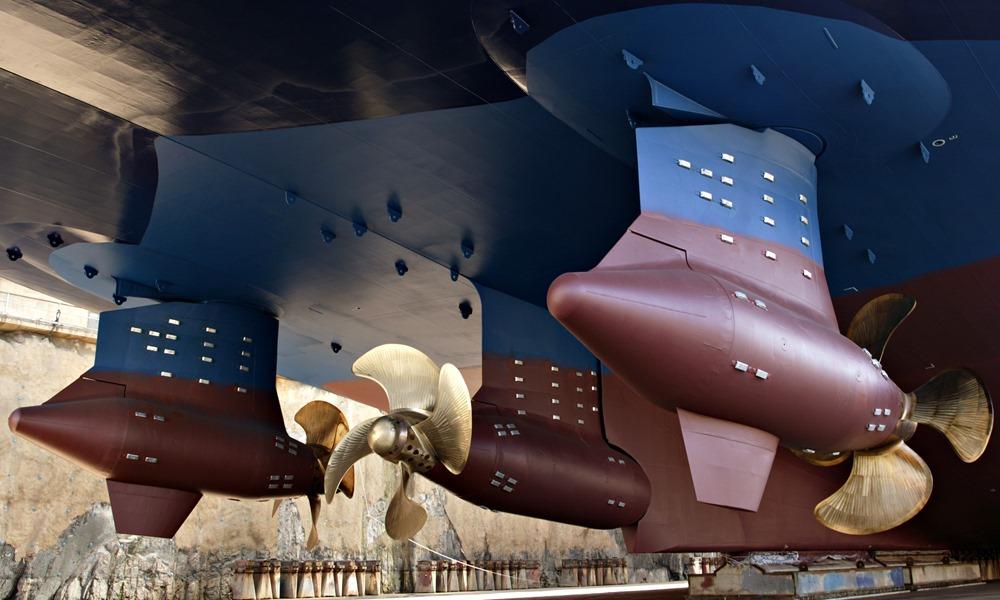
The 3rd Oasis-class ship - Harmony of the Seas, is currently the most technologically advanced and energy-efficient cruise vessel ever built. It is equipped with a new-generation exhaust gas cleaning system (multi-stream scrubbers) and also features a hull lubrication system allowing the ship to float on air bubbles (created around the hull) thus reducing drag and increasing fuel efficiency.
However, the steering and propulsion systems in Azipod arrangement, are combined into one part and the system consists of a propeller (driven by an electrical motor) turned by a rudder connected to the azipod system. The motor is inside the sealed pod and connected to the propeller.
The following YouTube video is about ABB Azipods installed on the new Genting Hong Kong vessels (Star Cruises' new ships and on Crystal Cruises' polar-class boats).
These ships incorporate a complete ABB propulsion - Azipods, electric power plant, computer automation, and software. Crystal cruise ships are powered by two "Azipod D" units allowing navigation in polar destinations. Each of the Star Cruises "Global-Class" vessels have three "Azipod XO" thrusters. All ships have installed ABB's "Intelligent Maneuvering Interface" and the "OCTOPUS" software optimizing fuel consumption and energy management. All these ships were constructed by the German shipbuilder MV Werften. Currently, almost 2/3 of all large-sized cruise vessels, icebreaking ships, and high ice-class cargo ships are with Azipod propulsion.
Advantages of Azipod propulsion marine systems
- A lot of space is saved by the Azipod cruise ship propulsion system in the engine room - there is no propeller, engine, shafting or other arrangements. This saved space can be used for storing cargo.
- Great maneuverability - the propeller can turn in all directions and enables crash maneuvering stop distance that is better than the conventional systems.
- Azipod cruise ship propulsion system can be placed below the ship's height and provide more efficiency than conventional systems.
- In case the ships have large breadth, two (or more) azipod systems, independent from one another, can be used to provide subtle maneuvering.
- Side thruster's use is eliminated as pods can be used to provide side thrust.
- Low lube oil and fuel consumption.
- Lower vibrations and noise than conventional systems.
- Because emissions are low, it's environment-friendly.
Disadvantages of the Azipod marine propulsion
- It requires great initial cost.
- Many diesel generators are needed for producing power.
- The power produced by the motor is limited - the maximum available power now is 21 MW.
- Azipod cruise ship propulsion systems can't be installed in heavy cargo ships that need large motors and a lot of power.
Royal Caribbean Quantum-class cruise ships propulsion
In April 2012 ABB made a USD 60-million contract to provide the Azipod propulsion systems for the new Royal Caribbean ships of the Quantum-class (Quantum, Anthem, Ovation) and Quantum Plus-class (Pulse, Passion). The former name of this vessel design was "Project Sunshine". Builder is Meyer Werft (Papenburg, Germany).
ABB also supplies the power generation, distribution systems, bow thrusters, and of course, the 2 x 20,500 kW propulsion Azipod XO units (at the photo at right), transformers and drives.
NCL Epic ship pod-propulsion
When entering service in 2004, the Cunard's QM2 was the biggest in the world at 150,000 GR tonnes. Her designer Stephen Payne showed the advantages of pod-propulsion giving vessels increased maneuverability. The propellers (screws) of the QM2 ship are mounted on the pods which rotate 360 degrees and provide advanced maneuverability. He made the choice to put pods - though relatively new and yet untested for big ships. Royal Caribbean vessels of Oasis, Freedom, and Voyager classes have pod-propulsion as many other big ships, which is opposed to the fixed traditional screws which push in one direction only.
An interesting fact about cruise ship propulsion is that Norwegian Epic doesn't have pods, though slightly bigger than Queen Mary 2 (at 153,000 GR tonnes), because of NCL concerns about the new technology. Some of the lines (including Celebrity and Cunard) have suffered vessel breakdowns due to pod-bearing failures. Lots of voyages had to be canceled, extensive dry-docking periods were required for pod bearings to be replaced, and NCL didn't want to take the risk.
Currently, NCL Norwegian Epic has two rudders with conventional non-Azipod screws. But how does she manage to maneuver if they can push in one direction only? One option is to make them bigger and more effective when maneuvering, another is to add additional mini-pods or install full-sized pods. Only time will tell if any of these will actually ever happen.
Rolls-Royce cruise ship propulsion system "Promas Lite"
In November 2013, the manufacturing giant Rolls-Royce upgraded Hurtigruten's ship MS Richard With its new "Promas Lite" propulsion system (integrated propeller-rudder system). This is an older ship, and Promas Lite was the perfect choice as it is a combined "propeller-rudder" system increasing the efficiency of older passenger vessels with lesser tonnage. The upgrade significantly reduced Hurtigruten's operating costs on this vessel. The improved propeller efficiency was estimated to be between 11-14% at a cruising speed of 15 knots (17 mph / 28kph).
Promas propulsion integrates propeller, hubcap, rudder bulb and the rudder into a single unit which can increase propulsion's efficiency by 3-8% (1-screw vessels) and by 2-6% (2-screw vessels). It also improves maneuverability, reduces fuel consumption and bad emissions. The new modular technology allows efficient and cost-effective custom-made systems to be built up from various existing and standard parts - mooring winches, anchor cable lifters, warping heads.
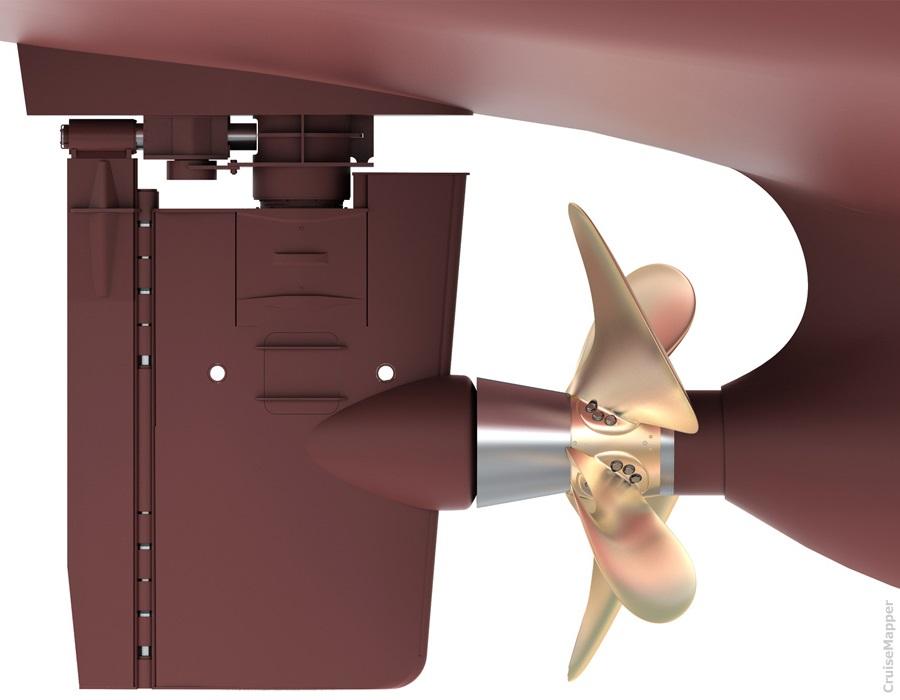
Hurtigruten was compensated with ~80% of its total investment in Promas Lite marine propulsion upgrades as the Norwegian Government has this NOx fund encouraging shipowners and operators to upgrade their vessels and invest in new marine technologies that reduce NOx emissions. The Promas Lite propulsion future clients, besides passenger ships, are marine vessels like fishing and freighter ships.
After Norwegian Spirit (the first ship in NCL fleet with installed Promas Lite in 2011), in May 2014 the Star Cruises ship SuperStar Virgo became Southeast Asia's first passenger liner with RR's Promas Lite propulsion. Fincantieri used Promas Lite propulsion for all Viking Ocean liners.
Cruise Ship Power
The cruise ship engine power is responsible for driving propellers, and the other possibility is producing electricity that is used subsequently to drive propellers. The engine's effectiveness depends not only on the design but also the ship's shape, weight, and size. Power is measured in horsepower traditionally - one horsepower equals 746 watts. The next photo shows the world's largest passenger ships' engine that powers each of the Royal Caribbean Oasis-class vessels.
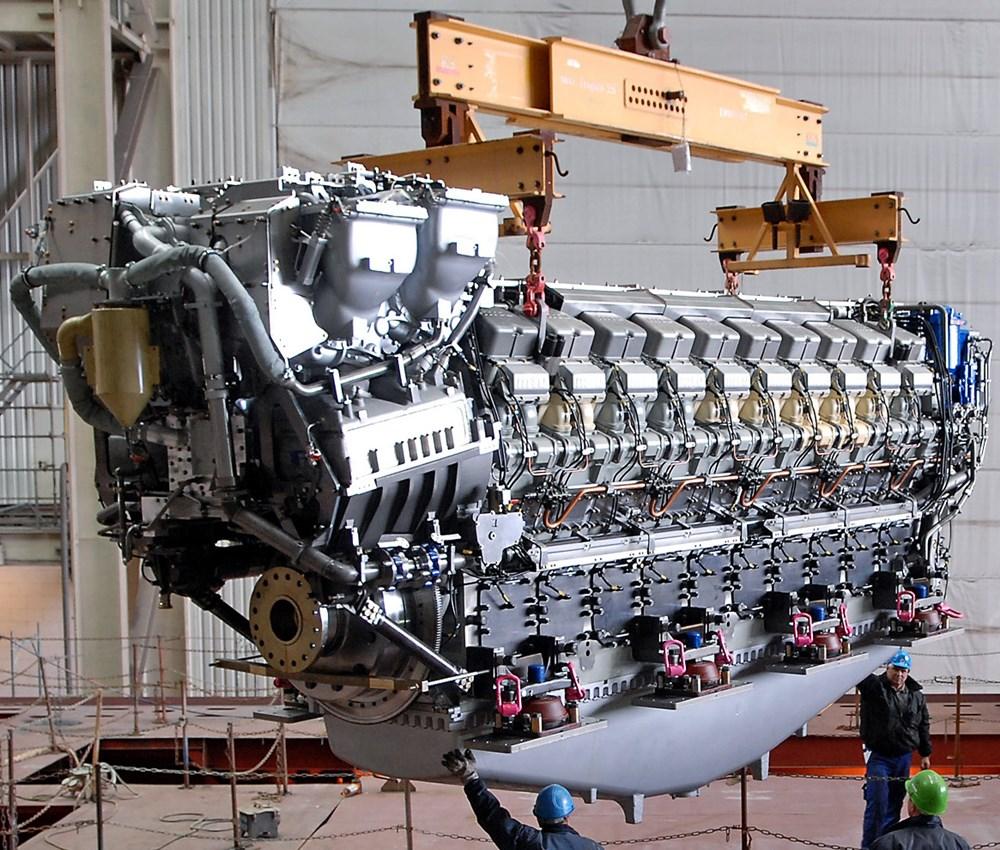
Marine steam engines
The cruise industry began in 1844, when ships were propelled by steam engines, performing the driving of propellers by using steam as working fluid. The largest passenger steamship (before hitting an iceberg on April 14, 1912) was the Titanic, powered by both reciprocating engines and turbines, able to generate 50,000 horsepower (37 megawatts).
Marine diesel engines
Usually, ships are powered by four or five generator sets (medium-speed, 500 revolutions per minute), fueled by diesel and creating 8-10 MW energy each. The power density of marine diesel medium-speed engine is 80 kilowatts per cubic meter. Ships that use diesel engines are required to carry exhaust-treatment systems and catalytic-reduction equipment to reduce the environmental impact.
Marine nuclear power engines
The building of the US first and only merchant nuclear-powered ship was commissioned in the 1950s by President Eisenhower. Of total cost $46.9 million, on the fuel core and nuclear reactor was spent more than $28 million. The ship operated only for five years (1965-1970) but due to the high running costs, its service was terminated.
Marine gas turbines
The first company that fitted cruise vessels with gas turbines, was Royal Caribbean. Gas turbines are greener than diesel engines and allow ships to sail with reduced inventory and smaller maintenance crew. Gas turbines drive generators which in turn provide electricity to propeller motors. They recover heat from gas turbines' exhaust, which then is used to produce the electricity needed for onboard services (air conditioning, water heating).
Rolls Royce is the manufacturer of the world's largest GAS marine turbine "Rolls-Royce MT30". The turbine will provide the immense 109 MW of power for the 2 propellers, all the weaponry, radars, command sys, etc. of the new generation UK aircraft carriers of the Queen Elizabeth class. To this class belong HMS Queen Elizabeth (2017-commissioned) and HMS Prince of Wales (2019-commissioned), each of them with a total power consumption of 80 MW.
Gas-turbine cruise ship power system
The first large vessel to use a new gas-turbine cruise ship propulsion system was Celebrity Millennium . This system will be more frequently used in new cruise ship buildings . It's innovative and, besides new activities available, the economy of scale, marketing, represents an important element of ship design. System's advantages include:
- lower vibrations and noise level, better comfort, lower probability of failure;
- lower exploitation costs because of the easier maintenance;
- nocive emissions reduction, which is partially owed to gas oil instead of fuel (-90% oxide of sulfur, -80% oxide of azote).
- considerable gain of weight and volume, especially when with Azipod marine propulsion system (900 tons, 70 cabins added).
Gas turbines at this time are only interesting in the building of high-speed ships (warships, and especially aircraft carriers, or fast passenger vessels - Millennium max speed is 25kn), because of the better diesel output in lower speeds and higher price of gasoil instead of fuel for diesel engines.
Gas turbine cruise ship propulsion systems are able to avoid pre-heating systems needed for fuel in classic installations (risk of fire!), as they use gasoil, Celebrity's Millenium-class and RCI's Radiance-class use such turbine powerplants. The next photo shows Celebrity's Solstice-class ship propulsion (the 4 aft azipods, and the underwater hull shape).
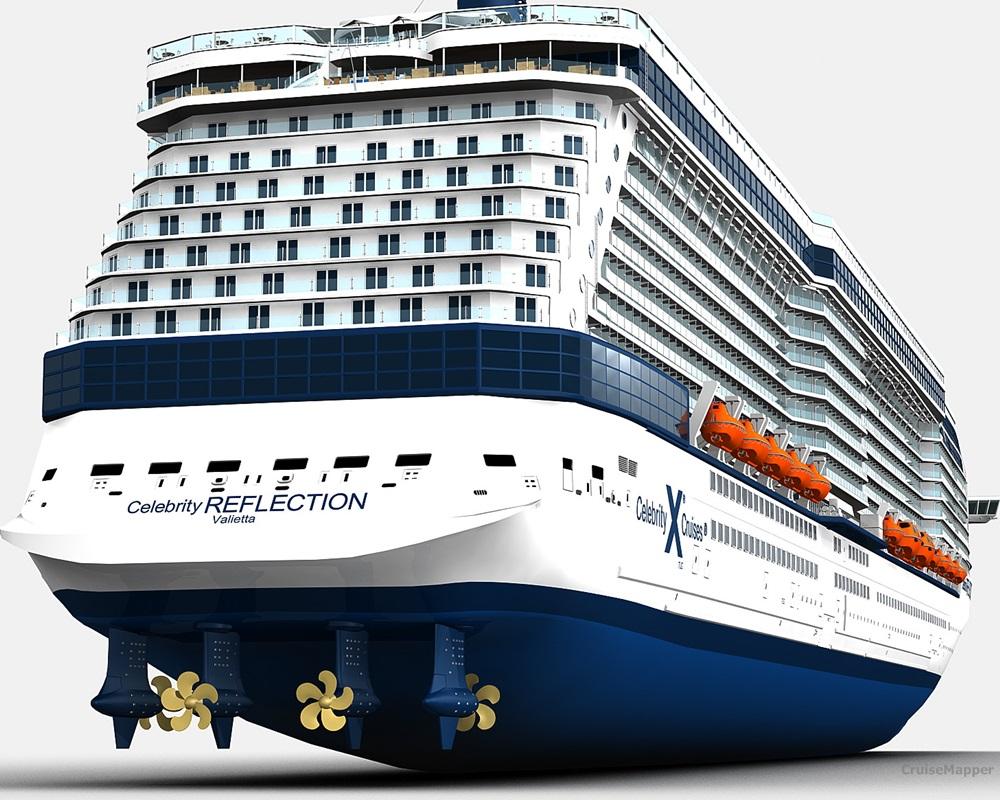
LNG-powered cruise ships
In June 2015, Carnival Corporation announced the company's contract with Fincantieri to build four LNG-powered vessels with the industry's largest passenger capacity. This was part of the order with Meyer Werft and Fincantieri for a total of 9x units to be built in the period 2019-2022.
The four newbuilds became the industry's first LNG (Liquefied Natural Gas) powered vessels using LNG in their hybrid engines. The gas is stored in the ship and used to generate all needed power at sea. The engines are not exclusively LNG, but "dual fuel" (capable of burring both liquid marine fuel and natural gas). This design is for saving onboard space (reducing fuel storage space required).
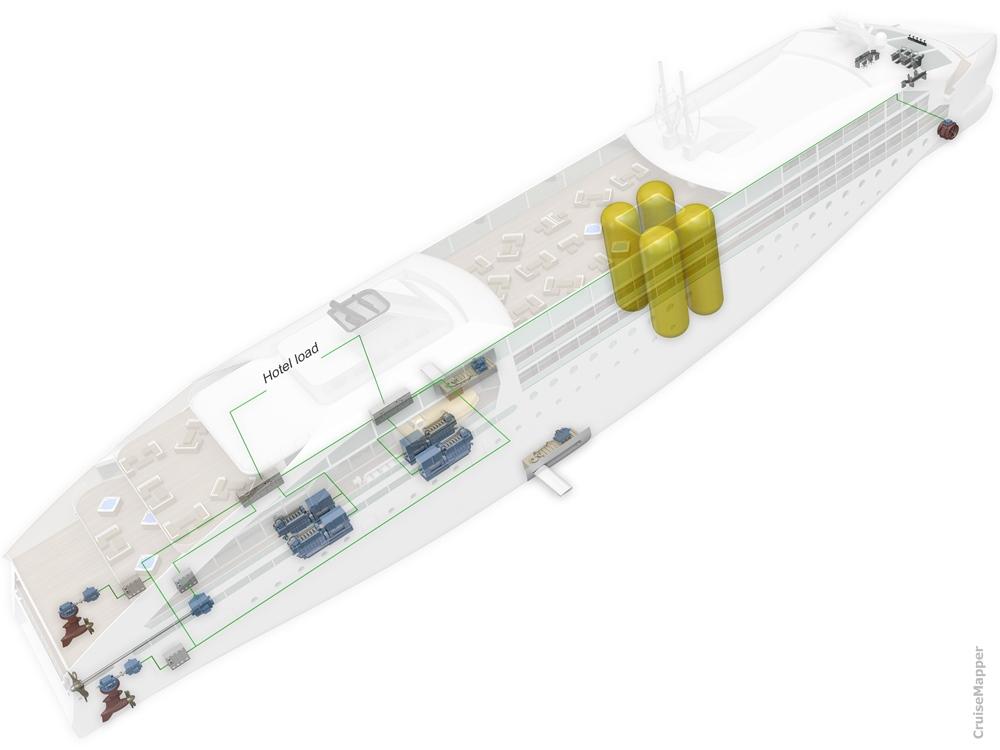
LNG is natural gas, which consists of 90% methane and 10% ethane. When cooled to -160 C, it passes from gas to liquid, and its volume decreases over 600 times, making it very efficient for distribution. Long-distance LNG transportation is via dual-hull gas carriers. Short-distance LNG transportation is via trucks or smaller vessels (also barges) fitted with high-pressure tanks.
Gas fuel eliminates all the bad emissions - soot and sulfur oxides. In April 2016 MSC Cruises announced its contract with STX France for up to four LNG-powered ships with GT over 200,000 tons each. For comparison, the Oasis of the Seas is 225,000 GT tons. The new MSC ships have 5400 passengers capacity at double occupancy each. The first one is scheduled for delivery in 2022. Its power plant will be based on a new prototype engine.
Using LNG to power large cruise ships is a relatively new (2016) concept. Due to LNG tanks' large sizes, this fuel is used usually on smaller passenger shipping vessels ( ferries ) operating on short crossing itineraries. LNG bunkering facilities available in ports are very few. Compared to other fuels (including MGO / marine gas oil), LNG is purer (no unburned residues, fewer greenhouse gases), more efficient, stable and cheaper (reduces fuel costs). LNG technology also advances due to IMO's future maritime emissions regulations, especially in ports and while operating in environmentally sensitive destinations.
In comparison to pipeline gas, LNG is superior in quality - purer, with more methane and other energy content. Its chemical structure also has a stable composition that doesn't generate unburned residues, soot or any particulates. In addition, because the fuel is so clean, on LNG-powered ships maintenance intervals are doubled (over 25,000 hours / ~10140 days), as opposed to the standard MDO-powered 12,500 hours (520 days).
- All the world's major environmental organizations and the marine shipping industry joined for an explicit prohibition on the carriage of non-compliant fuels when the 0,5% sulfur cap takes effect in 2020.
- In January 2018, IMO announced that starting January 1, 2020, the marine fuels' max allowed sulfur content (outside Emission Control Areas) is reduced from the previous 3,5% to 0,5%. Unless marine vessels are using approved equivalent compliance methods, after Jan 2020 there is no reason for ships to use non-compliant diesel fuels.
- IMO's new sulfur cap's goal is to provide substantial health benefits by reducing marine fuels' sulfur content (SOx gases). At the same time, IMO's lowered cap significantly increases ships' operating costs.
The LNG cruise ship concept was first introduced by Wartsila (Finnish manufacturing company) and is based on drive shaft propulsion instead of azipods. The LNG tanks' location is in the upper deck area (right below the funnels). The Rolls Royce concept is based on azipods.
AIDAprima (2016) is one of the world's most technologically advanced cruise vessels. The ship rides on a cushion of air, thus reducing frictions and fuel consumption, The new technology is called MALS ("Mitsubishi Air Lubrication System"), allowing the liner to glide on an air bubbles carpet.
The ship's 4 main engines are dual-fuel (heavy oil and LNG gas oil) thus reducing fuel consumption. The ship has an advanced filtering system that reduces stack emissions (greenhouse gases). The ship's propulsion features 1 pair of stabilizers and 2x ABB-pod drives (new XO-Pod series, power output per unit: is 3 MW). The total power output is 48 MW. AIDAprima is also the world's first-ever "LNG cruise ship" as it uses LNG fuel supply while berthed in ports.
For its LNG-bunkering operations in Florida (at homeports PortMiami and Port Canaveral ), CCL-Carnival partnered with Royal Dutch Shell plc as fuel supplier for the liners Mardi Gras (2021) and Celebration (2022).
AIDA's LNG-powered cruise ships
The AIDAprima ship's first successful test run for LNG supply was in Hamburg Germany on May 7, 2016. While berthed, the ship was successfully provided with LNG at all the itinerary's ports of call (Hamburg, Rotterdam, Le Havre, Southampton, Zeebrugge).
- The company's statistics show that the AIDA ship spends about 40% of its operating time in ports. Compared to using conventional marine diesel (0,1% sulfur content), by using LNG, the vessel's emissions were considerably reduced even further. Sulfur oxides and soot particles were prevented completely (while in port), nitrogen oxide emission was reduced by up to 80%, CO2 emissions were lowered by 20%.
- AIDA ships (produced by Shipyard Papenburg ) are 100% LNG-powered. AIDA invested in research and testing of LNG cruise ship technologies since 2015. In 2013, AIDA collaborated on LNG hybrid barges with Becker Marine Systems. The innovative and flexible solution is used on ships moored in Port Hamburg.
- Since May 30, 2015, AIDAsol is regularly supplied with low-emission LNG power at Hamburg's Hafencity Cruise Terminal.
- AIDA ships use just 3 liters (0,8 US gallons) of fuel on average per person on board for a 100 km (62 ml) trip. This was confirmed by an independent expert study in 2012. Following the implementation of new technologies and economical handling of resources, the company's statistics for 2016 (over 2012) showed reduced energy consumption (9% per person onboard), reduced water consumption (7,2% pp) and reduced CO2 emissions (7,7% pp).
Hurtigruten ships
In April 2018, the Norwegian cruise and ferry company Hurtigruten announced a USD 150 million fleet renovation project. Almost all vessels will be upgraded with new hybrid powerplants that combine LNG-engines and batteries.
For the project was contracted Rolls-Royce Marine, initially for 6 ships plus optional another 3. The program's completion was scheduled before January 1, 2021. The project also includes all vessels to be upgraded with shore power capabilities.
Dual-engine ferries (LNG-MDO)
The next scheme shows the dual-engine powerplant (Wartsila) and propulsion (Azipod) of the cruise ferry Tallink Megastar . This ship is the biggest "floating superstore" on the Baltic Sea, featuring a 2-deck retail shopping complex and the unique self-service option called "Q-shopping". The RoPax vessel uses LNG as prime fuel and MDO (marine diesel oil) as secondary fuel.
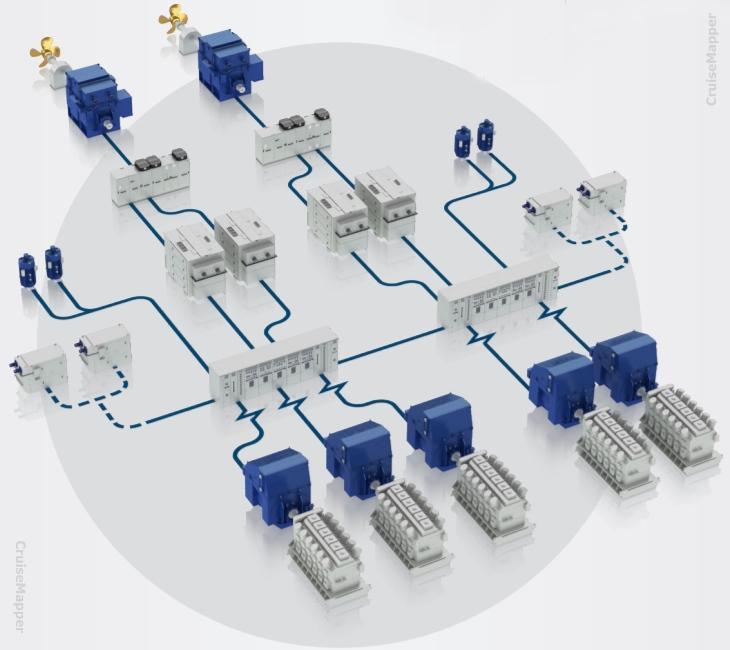
The ship is powered by a total of five Wartsila dual-fuel engines - three 12-cylinder (model 12V50DF, combined output 34,2 MW) plus two 6-cylinder (model 6L50DF, combined output 11,4 MW). Ferryboat's total power output is 45,6 MW. Its propulsion system includes two Wartsila fixed-pitch propellers with twin propeller shafts. Navigation systems are also Wartsila-made, including NACOS Platinum (integrated vessel control system).
The power generated by the main engines/powerplant produces electricity that is used from the propulsion motors, as well as all auxiliary systems and hotel functions. This innovative maritime technology allows the engines to be started and stopped depending on the onboard electricity demand, which additionally improves fuel efficiency.
Vessel's hull is ice-strengthened (class 1A). Rudders are from Becker Marine Systems. When compared to traditional marine engines, in gas mode, the ship's engines produce 1/4 less COx, 2/3 less NOx, zero SOx and no soot particles.
The onboard LNG system consists of 2 bunker stations, 2 horizontal LNG storage tanks by Linde (cryogenic, vacuum-insulated, stainless steel, total gas volume 600 m3), double-walled bunkering lines, pipelines (acid-proof stainless steel), special pipe fittings, gas distribution system, steam boilers. All the ship's electrical equipment is certified "explosion-proof". The LNG is stored at temperatures -160 Celsius (-256 Fahrenheit) and under pressure 4-6 bars.
ABB supplied the vessel's power and electric propulsion systems, as well as the Octopus (smart energy management system). While mechanical propulsion is optimized for a single-speed, electric propulsion is based on rotating speed control resulting in energy efficiency at all speeds. ABB's propulsion also improves passenger comfort as the ship runs much more quietly and smoothly. ABB's Octopus marine technology allows real-time monitoring of the vessel's energy (and fuel) consumption. Based on the collected data, the software suggests optimal performance recommendations.
Spain's first LNG-powered cruiseferry was Hypatia de Alejandria (2019) owned by BALEARIA .
Wind-assisted propulsion
On April 12, 2018, the VIKING LINE -owned ferry Viking Grace became the world's first-ever passenger ship equipped with a rotor sail utilizing wind power. This also made it the world's first hybrid vessel that uses both wind power and dual-fuel (diesel-gas) engines.
"Rotor Sail Solution" is an innovative technology developed by the company Norsepower Ltd (Finland) in 5 years. It reduces fuel consumption and also COx emissions up to 900 tons per year (depending on wind conditions).
The cylindrical rotor sail has a height of 24 m (79 ft) and a diameter of 4 m (13 ft). The technology is based on the "Flettner rotor" (patented by Anton Flettner in 1922) and uses the so-called "Magnus effect" - the spinning rotor (rotating cylinder) drags airflow faster around one side. This creates pressure/speed difference that moves it in the direction of the opposite (lower-pressure) side, creating a force at a right angle to the direction of the wind. This wind-assisted propulsion power drives the ship forward. Unlike traditional cloth sails, the rotor needs no furling (stowing), reefing (reducing sail's area) or line-tending. The rotor sail system is automated and shuts down when unfavorable changes in wind force or direction occur.
Added to the dual-fuel engines, the new technology makes Viking Grace one of the world's most environmentally-friendly passenger ships, operating with very low levels of emissions and noise. Norsepower's wind propulsion system was also installed on VIKING LINE's newest vessel (still unnamed) scheduled for delivery in 2020. The China-built ferryboat is equipped with two Norsepower-produced rotor sails, doubling its wind power potential.
Ship's powerplant includes 4x Wartsila engines (model 8L50DF, total power output 30,4 MW). Propulsion is diesel-electric (2x shafts with fixed-pitch propellers) and wind-assisted (with 1x rotor sail). Engines are dual-fuel (MDO-LNG). As gas tanks are larger than marine fuel tanks. they need 6 times more space. To save hull space, LNG tanks are located on an open deck. LNG tanks are two (type C / vacuum insulated), each with capacity 200 m3 and weight 140 tons (LNG weight 85 tons per tank).
MS Viking Grace is also the world's first ship with the energy recycling system "Ocean Marine" (developed by Climeon AB / Stockholm-based company). The system converts the excess heat (generated by engines and exhausts) into clean (emission-free) electricity with an annual capacity of 700,000 kWh. This electricity is primarily used on cabin decks (including for heating, hot water, lighting). The technology uses heat exchangers that evaporate a carrier fluid circulating in a closed system. This gas (at 2-bar pressure) drives a turbine, then a 100 kW generator produces electricity. After that, the gas is cooled (in a vacuum chamber) and liquefied. Cooling is rapid, as the cold fluid is sprayed out. Then Heat exchangers cool the carrier fluid to temperatures around 20 C / 68 F.
Cruise Ship Fuel Consumption
How much fuel do cruise ships use.
Cruise ship fuel consumption depends on the ship's size. For most vessels, the average consumption is 30-50 miles on a fuel gallon. This will be also determined by other factors using fuel. Ships' gas mileage varies depending on the type and size of ship, the number of passengers on board, and other factors. Larger ships need more fuel to move through the water.
RMS Queen Mary uses 6 tons of marine fuel per hour. Celebrity Eclipse gets 56 feet to the gallon. MS Zuiderdam - .0130 miles per gallon (0.34 tons fuel per mile). This may not seem very good mileage at first glance, however, cruise ships are moving at once thousands of people whereas a car is moving a few.
Nearly all contemporary cruise ships are powered by electricity (motors turn propellers). It powers the air conditioning systems, lights and all other appliances aboard the ship. Most vessels produce the electricity they need by using diesel engines. Some use gas turbine engines. Others use a combination of the two. HFO (heavy fuel oil) is used by diesel engines, while MGO (marine gas oil) is used by gas turbine engines. The MGO is similar to the jet airplanes' fuel.
Speed affects cruise ship fuel consumption because to go faster, vessels must increase the electricity flow to motors. Thus more engines are employed, and it, in turn, increases fuel consumption. For example, Queen Mary 2 consumes 237 tons MGO and 261 tons HFO a day when at full speed. After a certain point, the rate of return decreases from adding engines, because if a ship can manage 17 knots by two engines, it doesn't mean that four engines are going to produce 34 knots.
Cruise companies employ new technologies in order to reduce fuel consumption. Ship's hull, for example, can be applied by silicon coating in order to reduce friction as the ship goes through the water. Friction reduction on Celebrity Eclipse is 5%. Another experiment is LED lighting, using less energy and producing less heat (thus is reduced the demand for electricity and air conditioning). Celebrity Solstice-class vessels have solar panels' field over the AquaSpa pool area. This not only provides shade for the pool area but produced by solar panels electricity is used to decrease the electricity demand from the engines.
RMS Queen Mary 2 is equipped with exhaust gas economizers, using waste heat from engines to produce steam. Then steam is used to heat fuel and QM2 hotel accommodations, laundry, galleys. This reduces the energy amount that has to be produced by ship's engines. The Promas Lite system (mentioned above) generates cruise ship fuel savings in the range of 5-15% depending on the operation type and the actual performance of the ship's existing propeller.
How marine ships fuel consumption increases at higher speeds? Next infographic shows the speed-fuel consumption relation on container ships (their sizes are measured in TEU-containers/20 ft equivalent units), which are similar by speeds and even gross tonnage to cruise passenger ships.
Cruise Ship Pollution
Today cruising is one of the most popular vacations, but there are significant environmental downsides. Mega-ships burn the dirtiest fuel in the world, even if they are sitting in port. Asthma, cancer, respiratory illness, heart disease, are the results of burned in ports nasty bunker fuel.
Shore-to-Ship Power Supply
Those who support the cruise industry point out that cruising has never been more popular. However, more ships generate more pollution. A solution is to have docked vessels plug into the port's shore power grid. Most of the world's largest cruise ports have such dockside electrical hookups, reducing bad emissions by up to 95%.
Aka "cold ironing" and "shore-to-ship power", shore power capability allows berthed cruise ships to shut down their diesel engines (main and auxiliary) and plug into city's electrical grid, using locally-produced electricity for all shipboard equipment and services - including cooling, heating, lighting, emergency, etc. The technology greatly reduces exhaust emissions in seaports. Next video animation reviews this technology.
TUI Cruises Ships Environmental Report
TUI published the company's environmental impact report (first of its kind) including environmental objectives and TUI strategy for a 5-years period. TUI said it planned to issue reports every 2 years. According to it, in 2012 TUI reduced by 3.7% per nautical mile its fuel consumption, and expects further 5% reduction, reducing CO2 emission at the same time by 0.5 kg to 0.55 kg per traveler.
Energy efficiencies are the key to reduce fuel consumption, CO2, and other emissions, and contribute to climate protection. Mein Schiff 3, for example, is expected to feature special energy management systems that help to consume 30% less energy than comparable size ships. TUI is focused on reducing recycling and waste, too. In 2012, TUI reduced the waste amount to 10,7 L (per passenger day), which is 27,8% less (over 2011). In 2012, TUI used 54,463 tons of fuel, including 9,732 tons LSFO (low sulfur fuel oil), 40,880 tons HFO (heavy fuel oil) and 3,851 tons MDO (marine diesel oil). Fuel consumption was 0,367 tons per nautical mile.
All new TUI ships are built to the latest standards with environmentally-friendly marine technologies. These vessels, both as design (hull and superstructure) and implemented technologies, are highly energy-efficient. Each consumes 1/3 less energy compared to most cruise liners. The advanced exhaust cleaning system uses a catalytic and scrubber converter. This technology allows sulfur emissions to be reduced by 99%, and NOx emissions - by 75%.
All-electric passenger ships
In May 2019, the US company "Maid of the Mist" ordered ABB two new all-electric vessels for the company's Niagara Falls tours. Both catamarans are 100% emission-free being powered by high-capacity batteries. Each ship is fitted with two battery packs (combined capacity 316 kWh / 563 HP output). The electricity is provided by 2 fully-independent power systems and split evenly between the 2 hulls.
Shoreside battery charging takes just 7 min (per ship). The powerplant is controlled by ABB's PEMS (Power and Energy Management System), which also optimizes the onboard energy use. Ships' batteries are charged using hydropower (water-generated electricity), which as of 2019 accounts for ~7% of the USA's total electricity production. In addition to the shoreside charging connection, ABB supplied the newbuilds with switchboards, motors, integrated control systems and ABB Ability's Marine Remote Diagnostic System (24-hour equipment monitoring and predictive maintenance).
Battery power is used during turnaround navigation in ports when the onboard diesel-electric generators are switched off. For ferry batteries (fabrication, delivery, and installation) is often contracted the Canadian company Corvus Energy (Richmond BC) - one of the world's largest manufacturers and suppliers of energy storage solutions (ESS) for the maritime industry. The company provides ESS to hybrid and all-electric ferries. As of 2019, Corvus Energy delivered its innovative product line "Orca ESS" to 200+ vessel conversion/upgrade projects, totaling 200+ MWh.
At the following tag-link can be found listed all CruiseMapper's news related to propulsion-power accidents .
This cruise vessel technology-related survey is integrated with our articles on passenger ships building and safety , and the statistical ones about registry/flag-states , cost to build , speed , passenger capacity . All ship links redirect to the vessel's "itinerary-schedule-current position" page.

Quick Links
- Case Studies

- Our Services
- Online Marketplace
The Complete Guide to Propellers and Their Upkeep on Cruise Ships

Table of Contents
Cruise ship propellers are a vital component of the maritime industry, providing propulsion to large vessels in the open sea. These propellers have evolved, with technological advancements increasing efficiency, reliability, and safety. In this article, we will explore cruise ship propellers.

What are Cruise Ship Propellers, and How Do They Work?
Cruise ship propellers are essential components that enable the vessel to move through the water. The water flows over the edges and creates a pressure difference between the front and back of the propeller blades, which makes a force that moves the ship forward. The faster the propeller rotates, the greater the thrust, allowing the boat to travel faster.

Types of Cruise Ship Propellers
There are several types of cruise ship propellers, including:
- Fixed-Pitch Propellers: These have a fixed blade angle, making them simple and reliable but less efficient.
- Controllable-Pitch Propellers: These propellers allow the angle of the blades to be adjusted while the ship is in motion, making them more efficient.
- Ducted Propellers: These propellers have a shroud or duct around the blades, which increases their efficiency by directing the water flow more precisely.
- Azimuthing Propellers: These propellers can rotate 360 degrees and provide excellent maneuverability, making them ideal for large cruise ships.
Cruise Ship Propellers Applications in the Maritime Industries
Cruise ship propellers are vital components in the maritime industry and are used in several applications, including:
- Passenger Transport: Cruise ships use propellers to transport passengers from one destination to another.
- Cargo Transport: Cargo ships rely on propellers to move large volumes of goods across oceans and waterways.
- Fishing: Propellers are used in fishing vessels to tow nets and trawls and to maneuver the boat in the water.
- Military: Propellers are also used in naval vessels, including submarines, destroyers, and aircraft carriers, for propulsion and maneuverability.

Cruise Ship Propeller Maintenance
Propeller maintenance is crucial to ensure cruise ships’ safe and efficient operation. Here are some key points to consider:
- Regular inspections and propeller cleaning are necessary to avoid accumulating marine growth and debris affecting performance.
- The propeller blades and hub should be checked for signs of damage and corrosion.
- Lubrication of the propeller shaft is necessary to reduce friction and prevent wear and tear.
- Regular maintenance of the shaft seals and bearings is essential to prevent water ingress and failure of the propulsion system.
Cruise Ship Propeller Repair Tips to Ensure Long Service Life
Proper propeller repair and maintenance can extend the life of cruise ship propellers. Observe the following advice:
- Propeller repair should only be performed by experienced professionals who use quality materials and follow proper repair procedures.
- Propellers should be balanced to reduce vibration and ensure smooth operation.
- Propeller coatings can protect against corrosion and fouling, leading to reduced performance.
- Routine inspections and repairs can identify minor issues before they become significant problems.

How to Choose the Right Cruise Ship Propeller?
Choosing the correct propeller type can significantly impact a cruise ship’s performance and fuel efficiency. Here are some factors to consider:
- Ship size and weight: The size and weight of the ship can affect the required propeller size and pitch.
- Cruise speed: The ship’s desired cruise speed can determine the propeller’s number of blades and pitch.
- Engine power: The power of the ship’s engine can determine the required size and type of propeller.
- Material: Propellers can be made of different materials, such as bronze, stainless steel, and aluminum, each with advantages and disadvantages.
- Blade design: The blade design can impact the propeller’s efficiency, noise level, and vibration. Different blade designs, such as fixed-pitch or controllable-pitch propellers, may be more suitable for various ships.
How AI is Transforming Cruise Ship Propellers & Maritime Industry?
AI technology is transforming the maritime industry, particularly cruise ship propellers. Here are some ways AI is impacting this sector:
- Predictive Maintenance: Data received from sensors on the ship’s propellers is analyzed by AI algorithms to forecast when maintenance is required, saving downtime and maintenance costs.
- Performance Optimization: By analyzing real-time data, AI can optimize the performance of a ship’s propellers, improving fuel efficiency and reducing emissions.
- Safety: AI can help detect potential issues before they become critical, enhancing safety measures on cruise ships.

Advantages of Using Cruise Ship Propellers
Cruise ship propellers offer numerous advantages over other forms of propulsion. Here are some benefits of using cruise ship propellers:
- Efficiency: Propellers offer excellent fuel efficiency, making them a cost-effective choice for cruise ships.
- Control: Propellers provide excellent control over a ship’s speed and direction.
- Flexibility: Cruise ship propellers are suitable for various vessel sizes and types.
- Reliability: Propellers are a proven technology and are reliable for extended periods of use.
How does a cruise ship propeller work, and what are its advantages and disadvantages?
Like any technology, cruise ship propellers have pros and cons. Here are some pros and cons of using cruise ship propellers:
- Fuel efficiency and cost savings
- Flexibility and suitability for various vessel sizes
- Excellent control over the ship’s speed and direction
- Proven reliability
- Propellers can cause harm to marine life if not designed and maintained correctly.
- Propellers are not ideal for shallow waters or regions with debris, such as ice.
- Propellers require regular maintenance to ensure optimal performance.
- Propellers can be noisy and cause vibration, which can be disruptive to passengers.

The propulsion of big vessels in open water depends on cruise ship propellers, making them an essential component of the maritime industry . Efficiency, dependability, and safety have all improved as a direct result of developments brought about by technological progress. It is vital to execute routine maintenance and ensure the design is sound to ensure optimal operation and reduce the negative influence on marine life.
Related FAQs
How do cruise ship propellers work.
Cruise ship propellers work by converting the rotational force of the ship’s engines into a forward or backward motion. The propellers rotate, creating thrust that moves the vessel through the water.
How many propellers does a cruise ship have?
The number of propellers on a cruise ship varies depending on the size and design of the vessel. Most large cruise ships have two to four propellers.
What materials are cruise ship propellers made of?
Cruise ship propellers are typically made of bronze or stainless steel due to their corrosion-resistant properties and durability.
How are cruise ship propellers maintained?
Cruise ship propellers require regular maintenance, including cleaning, polishing, and repairing any damage or wear. Maintenance is often performed during scheduled dry dock periods.
What is pitch control on cruise ship propellers?
Pitch control allows the angle of the propeller blades to be adjusted, controlling the amount of thrust generated by the propeller. This helps to optimize fuel efficiency and reduce emissions.
How do cruise ship propellers impact marine life?
Cruise ship propellers can cause harm to marine life if not designed and maintained correctly. Proper propeller design and maintenance can help reduce the risk of damage to marine life.
Can cruise ship propellers be noisy?
Yes, cruise ship propellers can be loud and cause vibration, which can be disruptive to passengers. However, advancements in technology have led to quieter and more efficient propellers.
Posted by Orbitshub
Published on 2nd June 2023
Category(s) Maritime
Previous Silent Guardians of the Deep: Exploring the Evolution of Submarine Technology
Next oil spil – catastrophe at sea and its devastating impact on the environment, related posts.

Exploring the INS Vagir Submarine: A Guide to the Unknown

Exploring Ins Vagsheer: A Journey to Remember
[…] Blades: These curved surfaces generate lift and thrust, converting the rotational power from the engine into forward or reverse motion. […]
[…] the propeller as the ship’s paddle, propelling it forward with every turn. We’ll explore the science […]
Leave a Reply Cancel reply
Your email address will not be published. Required fields are marked *
Save my name, email, and website in this browser for the next time I comment.
- InVideo: Complete Video Solution in One AI Tool
- Securicord: Easily Save the Cord Blood of Your Baby
- Survey Junkie: Take Surveys to Get Paid & Make Money Online
- The Ultimate Guide to Choosing the Right Web Hosting Provider
- Smartproxy: The Best Proxy Provider & Data Collection Solutions
- Clear Books: The Best Online Accounting Software for UK Businesses
- TicketNetwork: Buying Tickets Made Easy
- Navigating TV Viewership Trends: Insights for Marketers
Propulsion of Cruise Liners and Other Ships – How These Floating Sea Mammoths Move
Welcome aboard, maritime enthusiasts! Ever gazed at a massive cruise liner cutting a majestic path through the ocean and wondered, “Just how does that behemoth keep moving?” You’re not alone. In this blog post, we dive into the fascinating world of ship propulsion – the force that keeps these sea leviathans afloat and moving. The importance of propulsion systems in the movement of cruise liners and other ships can’t be overstated. In this journey, we’ll navigate through the history of ship propulsion, swing by the various types of propulsion systems, and explore how they work. We’ll also take a look at the innovating strides in modern ship propulsion, and discuss the environmental considerations that are steering the future of this technology. Strap in, and let’s set sail on this enlightening voyage!
Propulsion, in the simplest terms, refers to the action or process of pushing or driving an object forward. In the context of ships and cruise liners, propulsion is the mechanism that enables these massive structures to move across bodies of water. It involves harnessing various forms of energy to create a force that propels the ship forward, overcoming factors such as water resistance and ship weight. Thus, propulsion is a vital element in maritime travel, acting as the ‘engine’ that powers the movement of ships.
The importance of propulsion in cruise liners and other ships cannot be overstated. Primarily, it enables these enormous structures to navigate across vast oceans, carrying passengers or cargo from one point to another. Without it, ships would be static objects, incapable of serving their primary functions. But it’s not just about movement, propulsion systems also play a crucial role in ship maneuverability. They allow ships to adjust their course, avoid obstacles, dock, and navigate through narrow passageways. Moreover, the type of propulsion system can also significantly impact a ship’s fuel efficiency, operational costs, and environmental footprint, making it a critical factor in the overall performance and sustainability of maritime operations.
Ships have been in use as a means of transport since early times. Ships are believed to have originated from rafts. Earlier ships used oars and were moved using sheer manpower. Later they were powered by wind with the help of sails. Then steam, diesel, and now even nuclear power are being used. Ships have undergone tremendous change over the years. The basic structure and parts of a modern cruise liner are shown in the figure.
Various parts of a modern ship. 1. Funnel 2. Stern 3. Propeller and rudder 4. Portside (right side is starboard side) 5. Anchor 6. Bulbous bow 7. Bow 8. Deck 9. Superstructure
Motions of ships require heavy power generation and an effective propulsion system. Without suitable means of propulsion, ships will be just floating iron mountains and nothing more. What causes a ship to move through the water? Propellers have this responsibility.
The propulsion of ships normally occurs with the assistance of a propeller. It has three or four (or sometimes even more in the case of propellers aimed at working under low noise conditions) blades. These blades are twisted and poking out at angles from a central hub (a rounded region on which the blades are attached). The hub is connected to a shaft which is connected to the ship’s engine. Usually, there will be two propellers and sometimes even more, and they are provided at the rear end of the ship. Propellers of ships and cruise liners are comparatively very large in size and require heavy torque for rotation.
How does a Propeller Work?
Sir Isaac Newton stated in one of his works “Actio est reactio”. This sounds very familiar. This is Newton’s third law. Propellers work based on Newton’s third law which states that for every action there is an equal and opposite reaction. When the propeller is made to rotate, it draws water from the front of the ship and accelerates it towards the rear or backside of the ship. Because of the momentum imparted by the propeller to water, it experiences an equal backward momentum. In other words, water exerts a force on the propeller in the opposite direction. This force is called thrust. The thrust developed on the propellers is transferred to the ship’s structure through the main shaft which ends in a thrust bearing. In this way, propellers generate sufficient thrust to move the ship forward. Explanation of propulsive force generated by a propeller is very complex and is beyond the scope of our present topic. Earlier ships used rudders to help them steer. A rudder is basically a large flap provided at the back of the propeller. For steering, the rudder is inclined at an angle which changes the direction of expelled water. This results in a change in the direction of reactive force (sideways). This in turn helps the ship to turn.
Engine: The Heart of the Ship
Many engines were developed over the course of time to make ships faster and more efficient. Out of the many proposed theories steam engines and later diesel engines were put into practice. Turbines are also used sometimes in combination to generate sufficient power (also electricity for the ship). The workings of steam and diesel engines are explained below.
1. Triple-expansion steam engines
Earlier steam engines were of single expansion type (steam is made to expand only in one stage) but they were later modified to triple expansion types. Triple-expansion steam engines were the most common and advanced engines used in the early days. The chemical energy of coal is converted to thermal energy by burning coal to generate steam. This is done in very large boilers. Steam at high pressure from the boiler is supplied to the engine.
The engine basically consists of three cylinders. High-pressure steam
is supplied to the first cylinder. Steam expands pushing the piston down. The steam from the first high-pressure cylinder then goes to an intermediate cylinder where it again expands. The resulting low-pressure steam then goes to the last cylinder where it undergoes the final expansion. Steam is made to expand in three successive stages hence the name triple expansion engine. Triple expansion engines provided greater speed as well as better heat conversion (to mechanical energy). The pistons of the three cylinders are connected to the main propeller shaft and they work together to rotate the shaft as shown in the animation shown alongside.
ALSO CHECK OUT OUR OTHER ARTICLES
- Top 20 Engineering Websites
- How To Convert Load To Gcash (Step-by-step Guide in 2023)
- How to Increase tweets impression using Useviral
- Step-by-step Guide on How to Transfer Google Drive to Another Account
- Complete Guide on How to Cash-in in GCash – 2023
2. Diesel Engines
Diesel engines are nowadays widely used to power cruise liners and other ships. Diesel engines became increasingly popular because of their high output power, better efficiency and reduced fuel consumption. But the diesel engines used in ships are different from the ones used in other automobiles. As seen earlier the propellers are very large and hence rotating them requires very high power (or torque). So ships diesel engines are very large in size weighing up to 2000 tons! The working speed of these engines varies from 60 to 200 rpm and they use low-grade heavy fuel (Bunker C fuel). A typical diesel engine consists of a piston fitted in a cylinder arrangement. The number of cylinders varies depending on the power output required.
Working of Diesel Engines
Diesel engines used for ship propulsion are essentially 4 stroke engines. Their working involves the following sequence of processes, which are illustrated in the animation given alongside.
1. Air is sucked inside the cylinder during the downward motion of the piston because of the partial vacuum created within the cylinder.
2. This air is then compressed to very high pressure during the next upward stroke of the piston (here “stroke” means the motion of the piston within the cylinder).
3. At this instant diesel is sprayed in the form of fine droplets. Due to the high pressure inside the cylinder, diesel gets ignited. The air-fuel mixture undergoes combustion, expanding the gases which in turn push the piston down.
4. During the next upward stroke, the burnt-out gases are expelled out.
This cycle is repeated. Since there is a power stroke for every four strokes of the piston, the engine is called a four-stroke engine. The reciprocating motion of the piston is converted to rotational motion by means of a connecting rod attached to a crank (the rotating metal disc shown in the animation). The crank rotates the shaft which in turn drives the propeller. A number of pistons are connected to the shaft and they all work together to turn the shaft. The manner in which the pistons are connected is made clear with the animation shown alongside.
RMS Titanic: The Unsinkable Ship
RMS Titanic, the world’s largest, fastest, and most luxurious cruise liner at that time still comes to everyone’s mind when you first hear the term cruise liners. It was an engineering marvel at that time. In those days steam engines were used to run the ship. Diesel engines were not yet in use. She had two reciprocating engines and a turbine. The reciprocating engines were triple expansion type engines which have been explained above.
Steam generated in massive boilers and is fed to the engine. Exhaust steam from the engine is fed to a turbine. Steam is expanded within the turbine which causes the turbine to rotate. This rotating turbine drives a 4-blade propeller (17 feet diameter) situated at the center line of the ship. Each engine drove a three-bladed propeller (23.5 feet diameter) on the starboard and port side of Titanic. The reciprocating engines can be seen clearly in James Cameroon’s movie.
As we all know, the Titanic hit an iceberg and sank into the icy waters of the Atlantic during her maiden voyage. Immediately after sighting the iceberg the engines were put at full astern (made to work in reverse to create a breaking effect), but she couldn’t maneuver away for the ship was too close.
Advanced Propulsion Systems in Modern Cruise Liners and Ships:
Although propellers are still in use, they have undergone many technical changes. Nowadays, modern cruise liners are equipped with azimuth thrusters. Azimuth thrusters are simply the propellers attached to pods, but they are capable of rotating through 360 degrees. Hence they help ships to steer more quickly and effectively. The entire propeller is made to rotate at the desired angle in order to steer the ship. Azimuth thrusters removed the use of rudders in modern ships. This type of propeller system is used in Oasis of the Seas – the largest, most luxurious, and fastest cruise liner in the present world. The ship is capable of turning 360 degrees without any change in its position!! Had RMS Titanic been equipped with one of these, her story would have been quite different.
The evolution of ship propulsion systems over the years has been nothing short of remarkable. From the rudimentary reciprocating engines of the Titanic era to the innovative azimuth thrusters in modern cruise liners like Oasis of the Seas, these advancements have significantly enhanced navigational precision and efficiency. It’s intriguing to speculate how different the fate of Titanic might have been with today’s technology. As we continue to push the boundaries of marine engineering, who knows what the future of sea transportation might hold? We can only anticipate even more incredible breakthroughs and improvements in this field.
Click here for more!
Related Posts

Functions of Fuel Injection Pumps
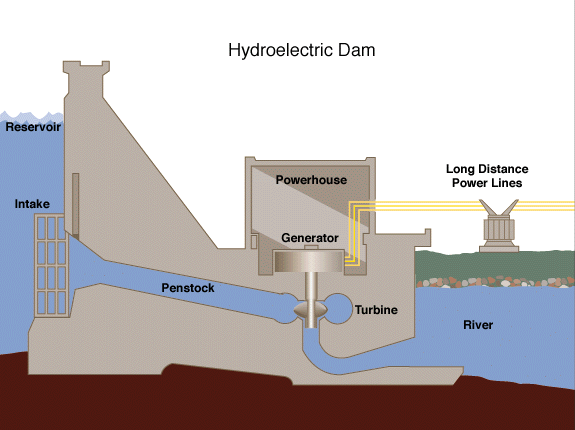
Hydraulic Turbines: Hydroelectric Power Generation & Working

Differences between WCDMA & CDMA2000
Leave a reply cancel reply.
Save my name, email, and website in this browser for the next time I comment.
Notify me of follow-up comments by email.
Notify me of new posts by email.
This story is over 5 years old.
Really big propellers are powering greener, smarter ships.

An inspector checks out the propeller on cruise ship Oasis of the Seas. Image: ABB
The Yamal icebreaker ship. Image: ABB
ONE EMAIL. ONE STORY. EVERY WEEK. SIGN UP FOR THE VICE NEWSLETTER.
By signing up, you agree to the Terms of Use and Privacy Policy & to receive electronic communications from Vice Media Group, which may include marketing promotions, advertisements and sponsored content.
- Fri 2024-04-19
- Advertising
- Wind and Wave

- Login / Register

- News Home Page
- Bookmarked News
- WorldWide News
- Technology News
- Miscellaneous News
- Articles Home Page
- Bookmarked Articles
- Fire & Safety Articles
- Regulations Articles
- Navigational Articles
- Machinery Articles
- Oil & Gas Articles
- Structural Articles
- Management Articles
- Our Services
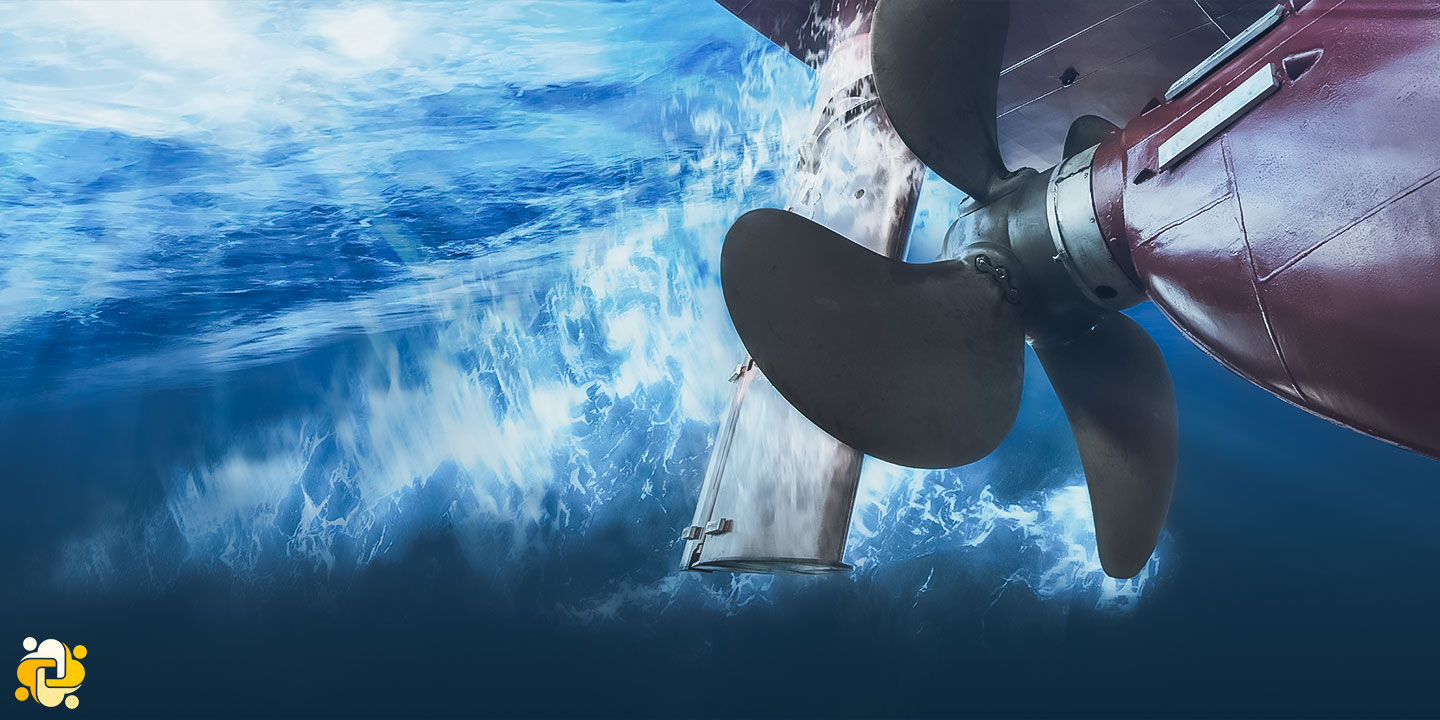
The Science of Ship Propellers: From Basics to Future Innovations

Introduction
In the world of maritime engineering, propellers play a pivotal role in propelling vessels through water, making them a cornerstone of ship propulsion. This technical article explores the fundamental principles of propellers, delves into various types of propellers, their materials and construction, and provides insights into future innovations in ship propulsion technology.
John Ericsson, hailing from the Swedish province of Vermland, can be credited as the inventor of the ship propeller. This groundbreaking invention found its way into the design of the iconic Civil War ironclad vessel, the Monitor.
Ericsson's journey into the realm of engineering began when he initially contributed to the planning of a Swedish canal. During his involvement with this project, he received tutelage in mathematics and the sciences, further fueling his passion for innovation. His dedication led him to enlist in the Swedish Army at the tender age of 17, where he engaged in topographical surveying.
In 1826, Ericsson embarked on a transformative chapter in London, showcasing the breadth of his engineering prowess. His achievements included advancements in power transmission through compressed air, pioneering new steam boiler designs, introducing condensers to enhance the range of marine steam engines, and developing engines for warships positioned below the waterline, offering protection against shellfire. His contributions extended to creating the steam fire-engine, a steam locomotive, and a device capable of extracting salt from brine, and pioneering superheated steam engines and the "caloric" engine.
Among his myriad inventions, Ericsson's most enduring legacy remains the screw propeller, a propulsion system that remains a cornerstone of maritime engineering. In 1839, he introduced propellers to vessels navigating canals and inland waterways, marking a significant milestone in marine technology.
Notably, Ericsson's innovative spirit extended to the construction of a formidable "big frigate" for the U.S. Navy, underscoring his dedication to advancing naval technology. His crowning achievement in naval engineering came with the design and construction of the Monitor, a vessel that played a pivotal role in the Union Navy during the Civil War. Impressively, he accomplished this feat within a mere 100 working days, solidifying his status as a pioneering figure in the annals of maritime history.
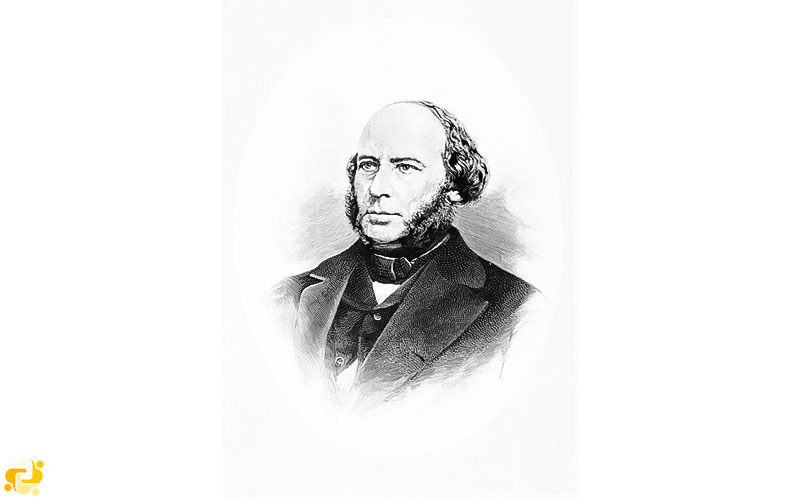
Figure 1 - John Ericsson
What is a propeller?
A ship propeller, often simply referred to as a propeller, is a crucial component of a ship's propulsion system. It is a rotating device with a set of blades that are strategically designed to generate thrust and propel the ship through water. Ship propellers are typically located at the stern (back) of the vessel and are immersed in the water.
The primary function of a ship propeller is to convert the mechanical power generated by the ship's engines into a forward or backward motion by pushing or pulling water. This action creates a reaction force in the opposite direction, adhering to Newton's third law of motion, which states that for every action, there is an equal and opposite reaction.
Material and Construction of Propeller
Marine propellers are made from corrosion-resistant materials as they are made operational directly in seawater which is a corrosion accelerator. The materials used for making marine propellers are an alloy of aluminum and stainless steel. Other popular materials used are alloys of nickel, aluminum, copper alloy castings and bronze which are 10-15 % lighter than other materials and have higher strength.
Propeller castings are classified as specified in below:
- High strength brass casting, Grade 1, CU 1
- High strength brass casting, Grade 2, CU 2
- Aluminum bronze casting, Grade 3, CU 3
- Aluminum bronze casting, Grade 4, CU 4

Table 1 – Chemical Composition of propeller castings, Classification rules
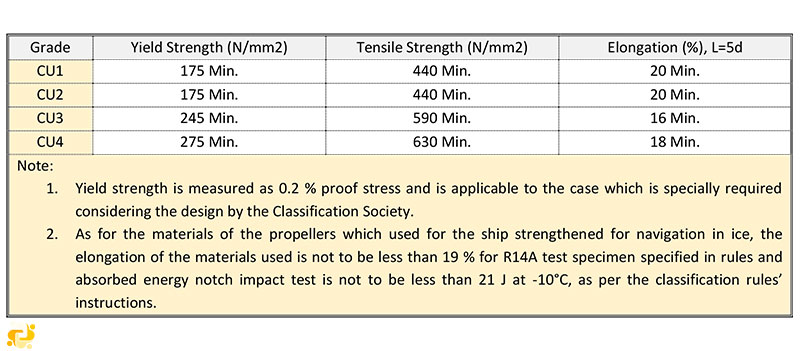
Table 2 – Mechanical Properties of Propeller Castings, Classification Rules
Types of Propellers
Propellers are be classified on the basis of several factors. The classification of different types of propellers is shown below:
Classification by Number of Blades Attached
Propeller blades come in various configurations, ranging from three blades to four blades, and sometimes even five blades. However, the most commonly used options are three-blade and four-blade propellers.
A three-blade propeller exhibits the following characteristics:
- It boasts a lower manufacturing cost compared to other types.
- Typically, it is constructed from aluminum alloy materials.
- Offers excellent high-speed performance.
- Provides superior acceleration when compared to other designs.
- However, it may not be as efficient for low-speed handling.
A four-blade propeller, on the other hand, demonstrates the following features:
- Its manufacturing cost is generally higher than that of three-blade propellers.
- Typically crafted from stainless steel alloys for enhanced strength and durability.
- Delivers commendable low-speed handling and overall performance.
- Exhibits better holding power in rough seas.
- Offers improved fuel economy compared to other propeller types.
In the case of a five-blade propeller, these characteristics are notable:
- The manufacturing cost is higher than all other propeller types.
- It tends to produce minimal vibrations compared to other configurations.
- Five-blade propellers excel in providing substantial holding power in rough sea conditions.
Finally, the six-blade propeller possesses the following attributes:
- It is associated with a high manufacturing cost.
- Similar to the five-blade design, it generates minimal vibrations.
- Six-blade propellers are known for their remarkable holding power in rough seas.
- They exhibit a reduced induced pressure field over the propeller.
- Large container ships are often equipped with five or six-bladed propellers for their enhanced performance in challenging maritime conditions.
Classification By pitch of the blade
Pitch of a propeller can be defined as the displacement that a propeller makes for every full revolution of 360 ̊. The classification of the propellers on the basis of pitch is as follows:
Fixed Pitch Propeller
The blades in the fixed pitch propeller are permanently attached to the hub. The fixed pitch type propellers are cast and the position of the blades and hence the position of the pitch is permanently fixed and cannot be changed during the operation. They are normally made from copper alloy.
Fixed pitch propellers are robust and reliable as the system doesn’t incorporate any mechanical and hydraulic connection as in Controlled Pitch Propeller (CPP). The manufacturing, installation and operational costs are lower than the controlled pitch propeller (CPP) type. The maneuverability of the fixed-pitch propeller is also not as good as CPP.
These types of propellers are fitted in a ship that does not have good maneuverability requirements.
Controllable Pitch Propeller
In a Controlled Pitch type propeller, it is possible to alter the pitch by rotating the blade about its vertical axis by means of mechanical and hydraulic arrangement. This helps in driving the propulsion machinery at constant load with no reversing mechanism required as the pitch can be altered to match the required operating condition. Thus the maneuverability improves and the engine efficiency also increases.
This drawback includes the possibility of oil pollution as the hydraulic oil in the boss which is used for controlling the pitch may leak out. It is a complex and expensive system from both installation and operational points. Moreover, the pitch can get stuck in one position, making it difficult to maneuver the engine.
However, the propeller efficiency for the CP propeller is slightly lower than the same size FP propeller due to the larger hub to accommodate the blade pitch mechanism and piping.
Installation tests of new ships’ propellers
When it comes to the installation of new ship propellers, a series of rigorous tests and inspections are essential to ensure their optimal performance and safety. Here, we delve into these crucial installation tests in more detail:
Balancing Tests
One of the fundamental aspects of propeller installation is the meticulous examination of its balance. Propellers must undergo both static and dynamic balancing tests to ascertain their stability and precision.
Static Balancing Tests: These tests are conducted to evaluate the propeller's balance while it remains stationary. Ensuring that the propeller is perfectly balanced when not in motion is critical for avoiding vibrations and undue stress on the propulsion system. Any imbalances discovered during static balancing tests are addressed promptly to prevent issues during operation.
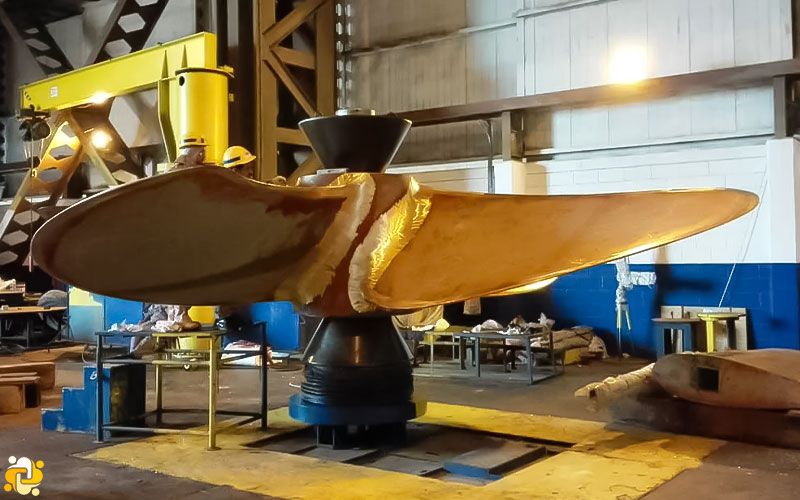
Figure 2 - Static Balancing Test
- Dynamic Balancing Tests: Dynamic balancing tests are particularly vital for propellers that will operate at speeds exceeding 500 revolutions per minute (rpm). These tests assess the propeller's balance while it is in motion, mimicking real-world conditions. They help identify any dynamic imbalances that might occur during operation, which can lead to vibrations and potential damage to the vessel. If issues are detected, corrective measures are taken to rectify them.
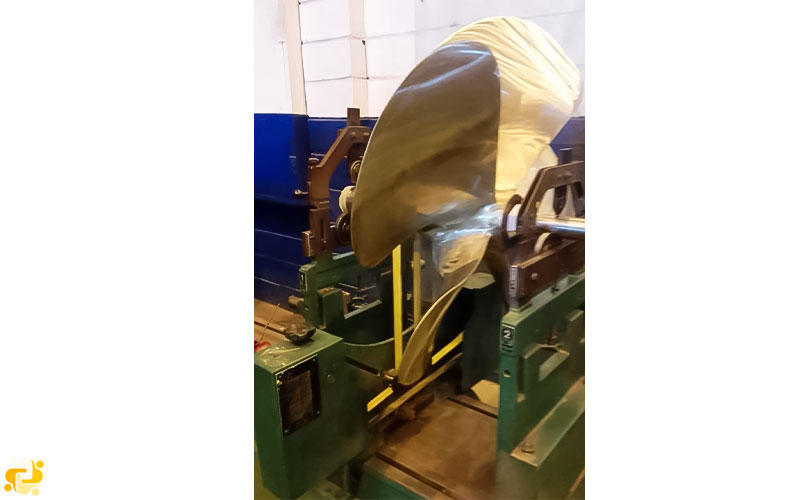
Figure 3 - Dynamic Balancing Test
Contact Tests
In cases where the propeller is force-fitted onto the taper of the propeller shaft cone, it is imperative to conduct contact tests. These tests focus on verifying the precise alignment and contact points between the propeller and the mating surfaces, such as the shaft cone. This meticulous examination ensures that the propeller is securely attached, minimizing the risk of slippage or misalignment during operation. Various methods, including contact-facing tests and other suitable means, are employed to assess the contact between these critical components.
Confirmation of Push-Up Length
For propellers that are force-fitted onto the propeller shaft without the use of a key, it is essential to confirm and record the push-up length. This parameter indicates the depth to which the propeller is fitted onto the shaft. Ensuring the correct push-up length is crucial for maintaining the propeller's optimal position and alignment. Any deviations from the specified push-up length can lead to inefficiencies, vibrations, or even damage to the propulsion system. Therefore, accurate measurement and documentation of this parameter are integral to the installation process.
A look to the future
By 2030, the marine industry is expected to see significant advancements in ship propulsion technology. One area of focus will be on reducing emissions and improving fuel efficiency. This will likely lead to the development of hybrid propulsion systems that combine traditional propellers with electric motors or alternative fuels.
Another area of focus will be on improving the maneuverability and speed of vessels. This could lead to the development of new types of propulsion systems, such as magneto hydrodynamic propulsion or air lubrication systems.
Additionally, there may be advancements in materials science that allow for the creation of more efficient and durable propellers. This could include the use of composite materials or 3D printing technology.
Overall, the future of ship propellers will likely see a combination of traditional and innovative technologies that prioritize efficiency, sustainability, and performance.
Three Innovative Propeller Types
Sharrow Propeller
The Sharrow Propeller is an innovative marine propulsion technology designed to enhance efficiency and reduce fuel consumption. Invented by Dr. James Sharrow and developed by Sharrow Marine over seven years, it features a unique blade design that reduces drag, increases thrust, and can lower fuel consumption by up to 15% compared to traditional propellers. This groundbreaking technology also offers improved vessel performance, quieter operation, and reduced emissions, making it environmentally sustainable. However, potential drawbacks include its initial cost, limited availability, ongoing testing for long-term durability, and compatibility concerns with certain vessels and engines. Despite these challenges, the Sharrow Propeller represents a significant advancement in marine propulsion technology and is likely to gain popularity in various marine applications.
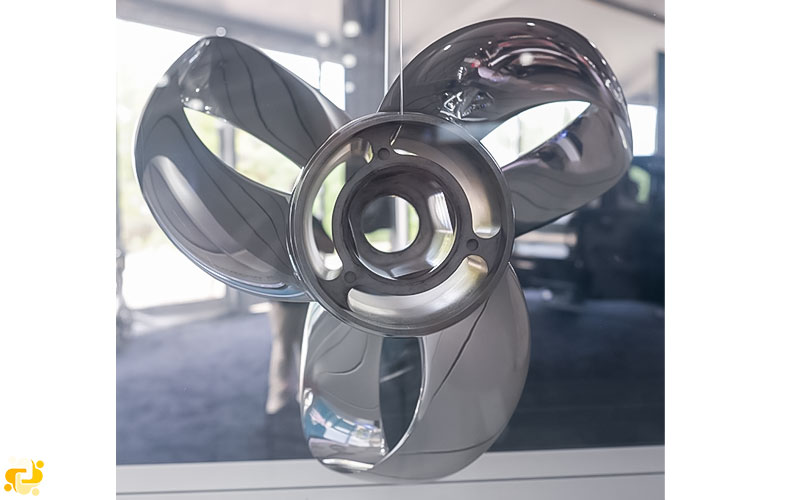
Figure 4 - The Sharrow Propeller
How it works?
The Sharrow Propeller represents a groundbreaking advancement in marine propulsion technology. Unlike a standard propeller, which generates a concentrated tip vortex leading to energy loss and the risk of cavitation, the Sharrow Propeller eliminates this problem entirely by design. The key innovation lies in the absence of a traditional propeller tip, which means there is no corresponding tip vortex. This distinctive feature has been empirically validated through underwater video footage comparing the performance of a conventional propeller to that of the Sharrow Propeller.
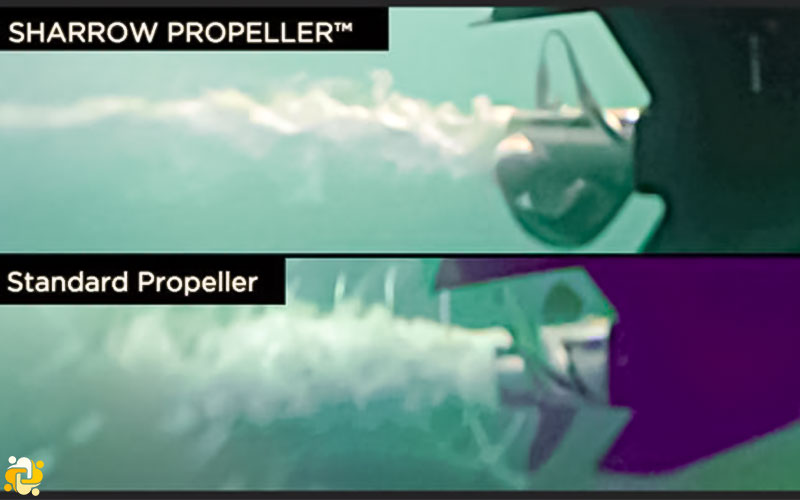
Figure 5 - Sharrow Propeller VS. Standard Propeller
In these captivating underwater visuals, the contrast between the two propeller types becomes strikingly apparent. When observing the conventional propeller in action, it becomes evident that the "bubbles" emanating from each blade converge into the familiar helical patterns, unmistakably indicating the presence of the tip vortex. It is noteworthy that the occurrence of tip vortex cavitation (TVC) is not solely a function of tip speed but is more intricately related to blade loading.
In stark contrast, the Sharrow Propeller™ showcases a mesmerizing absence of tip vortex cavitation when viewed through the lens of the underwater video. This remarkable outcome underscores the Sharrow Propeller's unparalleled ability to mitigate energy loss and cavitation, setting a new standard in marine propulsion technology. Its innovative design, characterized by the elimination of the traditional propeller tip and its consequential eradication of the tip vortex, represents a transformative leap forward in the world of marine engineering.
Electromagnetic thrusters
Electromagnetic forces potentially provide a means of propulsion for a ship without the aid of propellers or oars. The laws governing the electromagnetic force were known in the 19th century, apart from a few isolated experiments such as Faraday's attempt to measure the voltage along the River Thames caused by Its movement through the Earth's magnetic field and Hartmann's work on electromagnetic pumps in Measured in 1918, the subject largely awaited engineering development until the 1960s.
The idea of electromagnetic thrusters was first patented in the United States by Rice during 1961. After this invention, the United States took an important role in theoretical and experimental studies, which led to the Westinghouse Research Laboratory report in 1966. The report suggests that higher magnetic field densities are needed before this option can provide a real alternative to ship propulsion. In the 1970s, superconducting coils allowed for further advances in this concept.
The basic principle of electromagnetic propulsion is based on the interaction of the magnetic field B, which is placed by a fixed coil inside the ship, and the electric current passed through the seawater from the electrodes on the bottom of the ship or through a conduit, as shown diagrammatically is shown, is created. In the figure below, since the magnetic field and the current are in orthogonal directions, the resulting Lorentz force provides the necessary pumping action. The Lorentz force is J × B, where J is the induced current density.
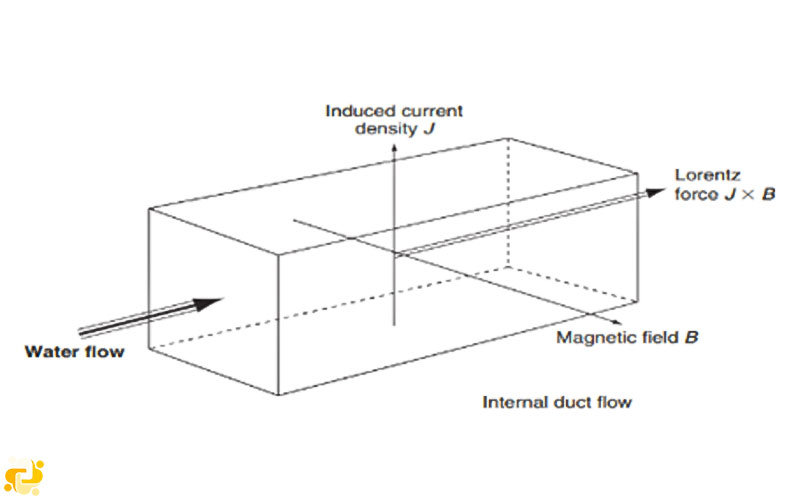
In this case, the electric field can be created internally or externally by placing a system of electrodes on the bottom of the ship. However, this method is relatively inefficient for ship propulsion. Most work has focused on systems using internal magnetic fields, and the principle of this type of system is shown in Figure a, where a channel, through which seawater flows, is surrounded by superconducting magnetic coils immersed in a cryostat. . Inside the tube there are two electrodes that create the electric field necessary to interact with the magnetic field in order to create the Lorentz force necessary for propulsion. This issue is due to the low conductivity of sea water, which is one of the losses on this unit. The efficiency in terms of load speed is proportional to the square of the magnetic flux intensity and the current speed ratio, which is a function of the float speed.
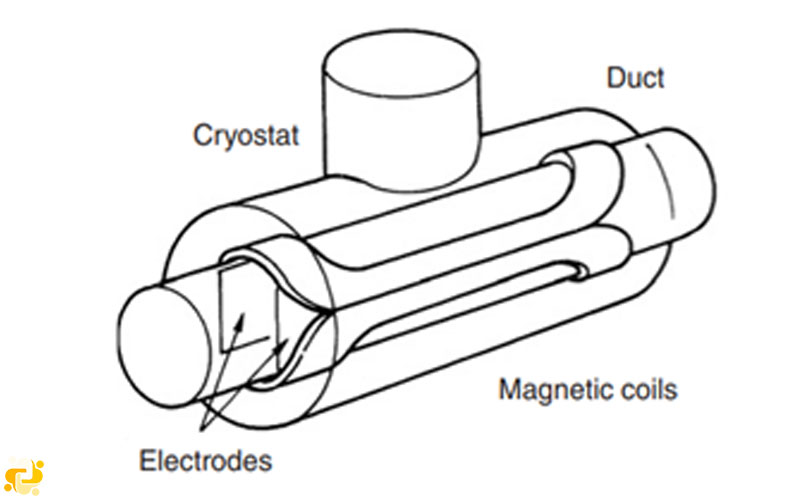
Electromagnetic propulsion has certain potential advantages in terms of providing a basis for noise- and vibration-free hydrodynamic propulsion.
However, a major obstacle to the development of electromagnetic force until the last few years was that the superconducting coil, in order to maintain its zero resistance property, must be kept at the temperature of liquid helium, 4.2 K (-268°). This clearly requires the use of thermally insulated vessels in which the superconducting coil can be placed to maintain these conditions. The criticality of this thermal condition can be seen from the figure below, which shows how the resistance of a superconductor changes with temperature and eventually reaches a critical temperature. Superconductors are also sensitive to current and magnetic fields, which if too high, the superconductor it will be ruined.
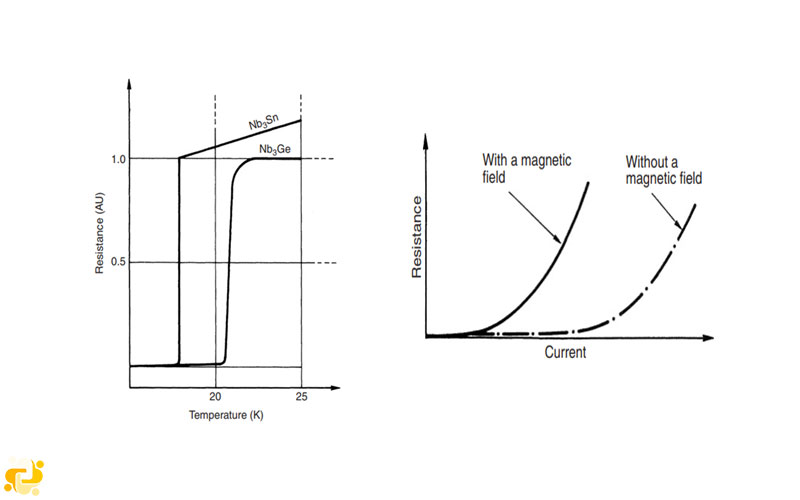
Superconductivity began with the work of Kamerlingh Onnes at Leiden University in 1911, when he discovered the superconductivity of mercury in liquid helium. For this he won the Nobel Prize. Work on superconductivity continued, however, progress was slow in finding metals that would function at the high temperature of liquid nitrogen, -196°C. Until 1973, the best achievable temperature was 23 degrees Kelvin. However, in 1986 Müller and Bednorz in Zurich turned their attention to ceramic oxides, which until now were considered insulators. The result of this change was an immediate increase of the critical temperature to 35 degrees Kelvin using a combination of lanthanum, barium, and copper oxide. This discovery made Muller and Bednors also receive the Nobel Prize for their work. As a result of this discovery, work intensified in the United States of America, China, India and Japan.
While these developments are clearly encouraging because they make it easier to use superconducting coils in terms of thermal insulation, many ceramic oxides are relatively difficult to manufacture. Firstly, the process by which the superconductor is made is very important if we want to get the correct molecular structure, and secondly, ceramics are fragile. Consequently, while this form of propulsion clearly has potential and significant progress has been made in both basic research and application, much work remains to be done before this type of propulsion can be implemented on a commercial or even conceptual scale.
Related Articles
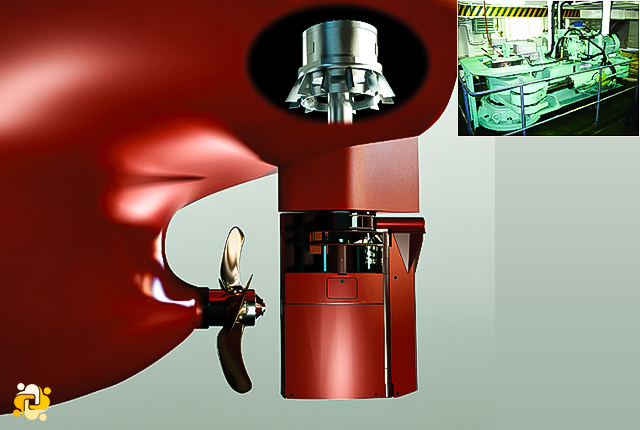
Common Problems in Steering Gear System
Accidents because of steering gear failure are common in the maritime industry. such incidents have led to some serious accidents in the part, causing heavy damage to ship, its crew and the environment. periodic maintenance and checks are extremely important for smooth functioning of ship’s steering gear. however, there are a few common issues which tend to occur in spite of taking all necessary precautions..
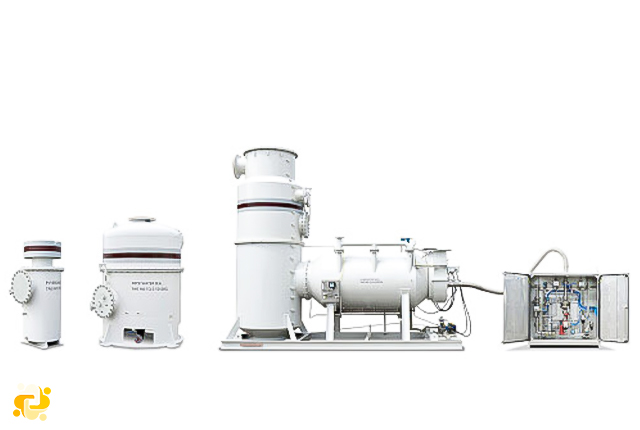
Introduction to Inert Gas Systems (IGS)
Inert gas system is the most important integrated system for oil tankers for safe operation of the ship. inert gas is the gas which contains insufficient oxygen (normally less than 8 %) to suppress combustion of flammable hydrocarbon gases..
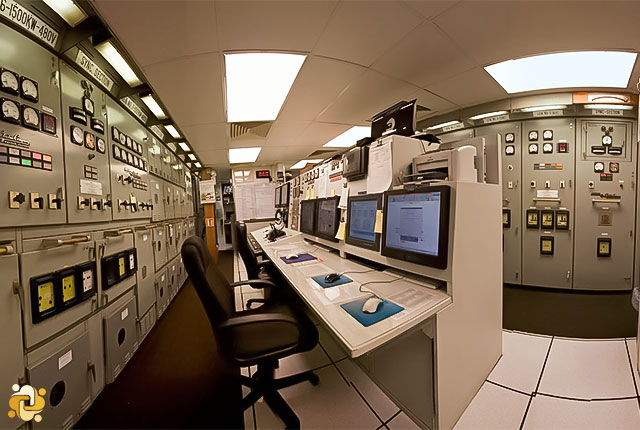
Understanding UMA (UMS) Ships and Their Operational Requirements
Uma (unattended machinery area) ships, sometimes referred to as ums, are designed for machinery and equipment operation without constant watch-keeping personnel. this article outlines the specific machinery included, stringent safety requirements, and the need for meticulous ship design. it emphasizes fire safety measures, prevention of flooding, alarm systems, and communication means, all crucial for ensuring safe and continuous operation..
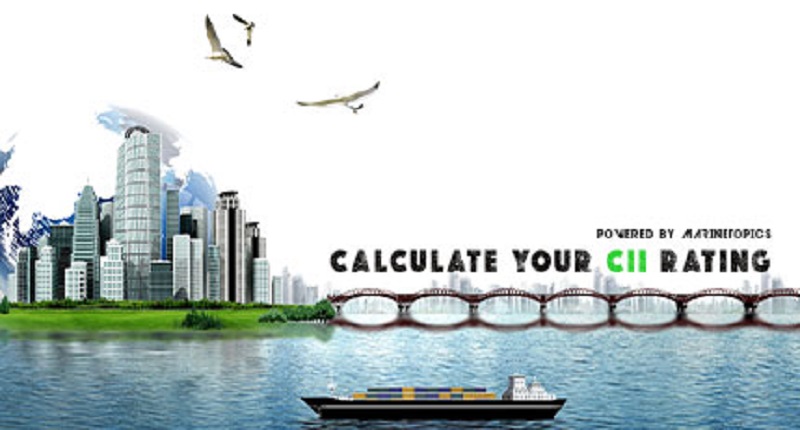
Follow Us on:
+98 21 2842 2755
©2023 All Rights Reserved
Winter is here! Check out the winter wonderlands at these 5 amazing winter destinations in Montana
- Plan Your Trip
How Big Is A Cruise Ship Propeller
Published: December 16, 2023
Modified: December 28, 2023
by Fianna Donofrio
- Sustainability
Introduction
Welcome aboard the world of cruising, where colossal ships traverse vast oceans, carrying thousands of passengers to their dream destinations. These magnificent vessels are not only equipped with luxurious amenities and state-of-the-art facilities but also with massive propellers that propel them through the water with remarkable power and efficiency.
Intrigued by the engineering marvel that is a cruise ship propeller? Look no further, as we delve into the world of these hefty metal blades that play a pivotal role in the navigation and propulsion of a cruise ship.
Cruise ship propellers, often referred to as marine propellers, are bar-like structures connected to the ship’s propulsion system. These propellers are responsible for generating the necessary thrust and pushing the ship forward, overcoming the resistance of the water. As a vital component of a cruise ship’s machinery, propellers contribute significantly to the vessel’s speed, maneuverability, and overall performance.
Understanding the size and mechanics of cruise ship propellers can provide valuable insights into the impressive capabilities of these maritime giants.
So, what exactly determines the size of a cruise ship propeller? Let’s explore the factors that influence their dimensions, the different types of propellers found on cruise ships, and the manufacturing process behind these colossal metal blades.
But first, let’s take a moment to appreciate the intricate mechanics and functionality of these immense propellers before delving further into their size and construction.
Understanding Cruise Ship Propellers
Cruise ship propellers are not your average run-of-the-mill boat propellers. They are specifically designed to meet the unique requirements of these mammoth vessels. The size, shape, and construction of cruise ship propellers are carefully optimized to ensure maximum efficiency and performance.
One of the key aspects to understand about cruise ship propellers is the concept of pitch. Pitch refers to the angle at which the propeller blades are set. It determines the distance the propeller moves forward with each rotation. Cruise ship propellers typically have a fixed pitch, meaning that the angle of the blades remains constant. This design helps maintain stability and efficiency, as the ship’s engine can operate at a consistent speed.
Another important factor is the number of blades. Cruise ship propellers usually have four to six blades, although some larger vessels may have more. The number of blades directly affects the propeller’s efficiency, stability, and noise level. More blades generally result in improved efficiency and reduced noise, but at the expense of increased weight and complexity.
Furthermore, cruise ship propellers are carefully designed to minimize cavitation. Cavitation occurs when the pressure around the propeller drops significantly, causing bubbles to form and collapse. This phenomenon can lead to erosion and damage to the propeller blades. To counteract cavitation, the surface of the propeller blades is often coated with a special material that helps reduce bubble formation and prevent erosion.
It’s also important to mention the material used in constructing cruise ship propellers. Most propellers are made of high-strength stainless steel alloys that are resistant to corrosion and wear. These alloys provide the necessary strength to withstand the immense forces exerted on the propeller during operation.
Overall, cruise ship propellers are engineered with precision and attention to detail, taking into account factors such as pitch, blade number, cavitation, and material composition. The goal is to create a propeller that balances efficiency, durability, and performance to ensure smooth and reliable navigation of these colossal vessels.

Factors Affecting Propeller Size
The size of a cruise ship propeller is influenced by a variety of factors, all of which are carefully considered during the design and construction process. These factors ensure that the propeller is properly sized to provide the necessary thrust and maneuverability for the specific vessel.
The first factor to consider is the ship’s power and speed requirements. The propeller must be able to generate enough thrust to propel the ship through the water at the desired speed. Larger ships with higher power requirements will typically have larger propellers to generate the necessary thrust.
The ship’s hull design is another significant factor in determining propeller size. The propeller must be optimized to work together with the hull to achieve maximum efficiency. The shape and size of the hull can affect factors such as drag and flow patterns, which in turn influence the size and design of the propeller.
Water conditions and operating environment also play a crucial role in propeller size selection. Cruise ships operate in a variety of conditions, including calm seas, rough seas, and varying water depths. The propeller must be sized to ensure optimal performance in these different environments. Additionally, the propeller should be designed to minimize noise and vibration, providing a comfortable and enjoyable experience for passengers.
Efficiency is another significant consideration when determining propeller size. The propeller must be designed to deliver the required thrust while minimizing fuel consumption. By optimizing the size, shape, and blade angles, propeller manufacturers strive to achieve the best balance between power output and fuel efficiency.
Lastly, space constraints within the ship’s machinery room also influence propeller size. The propeller must fit within the designated space, allowing for proper installation, maintenance, and access to other equipment. This consideration becomes increasingly important as ships grow in size and complexity.
Overall, a combination of factors including power requirements, hull design, operating conditions, efficiency, and space constraints all have an impact on determining the size of a cruise ship propeller. By carefully considering these factors, manufacturers strive to create propellers that meet the specific needs of each vessel, ensuring optimal performance, maneuverability, and fuel efficiency.
Types of Cruise Ship Propellers
Cruise ship propellers come in different types, each designed to meet specific requirements and operating conditions. These propeller types vary in their design, configuration, and performance characteristics. Let’s take a closer look at some of the common types of propellers found on cruise ships.
- Fixed-Pitch Propellers: Fixed-pitch propellers have a constant blade angle and are the most common type found on cruise ships. They offer simplicity and reliability, making them well-suited for a wide range of operating conditions. Fixed-pitch propellers are typically made of high-strength stainless steel and can have various numbers of blades.
- Controllable-Pitch Propellers (CPP): Controllable-pitch propellers allow for the adjustment of blade angle during operation. This flexibility allows cruise ships to optimize performance at different speeds and operating conditions. CPP technology offers better maneuverability, fuel efficiency, and vibration reduction compared to fixed-pitch propellers.
- Podded Propulsion Systems: Podded propulsion systems are a relatively new and innovative technology employed in some modern cruise ships. These systems consist of azimuthing pods that house both the propellers and electric motors, providing direct propulsion without the need for traditional shafts and rudders. Podded propulsion systems offer exceptional maneuverability, improved fuel efficiency, and reduced vibration and noise levels.
- Ducted Propellers: Ducted propellers, also known as Kort nozzles, feature a cylindrical nozzle surrounding the propeller. This design enhances propeller efficiency by guiding and accelerating the water flow, resulting in increased thrust. Ducted propellers are commonly used in situations where maneuverability and efficiency are important, such as in ice-filled waters or areas with strong currents.
These are just a few examples of the different types of cruise ship propellers available. Each type has its own advantages and is selected based on the specific needs and requirements of the ship. The choice of propeller type can greatly impact a cruise ship’s performance, efficiency, and maneuverability, making it an important factor in vessel design and operation.
The Mechanics of a Cruise Ship Propeller
Cruise ship propellers are marvels of engineering, designed to harness the power of the ship’s engines and convert it into forward thrust. Understanding the mechanics behind these impressive machines can provide valuable insights into their functioning.
The basic principle behind a cruise ship propeller is Newton’s third law of motion: for every action, there is an equal and opposite reaction. As the propeller blades rotate, they push against the water, creating a force that propels the ship forward.
Propellers consist of multiple curved blades, shaped like airfoil profiles, attached to a central hub. The shape and angle of these blades are carefully designed to maximize efficiency and minimize drag. When the ship’s engines rotate the propeller shaft, the blades slice through the water, creating a pressure difference on either side of the blade. This pressure difference, known as lift, generates the thrust required to move the ship forward.
As the propeller starts rotating, water is drawn in towards the blades due to the pressure difference created by the blade’s curvature. The water flows over the blades, accelerating as it moves from the leading edge to the trailing edge. This acceleration increases the pressure on the concave side of the blade and decreases it on the convex side, effectively creating lift.
The efficiency and performance of a cruise ship propeller are influenced by several factors. Blade pitch, which refers to the angle of the blades, determines the amount of lift generated and the forward speed of the ship. The number of blades can also affect propeller efficiency, with more blades typically leading to increased thrust and reduced vibration.
Cavitation, a phenomenon mentioned earlier, can also impact propeller performance. When the pressure around the blades drops too low, bubbles can form and collapse, causing erosion and decreasing thrust. Propeller design and operating conditions are carefully calibrated to prevent or minimize cavitation.
In addition to providing forward thrust, cruise ship propellers also contribute to the ship’s maneuverability. By adjusting the pitch of the blades or changing their rotation direction, the ship’s captain can control the ship’s turning radius and maneuver in tight spaces.
The mechanics of cruise ship propellers are a fascinating blend of physics, hydrodynamics, and engineering. Through precision design and careful calibration, these propellers efficiently convert engine power into forward motion, allowing cruise ships to glide through the water with grace and power.
Propeller Manufacturing Process
The manufacturing of cruise ship propellers is a complex and precise process that involves several stages of design, manufacturing, and quality control. Here is an overview of the typical propeller manufacturing process:
- Design and Engineering: The first step in the manufacturing process is the design and engineering phase. Propeller designers utilize advanced computer-aided design (CAD) software to create the propeller’s shape, size, and blade configuration. Factors such as ship speed requirements, power output, and hydrodynamic efficiency are taken into consideration during this phase.
- Casting: Once the design is finalized, the propeller is cast using a specialized foundry process. High-strength stainless steel alloy or other suitable materials are melted and poured into a mold that is shaped based on the propeller’s design. After the molten metal cools and solidifies, the mold is removed, leaving behind a rough cast propeller.
- Machining and Finishing: The rough cast propeller undergoes extensive machining and finishing processes to refine its shape and surface. Highly skilled technicians use computer numerical control (CNC) machines to precisely shape the blade profiles and achieve the desired dimensions and tolerances. The propeller is also meticulously polished to minimize surface imperfections.
- Balancing: Balancing is a critical step to ensure the propeller operates smoothly and without excessive vibration. The propeller is carefully balanced by adding or removing weight from specific locations on the blades or hub. This process helps eliminate any imbalances that could lead to operational issues or damage to the ship’s machinery.
- Quality Control: Once the propeller is machined, finished, and balanced, it undergoes rigorous quality control checks. Specialists inspect the propeller for any defects, dimensional accuracy, and adherence to design specifications. Non-destructive testing techniques, such as X-ray or ultrasonic inspection, may be used to detect hidden flaws or cracks.
- Installation and Testing: After passing quality control, the propeller is ready for installation on the ship. Highly skilled technicians carefully mount the propeller onto the propeller shaft and ensure its proper alignment. Before the ship sets sail, the propeller undergoes sea trials and testing to verify its performance, efficiency, and balance under real-world conditions.
The propeller manufacturing process requires a combination of advanced technology, skilled craftsmanship, and meticulous attention to detail. By following these carefully defined steps, manufacturers can produce high-quality cruise ship propellers that meet stringent performance standards and provide reliable propulsion for these majestic vessels.
The Size Range of Cruise Ship Propellers
Cruise ship propellers come in a wide range of sizes, varying depending on the vessel’s size, power requirements, and operating conditions. The size of a propeller is determined by factors such as ship displacement, desired speed, and the specific design criteria. Let’s explore the typical size range of cruise ship propellers:
For smaller cruise ships, such as those accommodating a few hundred passengers, propellers can range in diameter from around 3 to 6 meters (10 to 20 feet). These ships typically have lower power requirements and operate at lower speeds, allowing for more compact propellers.
As we move to larger ships, such as those carrying thousands of passengers, the size of the propellers grows significantly. These ships may have propeller diameters ranging from 6 to 9 meters (20 to 30 feet) or even larger. With higher power requirements and the need to move larger masses through the water, larger propellers are necessary to generate the required thrust.
Propeller diameter is not the sole determinant of propeller size. The number of blades, blade shape, and propeller pitch also play a significant role in sizing. A higher propeller diameter, combined with an appropriate blade design, allows for more efficient thrust generation and reduces the risk of cavitation.
It is worth noting that the size of cruise ship propellers can vary significantly based on the purpose of the vessel. Different types of cruise ships, such as those designed for expedition cruises or icebreaking, may have unique propeller requirements. Expeditions ships, for example, often require propellers capable of operating in shallow waters and navigating through challenging environments, while icebreaking ships may require propellers with specialized designs to break through ice.
Ultimately, the size of a cruise ship’s propellers is carefully chosen to ensure optimal performance, maneuverability, and fuel efficiency. Extensive engineering analysis and simulation are conducted to select the most suitable propeller size for a specific vessel, taking into account various factors such as ship size, power requirements, operating conditions, and desired performance parameters.
With advances in design, materials, and manufacturing techniques, cruise ship propellers continue to become more efficient and powerful, contributing to the smooth navigation and comfort of these magnificent vessels.
The Largest Cruise Ship Propellers in the World
Cruise ships are constantly pushing the boundaries of size and scale, and this includes their propellers. The largest cruise ship propellers in the world can be found on some of the most massive and powerful vessels currently sailing the oceans. Let’s take a look at these extraordinary propellers:
Royal Caribbean’s Oasis-class ships, known for their colossal size, feature some of the largest propellers in the industry. Each ship in this class is equipped with two fixed-pitch propellers that measure approximately 7.6 meters (25 feet) in diameter. These massive propellers are designed to provide the required thrust to move these immense vessels through the water at speeds of up to 22 knots.
Not to be outdone, MSC Cruises’ Meraviglia and Seaview classes also boast gigantic propellers. These ships are equipped with two fixed-pitch propellers that measure approximately 7.7 meters (25.3 feet) in diameter. These impressive propellers contribute to the powerful propulsion system that allows these vessels to smoothly navigate the seas.
Additionally, Carnival Cruise Line’s Vista-class ships showcase massive propellers. These vessels feature two fixed-pitch propellers with a diameter of approximately 7.3 meters (24 feet). These robust propellers help propel these large ships and allow them to reach their desired speeds.
The largest cruise ship propellers are selected based on a combination of factors, including the ship’s size, power requirements, and desired performance characteristics. These massive propellers are carefully engineered to provide the necessary thrust to move these colossal vessels through the water, ensuring smooth and efficient navigation.
It’s important to note that the size of a propeller is not the sole indicator of performance. Proper blade design, pitch optimization, and material selection also play crucial roles in achieving optimal propeller efficiency and overall vessel performance.
As cruise ship technology continues to evolve, we can expect even larger and more advanced propellers to be developed. These propellers will further enhance the speed, maneuverability, and fuel efficiency of these magnificent floating cities.
The world of cruise ship propellers is a fascinating one, where engineering prowess meets the challenge of propelling massive vessels through the vast oceans. From the understanding of their mechanics to the factors influencing their size, we have explored various aspects of these impressive maritime components.
Cruise ship propellers are carefully designed and manufactured to meet the specific needs of each vessel. Factors such as power requirements, hull design, water conditions, and efficiency considerations all influence the size and type of propellers chosen.
With their immense size and power, cruise ship propellers play a crucial role in the navigation, maneuverability, and overall performance of these magnificent vessels. Whether it’s the reliable fixed-pitch propellers or the innovative podded propulsion systems, each type of propeller is meticulously designed and engineered to provide optimal thrust, efficiency, and comfort for passengers.
The manufacturing process of cruise ship propellers involves a combination of advanced technology, craftsmanship, and quality control measures. From design and casting to machining and balancing, manufacturers ensure that each propeller meets strict standards of performance and durability.
With the continuous advancement of technology, we can expect to see even larger and more efficient propellers in the future. These propellers will continue to contribute to the smooth sailing and unforgettable experiences on board the world’s largest cruise ships.
As we conclude our exploration of cruise ship propellers, we can appreciate the intricate engineering and design that goes into these remarkable components. Their size, mechanics, and manufacturing process create a synergy that enables these giants of the sea to navigate the oceans with grace, power, and efficiency.

- Privacy Overview
- Strictly Necessary Cookies
This website uses cookies so that we can provide you with the best user experience possible. Cookie information is stored in your browser and performs functions such as recognising you when you return to our website and helping our team to understand which sections of the website you find most interesting and useful.
Strictly Necessary Cookie should be enabled at all times so that we can save your preferences for cookie settings.
If you disable this cookie, we will not be able to save your preferences. This means that every time you visit this website you will need to enable or disable cookies again.
Toroidal Propeller
Marine Engine Propellers
Boat Propellers
1. marine and boat propellers.
This paper presents a comprehensive review of marine and boat propellers, their historical evolution, construction, and function, as well as their critical role in marine transportation. The objective is to understand the propeller’s contribution to marine vessel performance, efficiency, and impact on the environment. By exploring emerging trends and technologies, we highlight areas for potential improvement and future study in propeller design and application.
2. Introduction
Marine and boat propellers are the unsung heroes of the maritime world. Essential for almost every type of marine vessel, these propulsion systems have undergone significant development and innovation throughout history, and yet, they remain pivotal to advancements in the marine industry.
2.1. Definition of Marine and Boat Propellers
Marine and boat propellers are rotating mechanical devices with blades that convert rotational energy into thrust, propelling marine vessels forward or backward in the water. They come in various shapes and sizes, depending on the application, vessel size, speed requirement, and efficiency.
2.2. Historical Development of Marine Propellers
The evolution of marine propellers traces back to the earliest times of water transportation, from simple oars to mechanically sophisticated propulsion systems. The advent of steam and later combustion engines in the 19th and 20th centuries, respectively, significantly transformed propeller design, leading to enhanced efficiency and vessel performance.
2.3. Scope and Importance of the Study
This study aims to provide a comprehensive understanding of marine and boat propellers, their crucial role in the marine industry, and their implications for environmental sustainability. The importance of this research lies in its potential to illuminate pathways for innovations in propeller design, contributing to more efficient and environmentally friendly marine transportation.
3. Literature Review
The comprehensive analysis of academic, industrial, and maritime studies in our literature review provides a crucial understanding of the development, present status, and future trends in the field of marine and boat propellers.
3.1. Early Research on Marine and Boat Propellers
The early studies on marine and boat propellers primarily focused on improving propulsion efficiency and understanding the hydrodynamic principles behind propeller operations. For instance, the work of William Froude in the 19th century laid the foundations for modern naval architecture and propeller design by developing a law of comparison that allowed for scale model testing. These formative studies set the course for future research, underscoring the significance of propeller shape, size, pitch, and blade number in affecting propulsion efficiency and performance.
3.2. Recent Studies and Findings
In recent years, the focus of studies has shifted towards more complex parameters such as cavitation phenomena, noise reduction, and vibration control. These advancements have been made possible by the development of computational fluid dynamics (CFD) that allows for more accurate simulations of fluid flows around propellers. Moreover, there has been an increased interest in studying the environmental impact of propellers and exploring potential solutions like energy-saving devices and antifouling coatings to enhance efficiency and reduce environmental impact.
3.3. Identified Gaps in Current Literature
Despite significant advances in our understanding of marine and boat propellers, certain gaps remain in the literature. A comprehensive analysis of materials used in propeller construction and their environmental implications is lacking. Similarly, more extensive research on propellers for electric and hybrid marine vessels could provide a crucial leap in the industry’s future. Additionally, a systemic approach to propeller maintenance and life-cycle analysis is needed, which would provide more insights into the long-term cost-effectiveness of different propeller designs and materials.
4. Theory and Hydrodynamics of Marine Propellers
Understanding the principles behind marine propeller operation is critical to improving propulsion efficiency, optimizing design, and enabling technological innovation. This section explores the basic operation, hydrodynamic principles, and mathematical models related to marine propellers.
4.1. Basic Operation of Marine Propellers
Marine propellers function based on the principle of generating thrust to move the vessel forward. As the propeller rotates, the shaped blades create pressure differences between the forward and rear surfaces. The higher pressure on the rear surface pushes the water backwards, creating a reaction force that propels the vessel forward, according to Newton’s third law of motion.
4.2. Hydrodynamic Principles of Marine Propellers
The hydrodynamics of marine propellers involve complex fluid dynamics and physical interactions. Key aspects include thrust generation, resistance, cavitation, and wake. Cavitation, in particular, occurs when the local pressure falls below the vapor pressure of the water, forming bubbles that can erode the propeller’s surface. Understanding these principles is vital for optimizing propeller design to improve efficiency, minimize noise and vibration, and reduce cavitation effects.
4.3. Mathematical Models for Marine Propellers
Mathematical models for marine propellers have evolved considerably over the years, enhancing our understanding and prediction capabilities for propeller performance. The Blade Element Momentum (BEM) theory and potential flow theory are two fundamental approaches in propeller modelling. The BEM theory divides the propeller into several small elements and assumes each element acts as an independent airfoil. Potential flow theory, on the other hand, is used for inviscid and irrotational flows to calculate fluid velocities and pressure distribution. Today, the use of Computational Fluid Dynamics (CFD) has allowed for more precise modelling by solving Navier-Stokes equations, which describe the motion of fluid substances.
5. Types of Marine Propellers
Marine propellers vary significantly in design and functionality. Key factors influencing the choice of propeller type include vessel size, engine type, operational speed, and specific use-case scenarios. This section will delve into the most common types of marine propellers and their typical applications.
5.1. Fixed-Pitch Propellers
Fixed-pitch propellers, also known as FPPs, are the most common type of marine propellers due to their simplicity and robustness. In FPPs, the pitch or angle of the propeller blades is fixed and cannot be adjusted during operation. These propellers are typically used in small to medium-sized vessels and are preferred for their lower cost and maintenance requirements.
5.2. Controllable-Pitch Propellers
Controllable-pitch propellers, or CPPs, offer greater flexibility and control by allowing the pitch of the propeller blades to be adjusted during operation. This capability allows for optimal efficiency at various speeds and load conditions. It also permits the vessel to reverse direction without changing the rotation of the engine. Though CPPs are more complex and require more maintenance than FPPs, they are often used in larger vessels and situations requiring precise speed control.
5.3. Modular Propellers
Modular propellers comprise separate blade and hub components, which can be assembled in various configurations to suit different operational needs. This design allows for easy replacement or adjustment of individual blades without needing to replace the entire propeller, contributing to reduced maintenance costs and downtime.
5.4. Propeller Configurations for Different Vessel Types
Different vessel types require unique propeller configurations. For instance, high-speed crafts often utilize surface-piercing propellers, which operate partially submerged to reduce drag and increase speed. Tugboats and other vessels requiring high maneuverability often use azimuth thrusters, which can rotate 360 degrees to provide thrust in any direction. Similarly, vessels operating in ice-laden waters may use specially reinforced propellers designed to withstand the impact and abrasion of ice. Understanding these different configurations helps optimize vessel performance and efficiency across a range of marine environments and operational scenarios.
6. Marine Propeller Materials and Manufacturing Processes
The performance and durability of marine propellers are profoundly influenced by the materials used in their manufacture and the processes employed. Let’s look at the traditional and advanced materials used in marine propellers and explore how technological advancements have transformed manufacturing techniques.
6.1. Traditional Materials for Marine Propellers
Historically, marine propellers were made from bronze alloys due to their excellent corrosion resistance, machinability, and mechanical strength. Bronze propellers, typically of the manganese-bronze type, continue to be widely used, especially in smaller boats and ships.
6.2. Advanced Materials and Composites
In recent years, the use of advanced materials and composites in marine propellers has gained significant momentum. For instance, nickel-aluminum-bronze (NAB) alloys provide better strength and corrosion resistance than traditional bronze. Stainless steel, with its high strength-to-weight ratio and resistance to pitting corrosion, is another popular choice. Recent advancements also include composite materials such as carbon fiber and fiberglass, which offer the advantage of being lightweight, durable, and resistant to corrosion.
6.3. Manufacturing Techniques and Innovations
The manufacturing process of marine propellers has evolved significantly over time. Traditional methods involve casting, followed by machining and finishing processes. However, new advancements include CNC machining for higher precision and consistency, additive manufacturing (3D printing) for complex geometries and prototyping, and investment casting for superior surface finish and dimensional accuracy.
6.4. Quality Assurance and Testing
Quality assurance and testing are critical aspects of the marine propeller manufacturing process. Non-destructive testing (NDT) techniques such as radiographic (X-ray) testing, ultrasonic testing, and dye penetrant inspection are commonly used to detect surface and subsurface flaws. Hydrodynamic performance is often tested using cavitation tunnels and model basin facilities. The advent of computational fluid dynamics (CFD) has also enabled virtual testing and simulation, allowing for performance optimization even before a prototype is built.
7. Performance and Efficiency of Marine Propellers
The operational efficiency of a marine vessel is significantly determined by the performance of its propellers. This section will discuss the key performance indicators of marine propellers, factors affecting their efficiency, and contemporary methods to enhance their performance.
7.1. Key Performance Indicators
The performance of marine propellers is measured using several key indicators. These include thrust, which is the force propelling the vessel forward, and torque, the twisting force required to turn the propeller. Efficiency, a ratio of useful power output (thrust) to power input (torque), is another crucial metric. Additionally, the cavitation performance—how well a propeller operates under varying pressures without creating vapor bubbles—is also an important aspect to consider.
7.2. Factors Affecting Marine Propeller Efficiency
Numerous factors influence the efficiency of marine propellers. The blade shape and design, including parameters such as pitch, rake, skew, and blade area ratio, play critical roles. The number of blades and their distribution also impact efficiency. Furthermore, operational conditions like loading conditions, vessel speed, water depth, and water salinity can affect the efficiency of marine propellers.
7.3. Approaches to Increase Efficiency and Performance
Several approaches can enhance the efficiency and performance of marine propellers. The use of CFD for the optimization of blade shape and design can result in significant efficiency improvements. Advanced materials can reduce propeller weight, thus improving performance. Controllable-pitch propellers, which allow the blade pitch to be adjusted during operation, can offer optimal efficiency under various conditions. Moreover, regular maintenance and propeller cleaning can prevent fouling and corrosion, thereby maintaining the propeller’s performance over time.
8. Cavitation and Erosion in Marine Propellers
Cavitation and erosion can significantly degrade the performance of marine propellers, leading to increased noise, reduced efficiency, and physical damage to the propeller blades. This section discusses the causes and effects of these phenomena and presents methods to mitigate their impacts.
8.1. Causes and Effects of Cavitation
Cavitation occurs when the local pressure around a propeller blade falls below the vapor pressure of the water, causing it to vaporize and form bubbles. This typically happens at high speeds or under heavy loads, especially on the blade’s suction side. When these bubbles collapse, they create shock waves that can cause pitting and erosion on the blade surface. Moreover, cavitation can lead to increased noise and vibration, reduced propeller efficiency, and in severe cases, structural damage to the propeller.
8.2. Erosion Damage and Prevention
Erosion damage on marine propellers, often resulting from cavitation, can lead to significant performance degradation. This damage generally manifests as pitting on the blade surface, which can disrupt the flow of water and decrease propeller efficiency. To prevent erosion, the propeller materials should be chosen for their resistance to cavitation damage. Regular inspections and maintenance can also help identify early signs of erosion and enable timely interventions.
8.3. Cavitation Mitigation Techniques
Several techniques exist to mitigate the effects of cavitation. Propeller design optimization, including modifying the blade shape, pitch, and distribution, can help reduce the likelihood of cavitation. Anti-cavitation plates and cavitation tunnels can also be used to control cavitation. Using advanced materials with higher cavitation resistance can help limit the damage caused by cavitation. Additionally, operational adjustments, such as limiting propeller RPM or load in known cavitation conditions, can help manage the phenomenon.
9. Maintenance, Safety, and Environmental Considerations of Marine Propellers
Proper maintenance, safety protocols, and environmental conservation measures are crucial for the long-term performance and sustainability of marine propellers. This section outlines the importance of these factors and the strategies employed to address them.
9.1. Maintenance and Repair Techniques
Routine maintenance and timely repair of marine propellers ensure optimal performance and prolonged lifespan. Maintenance typically involves regular inspection for damage like cavitation pitting, corrosion, and deformation. Any damage found should be promptly repaired to avoid escalating the issue. Techniques such as welding, grinding, and polishing are commonly used for repairs. Balancing the propeller is crucial post-repair to ensure smooth operation. Preventive measures, including the use of anti-corrosive coatings and sacrificial anodes, can help protect the propeller from damage.
9.2. Safety Concerns and Accident Prevention
The propellers, given their function and location, pose several safety risks, including potential injuries from accidental contact and structural damage from groundings or collision with debris. Protective measures like guards can prevent accidental contact, while sensors and navigation systems can help avoid collision with underwater objects. Regular inspections and maintenance are also key to maintaining safe operation.
9.3. Environmental Impact and Conservation Measures
Marine propellers can impact the environment in various ways. Cavitation-induced noise pollution can disturb marine life, while corrosion and erosion can release harmful substances into the water. To mitigate these impacts, designers are developing quieter and more efficient propellers, and using eco-friendly materials and coatings. Additionally, regulations such as the International Maritime Organization’s (IMO) guidelines on underwater noise and anti-fouling systems guide propeller design and operation towards more sustainable practices.
10. Innovations and Future Trends in Marine Propeller Technology
As technological advancements continue to reshape the maritime industry, marine propellers are no exception. This section explores some of the key innovations and future trends in marine propeller technology.
10.1. Intelligent and Adaptive Propeller Systems
Intelligent and adaptive propeller systems are gaining traction in the marine industry. These systems employ advanced sensors, algorithms, and control systems to adjust propeller operation based on real-time conditions, enhancing efficiency, and performance. They can autonomously adjust parameters like pitch and rotational speed to optimize propulsion and fuel efficiency. Future research will likely focus on improving the responsiveness and robustness of these systems.
10.2. Propellers for Electric and Hybrid Vessels
The rise of electric and hybrid vessels has led to new requirements and opportunities for propeller design. Electric propulsion often requires propellers to operate efficiently at different speeds, leading to a growing interest in variable pitch propellers. Additionally, these vessels’ quieter operation magnifies the need for low-noise propellers, which is another area of ongoing research.
10.3. Sustainable Design and Materials
Sustainability is a significant driver of innovation in marine propeller technology. Eco-friendly materials, like corrosion-resistant composites, are becoming more common in propeller construction, reducing the environmental impact of erosion and corrosion. Simultaneously, design techniques like biomimicry, inspired by efficient natural propulsion mechanisms, are being explored to create more efficient and environmentally friendly propellers. Future research will likely continue to prioritize sustainable materials and designs, driven by both regulatory pressures and industry demand.
11. Case Studies
Real-world case studies provide insightful examples of the various concepts discussed. Here we examine three distinct case studies from the marine industry.
11.1. Case Study 1: Modern Cruise Ship Propellers
Modern cruise ships often utilize advanced propeller systems to maximize efficiency and minimize environmental impact. An example is the Royal Caribbean’s ‘Oasis of the Seas,’ which employs Azipod propulsion units. These units feature variable-pitch propellers, allowing the ship to adjust propeller performance to match sea conditions. Combined with a streamlined, hydrodynamic design, these propellers significantly improve fuel efficiency and maneuverability compared to traditional systems.
11.2. Case Study 2: Propellers in Submarine Design
The United States Navy’s Virginia-class submarines feature a unique propeller design. To maintain stealth, these propellers are designed to minimize noise and cavitation. They utilize an advanced blade geometry and special materials, reducing the chances of cavitation and thereby decreasing noise. This case study underscores the importance of propeller design in the operational characteristics of a vessel.
11.3. Case Study 3: Small Boat Propeller Efficiency
The Yamaha F25 outboard motor illustrates the importance of propeller efficiency in small boats. Its advanced propeller design helps the motor deliver impressive speed and acceleration performance, even in tough conditions. Yamaha achieved this by optimizing the propeller’s pitch and blade shape for the motor’s power characteristics. This case study emphasizes how even for small boats, advanced propeller design can significantly enhance performance.
12. Discussion
12.1. Summary of Key Findings
In our exploration of marine propellers, several key findings emerged. First, the design and operation of marine propellers are dictated by complex hydrodynamic principles. These principles influence propeller efficiency and overall vessel performance.
Second, there are various types of marine propellers available, each with distinct features and suited for different vessel types. For instance, fixed-pitch propellers offer simplicity and reliability, while controllable-pitch propellers offer operational flexibility.
Third, materials and manufacturing processes have evolved over time. While traditional materials like bronze are still used, advanced materials and composites offer improved durability and performance.
Fourth, propeller performance and efficiency are crucial areas of focus in the marine industry. Various factors influence these, including design, materials, and operation parameters.
Fifth, cavitation and erosion are significant challenges for marine propellers. They can reduce efficiency and lead to damage, emphasizing the importance of proper design and maintenance.
12.2. Practical Implications
These findings have numerous practical implications. For instance, vessel operators and owners must consider their specific needs when selecting a propeller type. Maintenance practices should also be designed to prevent and mitigate the effects of cavitation and erosion.
Furthermore, as the industry moves towards sustainability, propeller design will play a crucial role. This includes the use of eco-friendly materials and designs that minimize environmental impact. There’s also an increasing trend towards intelligent and adaptive propeller systems that can optimize efficiency in real-time.
12.3. Future Research Recommendations
Despite the extensive body of knowledge on marine propellers, there are several opportunities for future research. One exciting and promising area is the exploration and development of toroidal propellers . These innovative propellers, shaped like a torus or a donut, could provide efficiency improvements and noise reductions due to their unique design, and require thorough investigation to fully understand their potential.
Additionally, studies could investigate the use of new materials and manufacturing processes, such as 3D printing. This advanced technology could revolutionize the way propeller systems, including toroidal propellers , are produced, reducing waste and increasing customization possibilities.
The application of artificial intelligence in propeller design and operation, including in the management of toroidal propellers, is another potential research area. Adaptive systems that can self-adjust to optimize efficiency in real-time could significantly enhance the performance of marine vessels.
Lastly, as environmental regulations become more stringent, there’s a need for research on sustainable propeller technologies, such as toroidal propellers made from environmentally friendly materials. The design of such propellers could minimize environmental impact while maintaining, or even improving, performance.
13. Conclusion
This comprehensive review of marine and boat propellers has highlighted the critical role these components play in the overall efficiency, performance, and environmental impact of marine vessels. From the early stages of fixed-pitch propellers to the advent of controllable-pitch and modular propellers, the evolution of marine propellers is a testament to the continuous pursuit of technological advancements in the maritime industry.
Moreover, this study has underscored the importance of proper material selection, manufacturing processes, and quality assurance in ensuring the longevity and optimal performance of propellers. Issues related to cavitation and erosion are of particular concern and must be managed through informed design decisions and maintenance practices.
The field of marine propellers is at a precipice of substantial change, with emergent trends pointing towards intelligent, adaptive propeller systems, the growing use of electric and hybrid vessels, and an increasing emphasis on environmental sustainability. The exploration and development of innovative designs like toroidal propellers are of particular interest, suggesting a rich area for future research and development.
In conclusion, as we sail towards a future of increased maritime activity, the scientific and technological advancements in marine propeller design will be central to realizing more efficient, safer, and environmentally friendlier seas.

Cruise Ship Propeller Size – How Big Are They?
Without a power source and propellers, cruise ships would drift aimlessly at sea. These mega-ships require engines, fuel, and massive propellers just to move through the water and keep all activities on board the ship running. We describe not only the cruise ship propeller size, but also how it integrates with the rest of the engine.
Older cruise ships use diesel engines for propulsion. The power generated from the engine goes through a transmission and into the propeller shafts.
The transmission determines propeller revolution like the transmission in an engine transfers RPM to a manageable speed to power the rear wheels in a car.
Meanwhile, modern cruise ships use diesel-electric engines or gas turbines to propel the ship through water. The ship’s systems are also used to guide and move the ship through the ocean.
The larger the ship, the higher the demand for electrical power. There are cruise ships that rely on two different sources of power. One is dedicated to electrical power, while the other is for propulsion.
In This Article…
Cruise ship propeller size.
Propellers can be up to 20 feet in height. Often referred to as ABB Azipods XO , modern cruise ships tend to have three of them to properly maneuver the ship and propel it forward in water. They are efficient on fuel compared to a traditional system.
As mentioned, they allow for improved maneuverability, allow the ship to maximize speed, reduce bad emissions, and optimize the overall performance of the cruise ship.
An ABB Azipod system has a large impact on the operating efficiency of a cruise ship. It effectively reduces bad emissions and energy consumption by 20%. This propulsion system resides in the ship’s aft outside of the hull. They can rotate by 360° using a rudder, which provides thrust in any direction. This is not possible with a conventional system.
This type of propeller contains three main components:
- Frequency Controller – This is designed to change the supplied power’s frequency, so the rotating motor speed is more easily controlled.
- Supply Transformer – The power, which is produced by a generator, is 6,600 KV. This is stepped down to the required voltage used by a supply transformer. Then, it is transferred to the motor located in the pod.
- Propulsion Motor – Designed to drive or produce thrust, its rotation is generated using an electric motor.
How Do Propellers Work?
Propellers are required to push a cruise ship through water. Commonly referred to as “screws,” they slice through the water. They also provide a reverse and forward motion. Cruise ship propellers do not need to turn quickly since they rely on brute power or torque instead of high speeds or RPM. This is what causes a ship to move slowly, as these vessels rarely reach 30 knots.

Cruise ships that are newer and more cutting edge may use azimuth thrusters. These are pods housing propellers, which rotate 360° and provide optimal maneuverability. They were designed to replace rudders and are touted as more beneficial compared to screw-type propeller systems. Benefits include improved fuel efficiency and shorter stopping distance.
These types of propellers allow cruise ships to turn quickly in water when necessary to avoid collisions, which is why more vessels are being equipped with this technology.
How Do Azipods Work Compared to Traditional Propulsion Systems?
The term “Azipod” combines the words “azimuthing” and “pod.” The phrase “Azipod” is a registered trademark of ABB Oy. They work by having the propeller located on the front of its pod. This allows the cruise ship to be pulled through the water rather than being pushed as in a traditional shaft and propeller system.
With a traditional system, its propeller is rotating in water that has been disturbed by the moving of the propeller shaft, brackets, and framing. With the pod system where the propeller is found in the front of its pod, it is turning in water that has been undisturbed. This allows the pod to be 5%-6% more efficient due to improved water flow.

Traditional systems are noisier when maneuvering due to the cavitations of its propellers. This doesn’t occur with pods since they are tractor pods. Tractor pods comparatively pull a ship through surrounding water. Clean, smooth water moves into the blades, thereby decreasing noise.
Pod systems free up additional space in the hull. Traditional systems meant the motors and propeller shafts had to be placed in the hull. Modern cruise ships not containing pods require stern thrusters to maneuver the cruise ship while undocking and docking.
On the other hand, pod systems use the equivalent of a drive motor and propeller shaft, which are found in the pod as opposed to the hull. There is also no need to use stern thrusters.
Many cruise ships contain two pods. Allure of the Seas and Oasis of the Seas contain three pods. Several may be designed using a combination of azimuthing pods and pods which don’t rotate (fixipods) for forward/backward motion.
What Is Propeller Cavitation?
This is the formation and dissolving of vapor bubbles (vapor filled voids) found in liquid mediums. Since the propeller rotates through water at an angle, a suction and pressure side exist on each of the propeller blades. The faster a blade slices through water, the lower the pressure becomes with the suction side.
At a certain speed, the pressure found on the suction side will become so decreased that water running over it will evaporate. When this occurs, voids or vapor bubbles form. It occurs at a normal air pressure (1013.24 hPa) with the water evaporating at 100°C. At higher pressures, evaporation temperature also increases. The opposite happens at lower pressures.

When local pressure goes down below vapor pressure, the water will evaporate. Then, a cavitation bubble forms, becomes bigger, and is transported by flowing to an area with higher pressure. The bubble then ceases to grow any further. When local pressure exceeds vapor pressure, the vapor will condense, beginning from the bubble’s wall.
Eventually, the surface breaks down, beginning with the weakest location, thereby causing the bubble to implode. While it is imploding, water fills the space where the void is, causing a pressure surge. This creates pressure waves along with high-pressure peaks.
Should the vapor bubbles be close to or directly on a solid wall surface like the blade of a propeller, the implosion generates a liquid microjet exerting high stress on the surface. This sudden energy release creates pressure loads found on the surface, generating crate-shaped erosion of material in a propeller blade.
The bubble layer pack on a surface of a blade will also make them thicker, thereby increasing resistance moving through water. This impacts the propeller’s performance. Cavitation also generates vibrations and popping noises. This, in turn, affects guests and ships.
What Causes Cavitation?
The primary cause of cavitation is an unevenness in the blade’s leading edge, too much sharpness of the edge, increased curvature of the propeller blade, or poor finishing of the surface of the blade.
Effects of Cavitation on a Cruise Ship’s Propellers
The effects on the propellers are:
- Eroding of the blades
- Decreased performance
As cavities collapse, they generate noise and high-frequency vibrations. This can be unpleasant to crew and passengers if they are located at the aft of a cruise ship.
Vibration is generated from the unsteady characteristics of cavitation. It is the periodic deflections of the propeller in a horizontal, vertical, or torsional manner.
Vibrations are further reduced by using Schneekluth or Mewis ducts. These are fitted on the hull of the ship, or before the propeller. This provides a uniform wake flow into the propeller thus reducing vibrations.
This can be a serious effect. Cavitation bubbles once formed are unable to persist if they move into an area where net pressure goes back to a value which exceeds the water’s vapor pressure. It can happen toward the blade’s trailing edge or as it moves from top to bottom of its circle, thereby gaining hydrostatic pressure.

The way they collapse creates a new phenomenon. Bubbles will then contract to minute sizes prior to disappearing. This causes the entire energy to collapse, causing a change of state to be concentrated into a tiny location.
At the beginning, the damage looks like it has been hit with a tiny hammer, leaving small, circular indentations. If the damage is prolonged, the result is serious pitting in the metal. This looks like a definite crater on the blade’s surface. Continual pitting can erode the entire thickness of the propeller blade, creating a hole.
Performance
When it comes to performance, the impact can be considerable. Cavitation begins at the tips of the blades and gradually consumes the remainder of the blade as propeller loading increases. As cavitation extends to .75 of the radius, there is significant loss in the thrust plus a reduction in torque. There will be a significant increase in revolutions with a given power.
Thrust breakdown will begin quicker than a change in the torque. This can result in a loss of efficiency.
How Is Cavitation Prevented?
The hull of a cruise ship influences the flow going around the propellers since they fully work in a cruise ship’s wake. To avoid this, the follow measures are undertaken:
- Reducing revolutions per minute. Since the thrust varies, reducing revolutions decreases cavitation. However, the downside is a loss of speed.
- Generate a maximum immersion.
- Reduce the blade’s thickness. This is done by utilizing stronger materials, which are resistant to cavitation.
- Avoid suction peaks close to the leading edge. This is done by utilizing a suitable amount of camber and a good shape for the entrance.
- Design the stern so that it achieves a uniform wakefield.
- Avoid high sections on the blade’s backside. This is achieved by using section shapes providing a uniform pressure distribution.
- Pitch can be varied over the blade’s length. This diminishes loading in important areas.
- Decrease angles of incidence and blade angles by creating a slightly bigger diameter.
- Make the total blade area larger. This is done by increasing the propeller’s diameter with a reduction of revolutions or your blade area ratio with a constant diameter.
Which Cruise Ships Have the Largest Propellers?
Royal caribbean’s oasis class.
These cruise ships tend to be the largest in the world. Their propellers are designed to have a diameter of six meters. The ship’s propulsion contains three 26,800-horsepower Azipods, which is an electric azimuth thruster.

How Fast do Propellers Spin?
Since a cruise ship’s engines turn their crankshaft at extremely high rates of speed – hundreds or thousands of revolutions per minute – the engine connects to the ship’s propellers using gears. The propellers themselves are created to turn slower , which tends to be around 250 revolutions per minute or less.
Carnival Cruise Line Fantasy Class
This cruise line’s service speed is 22.3 knots. It was the first to use a unique electric azimuth Azipod system for propulsion. This means that the ship is pulled as opposed to pushed by its propeller. The Carnival Elation contains two 14 MW Azipod units.

When it comes to a cruise ship propeller size, they can be as large as 20 feet high. This is no surprise when you consider the size of the engines and everything that is necessary to move a ship. Thanks to the introduction of Azipods, cruise ships are better able to navigate around any obstacles they may encounter in the water.
Read Also: How Big is a Cruise Ship?
Not only are they better equipped to move around potential hazards, but this improvement in technology also allows them to better move into ports, work more efficiently, and save on fuel costs. With constant pressures to become more environmentally friendly, this may be a good thing for cruise lines.
While they aren’t great for the environment, they aren’t emitting as much pollution as fuel is being conserved. It also makes this natural resource stretch for a longer duration. Ideally, LNG-powered cruise ships can be used to prevent harmful emissions. This is the best method to protect the environment.
However, with the drawbacks of using this fuel type, changing the propulsion technology may be the next-best thing.
Related Posts
Leave a reply cancel reply.
Your email address will not be published. Required fields are marked *

Propeller, Types of Propellers and Construction of Propellers
A propeller is a rotating fan-like structure that is used to propel the ship by using the power generated and transmitted by the main engine of the ship.
The transmitted power is converted from rotational motion to generate a thrust which imparts momentum to the water, resulting in a force that acts on the ship and pushes it forward.
A ship propels on the basis of Bernoulli’s principle and Newton’s third law. A pressure difference is created on the forward and aft side of the blade and water is accelerated behind the blades.
The thrust from the propeller is transmitted to move the ship through a transmission system which consists of a rotational motion generated by the main engine crankshaft , intermediate shaft and its bearings, stern tube shaft and its bearing and finally by the propeller itself.
A ship can be fitted with one, two and rarely three propellers depending upon the speed and manoeuvring requirements of the vessel.
Material and Construction of Propeller
Marine propellers are made from corrosion-resistant materials as they are made operational directly in seawater which is a corrosion accelerator. The materials used for making marine propellers are an alloy of aluminium and stainless steel.
Other popular materials used are alloys of nickel, aluminium and bronze which are 10~15 % lighter than other materials and have higher strength.
The construction process of the propeller includes attaching a number of blades to the hub or boss by welding or forging in one piece. Forged blades are highly reliable and have greater strength but are expensive as compared to welded ones.
A marine propeller is constructed by sections of helicoidal surfaces acting together to rotate through the water with a screw effect.
Types of Propeller
Propellers are be classified on the basis of several factors. The classification of different types of propellers is shown below:
A) Classification by Number of Blades Attached:
Propeller blades may vary from 3 blade propeller to 4 blade propeller and sometimes even 5 blade propeller. However, the most commonly used are 3 blades and 4 blade propellers.
However, the most commonly used are 4 blades and 5 blade propellers.
The propeller efficiency will be highest for a propeller with a minimum number of blades i.e. 2 blade propeller. But to achieve strength factor and considering the heavy loads subjected by the ship, sea and weather two-blade propellers are not used for merchant ships.
3 Blade Propeller
A 3 blade propeller has the following characteristics:
- The manufacturing cost is lower than other types.
- Are normally made up of aluminium alloy.
- Gives a good high-speed performance.
- The acceleration is better than other types.
- Low-speed handling is not much efficient.
4 Blade Propeller
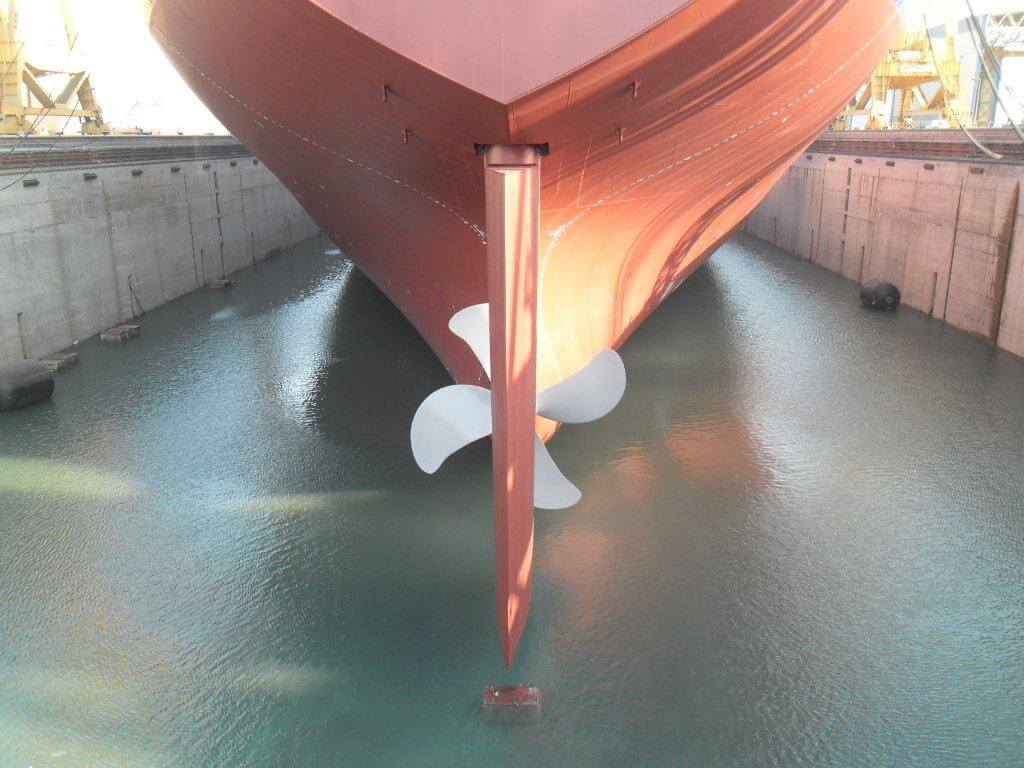
A 4 blade propeller has the following characteristics:
- The manufacturing cost is higher than the 3 blade propellers.
- 4 blade propellers are normally made up of stainless steel alloys.
- Have better strength and durability.
- Gives good low-speed handling and performance.
- Has a better holding power in rough seas.
- 4 blade propeller provides a better fuel economy than all the other types.
5 blade propeller
A 5 blade propeller has the following characteristics:
- Manufacturing cost is higher of all.
- Vibration is minimal from all the other types.
- 5 blade propellers have better holding power in rough seas.
6 blade propeller
- Manufacturing cost is high
- 6 blade propellers have better holding power in rough seas.
- With a six-blade propeller, the induced pressure field over the propeller decreases
Large container ships are mainly fitted with 5 or 6-bladed propellers.
B) Classification By pitch of the blade :
Pitch of a propeller can be defined as the displacement that a propeller makes for every full revolution of 360 ̊. The classification of the propellers on the basis of pitch is as follows.
Fixed Pitch Propeller
The blades in the fixed pitch propeller are permanently attached to the hub. The fixed pitch type propellers are cast and the position of the blades and hence the position of the pitch is permanently fixed and cannot be changed during the operation. They are normally made from copper alloy.
Fixed pitch propellers are robust and reliable as the system doesn’t incorporate any mechanical and hydraulic connection as in Controlled Pitch Propeller (CPP). The manufacturing, installation and operational costs are lower than the controlled pitch propeller (CPP) type. The manoeuvrability of the fixed-pitch propeller is also not as good as CPP.
These types of propellers are fitted in a ship that does not have good manoeuvrability requirements.
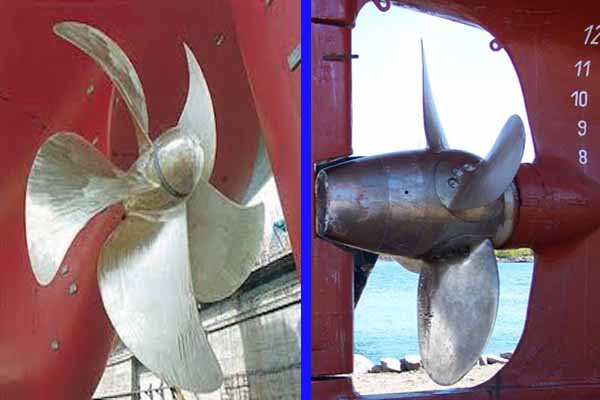
Controllable Pitch Propeller
In a Controlled Pitch type propeller, it is possible to alter the pitch by rotating the blade about its vertical axis by means of mechanical and hydraulic arrangement. This helps in driving the propulsion machinery at constant load with no reversing mechanism required as the pitch can be altered to match the required operating condition. Thus the manoeuvrability improves and the engine efficiency also increases.
This drawback includes the possibility of oil pollution as the hydraulic oil in the boss which is used for controlling the pitch may leak out. It is a complex and expensive system from both installation and operational points. Moreover, the pitch can get stuck in one position, making it difficult to manoeuvre the engine.
Read Also: Controllable Pitch Propeller (CPP) Vs Fixed Pitch Propeller (FPP)
However, the propeller efficiency for the CP propeller is slightly lower than the same size FP propeller due to the larger hub to accommodate the blade pitch mechanism and pipings.
Propeller Dimension: As a general rule, a larger diameter propeller will be more efficient. But the real dimension of the propeller will depend on the type of ship it will be used for and the following factors:
- Aft body construction and design of the ship
- Clearance requirement between the tip and hull of the ship
- General ballast condition of the ship. For tankers and bulkers, the propeller size will be small as compared to containers
- The design draught of the ship
Propeller dimension approximate value
- For Container ship d/D = 0.74
- For Bulk carrier and Tanker d/D = 0.65
Where d- diameter of propeller, D- design draught
How does a ship propeller work?
For vehicles running on land, the propelling system which drives them is different. In those systems, the engine powers the shaft which is attached to the vehicle tyre to move ahead of the body of the vehicle. However, for ships which are displaced in water, there are no such tyres or surfaces where they can ride.
The ship is displaced in the water and the propeller is used to drive the ship ahead or backwards, depending upon the direction of rotation or pitch of the propeller. The engine of the ship is connected to the propeller of the vessel via shaft arrangement .
As the engine rotates the propeller, the radiating blades which are set at a particular pitch form a helical spiral, similar to a screw. While doing this, it transforms the power of rotation into thrust which is linear in nature.
This linear thrust will act upon water such that as the propeller blades rotate it creates the pressure between the surface in front and back of it. Hence, a mass of fluid is accelerated in one direction creating a reactive force that helps the body attached to the propeller (which is the ship) moves ahead.
For the ship to move in the reverse direction, the engine and hence the propeller is rotated in an anti-clockwise direction. This will reverse the thrust and the ship will move astern. However, the engine of the FP-propeller is always designed for clockwise rotation when sailing ahead, hence, prolong operation in astern direction is not efficient.
For ships fitted with CP propeller, the engine direction is not affected hence astern efficiency of the ship is better than that of a fixed-pitch propeller.
Types of Propeller Shaft
The ship engine is connected to the propeller via different shafts connected together, which can be named as:
- Thrust Shaft
- Intermediate Shaft
Thrust shaft:
The crankshaft of the engine is first connected to the thrust shaft which passes through the thrust bearing whose main function is to transfer the thrust to the ship’s structure. The casing of the thrust bearing is similar in construction to that of the main engine bedplate and the bearing is lubricated by main engine lubrication system oil. The material of the thrust shaft is usually solid forged ingot steel.
Intermediate Shaft:
The thrust shaft is then connected to a long intermediate shaft which comes in parts and is joined together using solid forged couplings . The length and number of intermediate shafts joined together depends on the location of the main engine as a larger ship will have more distance between the main engine and the propeller. The material of the intermediate shaft is usually solid forged ingot steel.
Tail Shaft:
The Tail shaft, as the name suggests, is the end part of the shafting arrangement and carries the propeller. The tail shaft itself is carried on a lubricated stern tube bearing with seals as it connects and protrudes out of the ship’s engine room into the open sea, carrying the propeller.
The lubrication system can be of oil-based or water type. The tail shaft transmits the engine power and motion drive to the propeller. The material of the tail shaft is usually high strength duplex stainless steel alloy.
Reason for Heavy Running of Propeller
A propeller is supplied with engine power to rotate and propel the ship in the desired direction. If the amount of power provided to the propeller is not generating the same rate of revolution, the propeller is considered to be in a heavy running state which may be due to the following reason:
- Damage to propeller blades
- Increase in hull resistance due to hull fouling resulting in a change in wakefield
- During rough / heavy seas
- Ship sailing against the current
- Ship sailing in light ballast condition
- Ship Sailing In Shallow Water
- Ship with a flat stern
References: Q & A on marine diesel engine by Stanley g. & Naval architecture by Reeds
You might also like to read:
- Understanding Propeller Hubs: Design, Functioning, and Maintenance
- Marine Propeller Shaft: Design And Construction
- Understanding Design Of Ship Propeller
- 10 Factors Considered For Efficient Ship Propeller Design
- 8 Biggest Ship Propellers in the World
Disclaimer: The authors’ views expressed in this article do not necessarily reflect the views of Marine Insight. Data and charts, if used, in the article have been sourced from available information and have not been authenticated by any statutory authority. The author and Marine Insight do not claim it to be accurate nor accept any responsibility for the same. The views constitute only the opinions and do not constitute any guidelines or recommendation on any course of action to be followed by the reader.
The article or images cannot be reproduced, copied, shared or used in any form without the permission of the author and Marine Insight.
Do you have info to share with us ? Suggest a correction

About Author
An ardent sailor and a techie, Anish Wankhede has voyaged on a number of ships as a marine engineer officer. He loves multitasking, networking, and troubleshooting. He is the one behind the unique creativity and aesthetics at Marine Insight.

Latest Naval Arch Articles You Would Like :
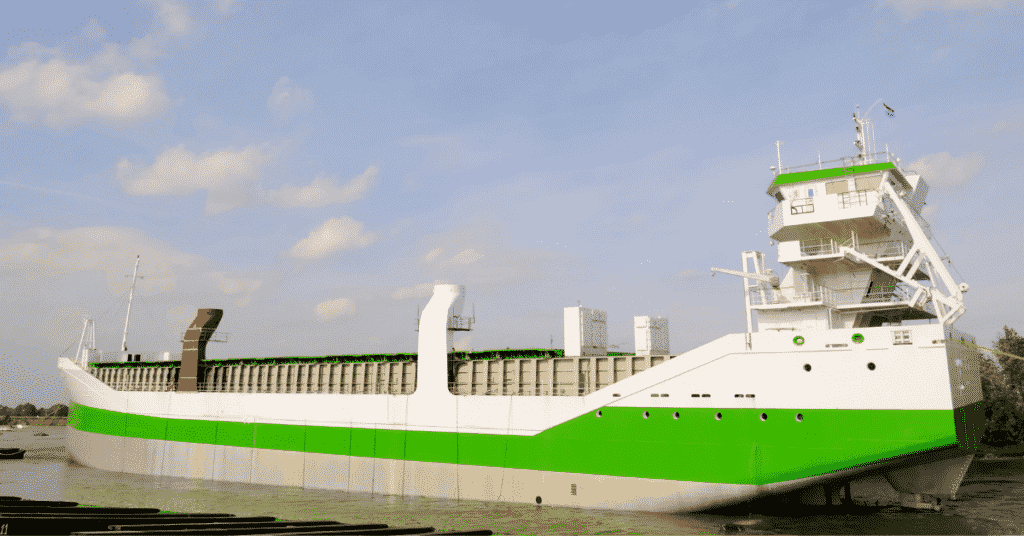
Sea Trials: 10 Important Tests to Ensure Vessel Safety
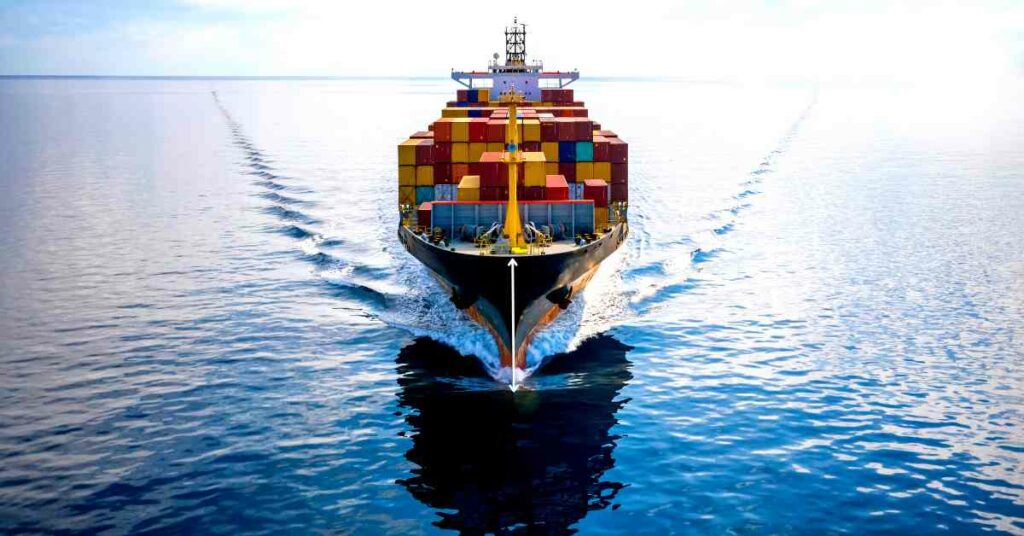
What Is Moulded Depth Of A Ship?
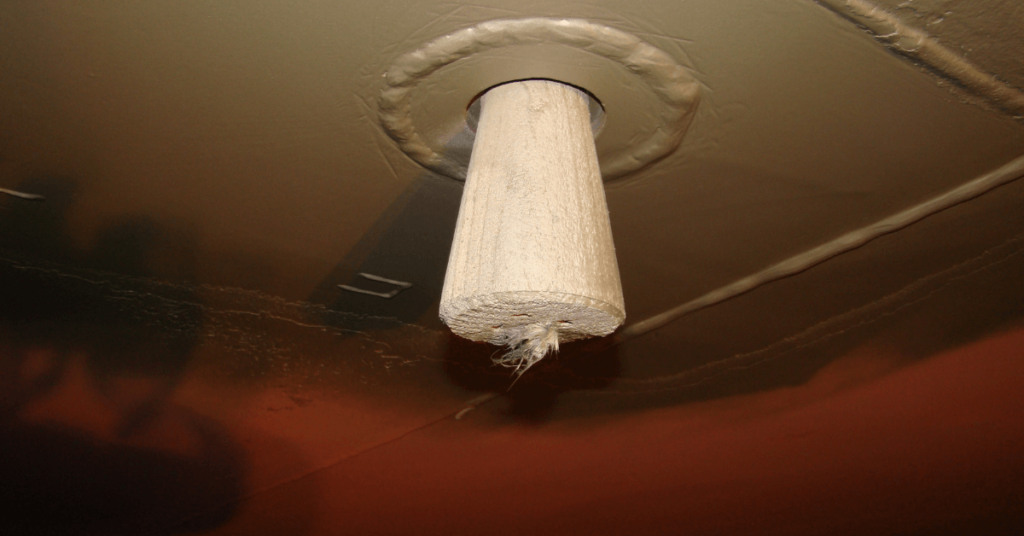
What Are Ship Bottom Plugs Or Dock Plugs?
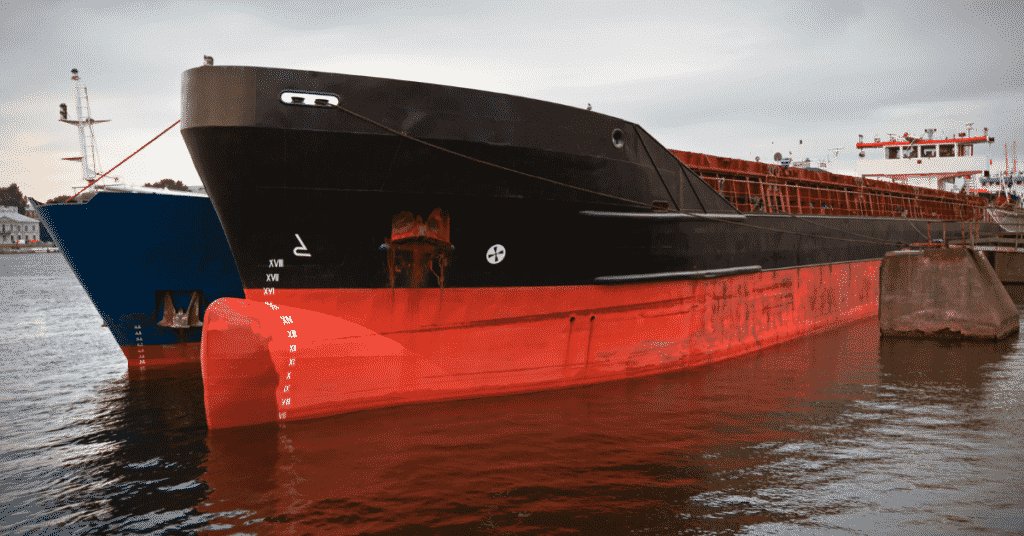
What’s The Importance Of Bulbous Bow Of Ships?
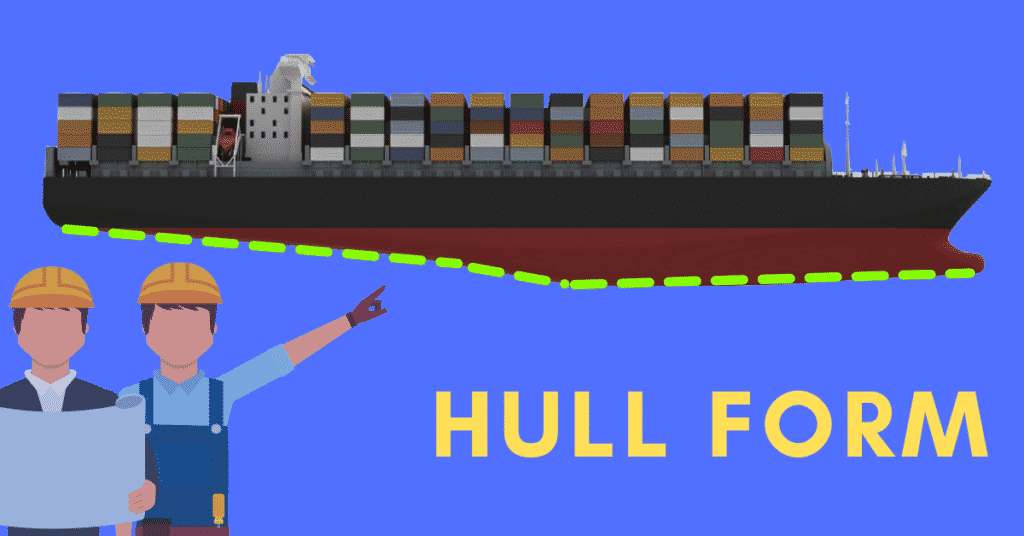
Choosing A Hull Form For Ships : A Naval Architect’s Perspective
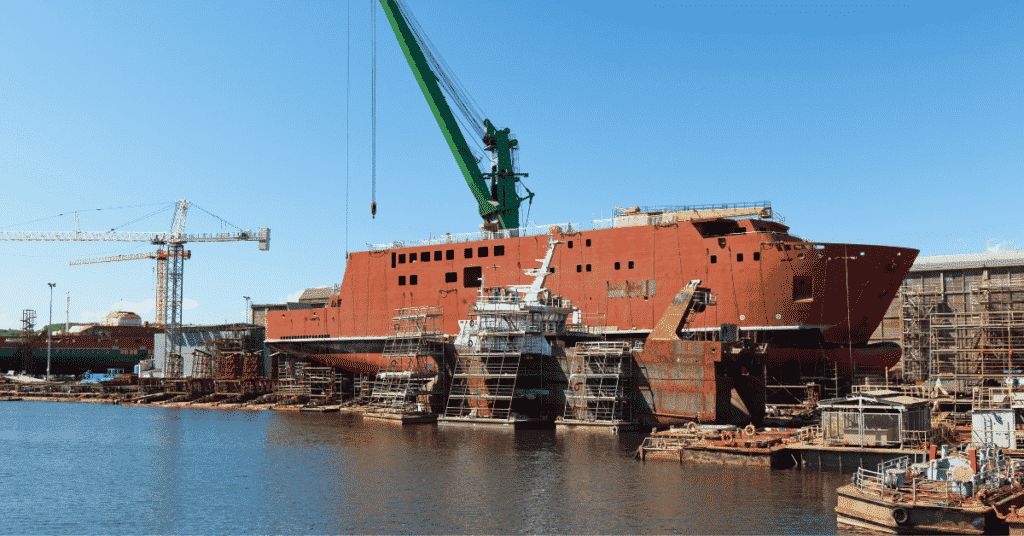
10 Important Ship Construction Regulations
Subscribe to our newsletters.
By subscribing, you agree to our Privacy Policy and may receive occasional deal communications; you can unsubscribe anytime.
35 Comments
Thanks for the information!!
great info i really liked this post
I would like to be receiving technical information on marine technology and newly invented equipment in the marine sector
i would like to know more information regarding marine electrical knowledge so please if possible mail me valuable information regarding electrical on board ship
@ Viswanth Kiran: Just explore our website. Try this link- https://www.marineinsight.com/category/tech/marine-electrical/
Here i found information that helped me in my work. Thank you for that! if is possible i would like to know about Shaft Alignment Steps. thank you very much
thank your reply, i know how newton law& floating law applicable for ship, i am talking about water resistance, maneuvering of water by different way , i believe i can make &drive the vessel [how big also never mind] with less energy, everything by change design only for red using water resistance ,but using the thruster in different position , can drive by wind energy – enough, how can i implement my idea, i don’t know…?
Very helpful to improve knowledge & work. I would like to know more about marine electrical knowledge. Pls send me
nowadays, we spent more energy for move the ship I have one project for reduce the energy required for ship movement….
1, Reduce the water resistance to extreme by design, better than existing, 2, Drive the the ship in both forward&reverse direction at same speed(at any condition) 3, Instead of using giant propeller,engine in rear side, multi-propeller, engine in different position for reduce the energy- required, also for balance drive, 4, Stop the vessel at appropriate distance by reduce the momentum 5, Can drive in narrow path accurately better than using ruder &bow thrust-er (to avoid duck-boat-help) 6, Can keep the vessel stable without using anchor now, i need sponsor for implement my project…. yes, i expect your help, i am hundred percentage sure i can able to make the ship like above character… i expect a favorable reply..
sir, I am from india, i ask you only one question, ship movement by means of replacement of water from forward to aft… replacement of water is equal to weight of the hull for that we we spend huge energy… why not we try another method for water displacement for increase the efficiency….? please reply my question.
thanks…
In types of propeller section i would like to see about kortnozzles, azimuth and bow thrusters.
Thank you for the valuable information.
I want to do a project to build a controlable pitch propeller..so pls give me necessity guidance. And pls give cost information immidiatly..
thank you very much..your article really help me with my assignment
RE: Increase propeller efficiency . Sir , A propeller produces a circular thrust aft to propel the ship . Engineers place the rudder in the center / aft of the propeller ,That disrupts the thrust produced , and creates a thrust to want to move the stern of the ship in the direction of the propellers rotation .some call it prop walk . Remove the rudder from this position , install twin rudders port and starboard and just aft of the propellers tip , and we also capture thrust that would be wasted in open ocean , and direct it aft to give the ship added power , and thus ,save some fuel .
i cant see the 9 type of propellers please help me
You can post all your queries in our forums for speedy and multiple replies: https://forums.marineinsight.com
This website is too helpfull to me, i would like to know why the exhaust port has smaller diameter compared with inlet port?
what s the technology of propulsion
One of the BEST maritime sites I have found. I am impressed by the quality of your contributors. Thank You,Joseph Nightingale
@Joseph: Thank You for the appreciation. It means a lot to the entire Marine Insight team
hi sir can i known what are the parameters that affect the selection of variable pitch and fixed pitch propellers
from the university I remember 3 types of propellers.
1.- fixed pitch propellers. The blades are permanently attached to the hub. The pitch is the same along the blades.
2.- Variable pitch propellers. The blades are permanently attached to the hub. The pitch is variable along the blades.
3.- controllable pitch propellers.
@Cristobal: Variable and Controllable are same types.
Thanks You for be the One of the BEST maritime sites I have found
@Bookbon: Thank you for your appreciation.
Thank you for posting a valuable information! It’s helpful / Thank you!
HOW TO DESIGN A SHIP TRIPLE PRPELLER 31725.20167 KW
Excellently explained. Best regards to you at all time
Why would an aircraft carrier have one three bladed and a four bladed propellers fitted?
Iam just freaking out about the components of the propeller of the ship. Is that blades and the hub are welded or it comes as seperated.
They are usually two different component
Superb Your every article I had seen Every article is Superb
Leave a Reply
Your email address will not be published. Required fields are marked *
Subscribe to Marine Insight Daily Newsletter
" * " indicates required fields
Marine Engineering
Marine Engine Air Compressor Marine Boiler Oily Water Separator Marine Electrical Ship Generator Ship Stabilizer
Nautical Science
Mooring Bridge Watchkeeping Ship Manoeuvring Nautical Charts Anchoring Nautical Equipment Shipboard Guidelines
Explore
Free Maritime eBooks Premium Maritime eBooks Marine Safety Financial Planning Marine Careers Maritime Law Ship Dry Dock
Shipping News Maritime Reports Videos Maritime Piracy Offshore Safety Of Life At Sea (SOLAS) MARPOL
Frequently Asked Questions
- Jan 8, 2022
Ship propellers - how do they work?
Propellers are the driving force behind most ships and planes around the world. They can drive large commercial ships through the water at 15 knots and commercial aircraft at 550 miles per hour. But how do they actually work? Today we are going to take a look at how ship propellers work, some of their designs, and how they differ from aircraft propellers. We’ll also take a look at an alternative that might make ship propellers obsolete.

Four bladed ship propellers. Image from Metallisation .
Propeller basics
Propeller design affects all aspects of a vessel from “handling, riding, comfort, speed, acceleration, engine life, fuel economy and safety. In determining boat performance, propellers are second in importance only to the power available from the engine itself”, according to Killcare Marina . A seemingly simple device can have drastic effects depending on the shape, size, angle, and number of blade tips. First, the basics: do propellers push or pull through the water? The answer is both - similar to how a household fan draws air in the back and blows it out the front, as propellers rotate, they push water backward which creates space in the front water must rush in to fill. It both pulls water in and pushes it out to create forward thrust. Each blade has a pressure differential where the bottom of the blade creates positive pushing pressure and the top of the blade creates negative pulling pressure. Most propellers have three or four blades (although they can have many more) each of which create these forces simultaneously. Pulling water in and pushing it out at a higher speed creates thrust that moves a vessel through the water.
The whole process is more easily visualized with an azimuth thruster pod, which combines the functions of a propeller and rudder in order to provide 360 degree motion. Water is sucked into the front of the thruster and pushed out the back, and the entire unit can be turned to provide thrust in any direction. Thrusters are basically a propeller inside a rudder for greater agility. The downside to this setup is it is not cost effective for ships that spend most of their time cruising at slow speeds on the open ocean, like a container ship. Those ships are built to maximize efficiency and are usually built with one large propeller that is stationary and only provides motion in one direction, which can then be modified by the rudder. For its massive size, this makes for a relatively fuel efficient vessel, but one propeller and a small rudder make for poor maneuverability.

Azimuth thrusters installed on a vessel. Image from openPR .
What are the parts of a propeller?
Each part of a propeller has a name, here is some terminology for the geeks (geeks are awesome!) who really want to know their propellers:
The front of the blade where water is pulled in is called the leading edge, the back of the blade where water leaves the propeller is called trailing edge, and the outermost part where these two meet is called the blade tip. The cup is the small curve on the leading edge that helps the blade to hold water. The blade face is the side facing away from the vessel that creates positive pressure, while the blade back faces the vessel and creates negative pressure. The blade root is the bottom of the blade where it attaches to the outer hub. The inner hub is attached to the shaft that turns the propeller. There are a few other special parts of propellers, and if you’re interested in a more in-depth look at these, check out Killcare Marina’s excellent article that goes into a lot more detail.
So how does the design of the propeller affect its operation?
The easiest way to categorize a propeller is by its size. The diameter of a propeller is the distance between the edges of a circle drawn around the tips of the blades. This can be as small as 1.25 inches for a Traxxas Blast radio controlled boat to as big as 9.6 meters (31.5 feet!) for one of the largest containerships, Emma Maersk . The Emma Maersk propeller also weighs 131.4 tons, or (according to Survival Tech Shop ) more than the weight of a small house! The right propeller diameter has many determining factors, including RPM, amount of power provided, required speed of the vessel, and if the propeller will be partially surfaced. Generally, larger propellers are used on slower boats and smaller propellers on faster boats, and more power will usually mean a bigger propeller.

Emma Maersk propeller. Image from gCaptain .
Pitch is similar to the pitch on a screw - it measures how far a propeller would move through a soft solid, according to Killcare Marina . A 16 x 22 propeller would have a 16 inch diameter and move forward 22 inches with a full revolution. Poor manufacturing and damage can affect pitch. There are usually two types of pitch: flat pitch means the blade is flat and at a constant angle from the leading to the trailing edge. Progressive pitch means the blade starts with a lower pitch at the leading edge and increases to the trailing edge. Progressive pitch is used to improve performance in higher horsepower applications or when the propeller may break the water surface. In effect, it acts like another set of gears with more pitch creating higher gearing - pitch has to be properly matched to the application.

Constant pitch and progressive pitch of propeller blades. Image from Killcare Marina .
The number of blades also has an effect on the performance of a boat. One blade would be the most efficient setup, but would create a lot of vibration. Three or four blades are most common as they are the best compromise between efficiency and reduced vibration. Most large vessels and thrusters use four blades, but five blades are also used in some cases. There are many additional factors to consider when selecting a propeller such as blade thickness, angle of attack, and even blade shapes. If you want to learn more, Killcare Marina’s article has lots of information!
What’s the difference between boat and plane propellers?
Ship propellers usually have broad, thin blades that spin relatively slowly. Airplane propellers, or airscrews as they are sometimes known in Britain, use narrow, thick blades that spin very fast. Wider, slower spinning blades work well in water, while thinner, faster spinning blades work better in air. Why is this? According to Explain That Stuff! , the easiest way to think about it is that a propeller moves an object forward through a fluid. Since seawater has approximately 1000 times the density of air, you need to move a lot more air to produce the same amount of thrust that you would in water. Airplanes also travel much faster than ships, and rely on that speed to stay in flight, while ships float on water and move much more slowly. The average speed of a containership is about 14.75 knots, or about 17 mph, while the passenger aircraft you fly on for vacation travels at around 550 mph. These vastly different requirements call for different sizes, shapes, and angles of propellers.

“The propellers of a C-130J Super Hercules military transport aircraft”. “Photographed by Adrian Pingstone, Public Domain, https://commons.wikimedia.org/w/index.php?curid=439643”. Image from Wikipedia .
Propeller materials are also different between the skies and the ocean. Ship propellers have to deal with saltwater, which can be very corrosive to many materials, and commonly use alloys like brass. Airplanes can use all kinds of exotic materials and manufacturing methods like magnesium alloys, hollow blades, and wood composites. Ships also have to deal with cavitation, which is when a propeller working under a heavy load can create vapor bubbles that form and burst next to propeller blades, making little pits and wearing away the surface.
A future without propellers?
According to Explain That Stuff! , Archimedes first came up with the idea of using screws to move water up a cylinder in the 3rd century BC. This method is still used today in combines and factories. Leonardo da Vinci designed a screw-style propeller for a helicopter in the 16th century that was never built. In 1796, John Fitch, an American inventor made the first basic propeller for a steamboat, with the modern propeller design coming not long after in 1836 from Francis Petit-Smith and John Ericsson, who both independently invented the new design. In 1903, twisted propellers would power the Wright Brothers in the first powered flight. The idea of a screw or propeller to move an object is over 2000 years old, with the modern propeller being almost 200 years old.
Is it time for a change? An interesting point was made recently in an article by the Economist: “NO KNOWN SEA-CREATURE uses propellers.” Interesting observation, but what other solutions are there for ships? Most vessels use propellers, and bigger propellers are more efficient, but then you have to worry about packaging that propeller and hitting underwater obstacles. Fins and flippers are evolution’s choice for water propulsion, used by almost every type of fish and mammal in the ocean. Benjamin Pietro Filardo is working on using flexible materials to change the way we move through the water. His company, Pliant Energy Systems has developed a prototype based on a cuttlefish - flexible fins on each side that allow movement underwater, on top of water, and even on mud or ice. The results are already impressive as the initial prototype already generates “around three times as much thrust per unit of energy expended as a typical small boat’s propeller can manage”, according to The Economist . The new follow-up vehicle, called the c-Ray, will be autonomous with initial uses in mine detection, reconnaissance, and patrols. This undulatory propulsion does not create cavitation like a propeller and is much quieter during operation. It has the potential to even be scaled up to full size submarines and other large vessels as a more efficient, quieter method of propulsion that could even provide recharging abilities if moored in place while passing waves move the fins.

Pliant Energy Systems cuttlefish-shaped c-Ray prototype. Image from The Economist .
Propellers are used in some form in everything from small boats to fighter jet engines. While they’re not going anywhere soon, we’re excited to see new technologies that could make vessels more efficient. For now, different materials and designs are the only changes we are likely to see in the near future. New thrusters are especially interesting as they are used on dynamically positioned vessels and OneStep Power tests DP2 and DP3 vessels for fault ride through in the event of a short circuit.
Happy Fun Fact Friday!
http://www.killcaremarina.com.au/commonly-asked/61-about-propellers
https://www.onesteppower.com/post/azimuth-thrusters
https://www.walmart.com/ip/traxxas-3834-propeller-blast-454-pack/746937306
https://traxxas.com/products/models/marine/blast
https://www.onesteppower.com/post/largest-containership-emma-maersk
https://www.explainthatstuff.com/how-propellers-work.html
https://gcaptain.com/containerships-increasing-speed-as-rates-continue-to-climb/
https://www.economist.com/science-and-technology/nature-does-not-use-propellers-so-why-do-people/21806832
https://www.metallisation.com/applications/arcsprayreclamationofshipspropellershafts/
https://www.openpr.com/news/700135/global-azimuth-thrusters-market-2017-rolls-royce-schottel-group-niigata-power-systems-cat-propulsion-brunvoll.html
https://gcaptain.com/photos-worlds-largest-containership-propeller-gets-loaded-onto-ship/
https://www.survivaltechshop.com/how-much-does-a-house-weigh/
https://en.wikipedia.org/wiki/Propeller_(aeronautics)#/media/File:Hercules.propeller.arp.jpg
- Fact Friday
Recent Posts
Repurposing ships – old into new
Mobile Offshore Drilling Units: MODUs
Timeline: The World’s Only DP5 Vessel

Largest Ship Propellers In The World
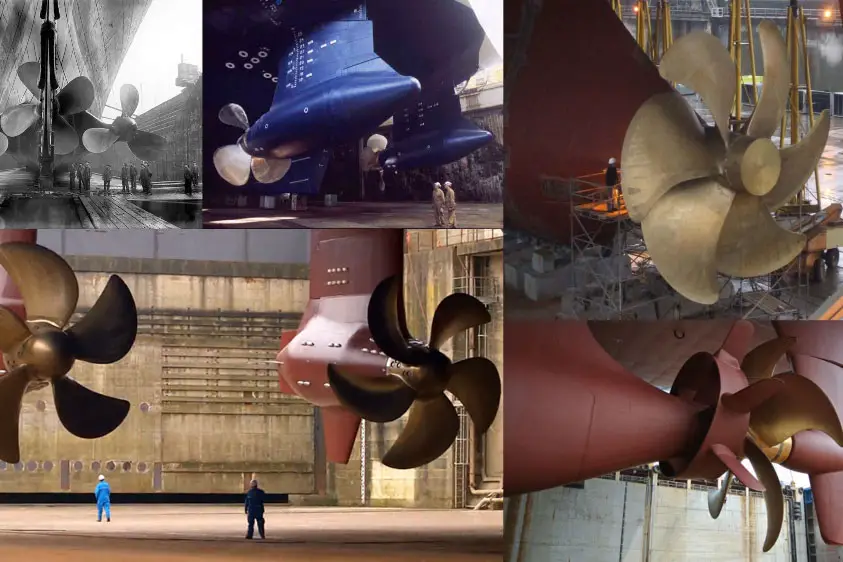
Humans are always fascinated by the biggest and the fastest. Ships which are some of the most mammoth structures made by us provide us plenty of opportunities to be awed. Have you wondered how these giants on the sea move? Propeller is the answer. And to move the biggest ships in the world, we need the largest ship propellers in the world!
Propellers are generally used to make an object move forward. The thrust produced by the rotation of propellers drives the ships or aircraft. Propellers are used in aircraft and ships. In our childhood, we all have played with small boats having a small fan-like structure on the back, and on rotating that fan our boat would move in the water. Now imagine, for making a huge ship move forward we need a huge propeller.
Here are some ships having the biggest propellers in the world:
1) MSC OSCAR
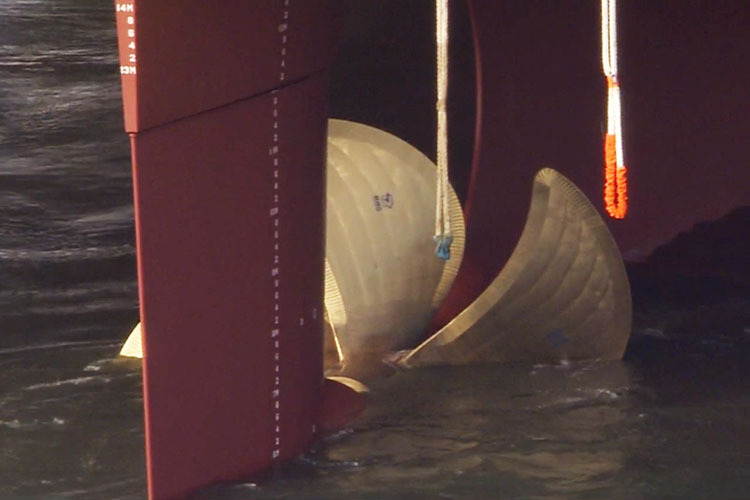
MSC Oscar , built by Daewoo in South Korea, is one of the largest container ships in the world. The total length of this ship is 395 meters. The propeller consists of five blades, each blade measuring 10.5 meters. The main engine of this ship is MAN B&W 11S90ME-C, which enables the maximum speed of this container vessel is 22.8 knots. The 45,300-ton steel MSC Oscar cost US$140 million to build.
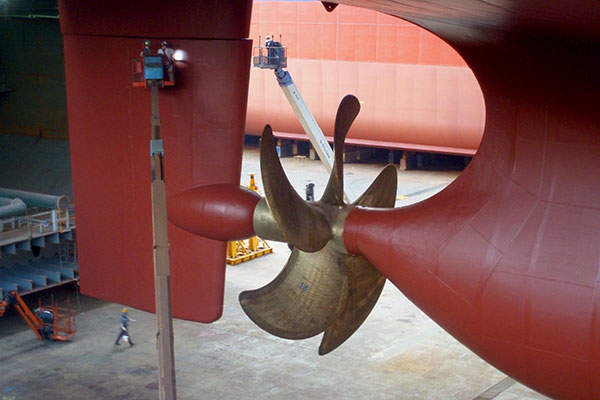
It measures a whopping 395 meters long, 59 meters wide with a draught of 16 meters which is equal to the size of four combined football fields. Obviously, such a massive ship needs the biggest propeller.
2) EMMA MAERSK
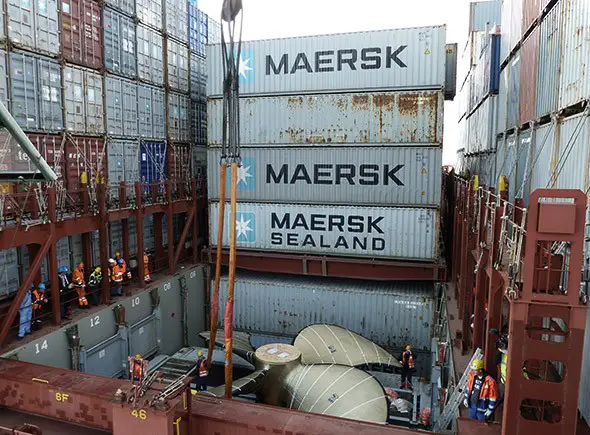
Before the manufacturing of Triple-E-Class ships, Emma Maersk was the biggest ship in the world. Being one of the oldest and largest ship containers (1302 feet long and 207 feet wide), Emma Maersk has one of the world’s largest ship propellers. This propeller, having a diameter of 9.6 meters and weighing 130 tons, is owned by A. P. Moller-Maersk Group. It is a six-blade propeller made of an alloy of copper, aluminum, nickel, iron, and manganese.
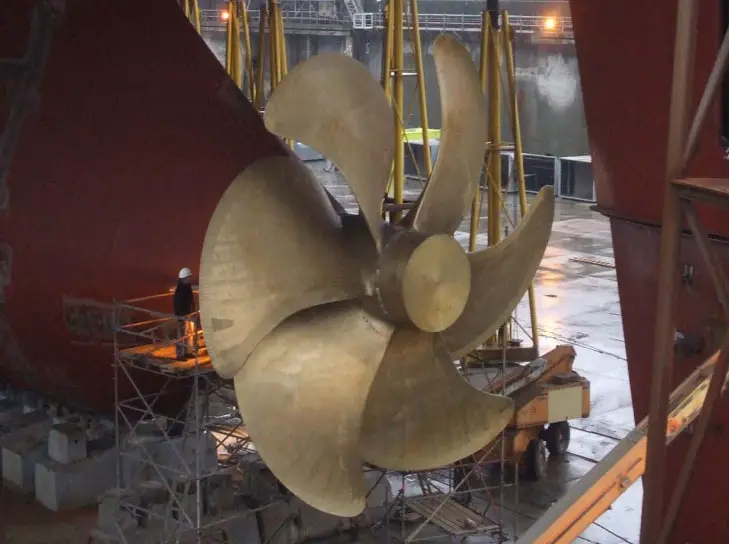
Emma Maersk has a Wartsila-Sulzer 14RTFLEX96-C 199,000 horsepower engine, the world’s largest single diesel unit, which burns 3,600 gallons of fuel per hour. This gives it a speed of about 31 knots.
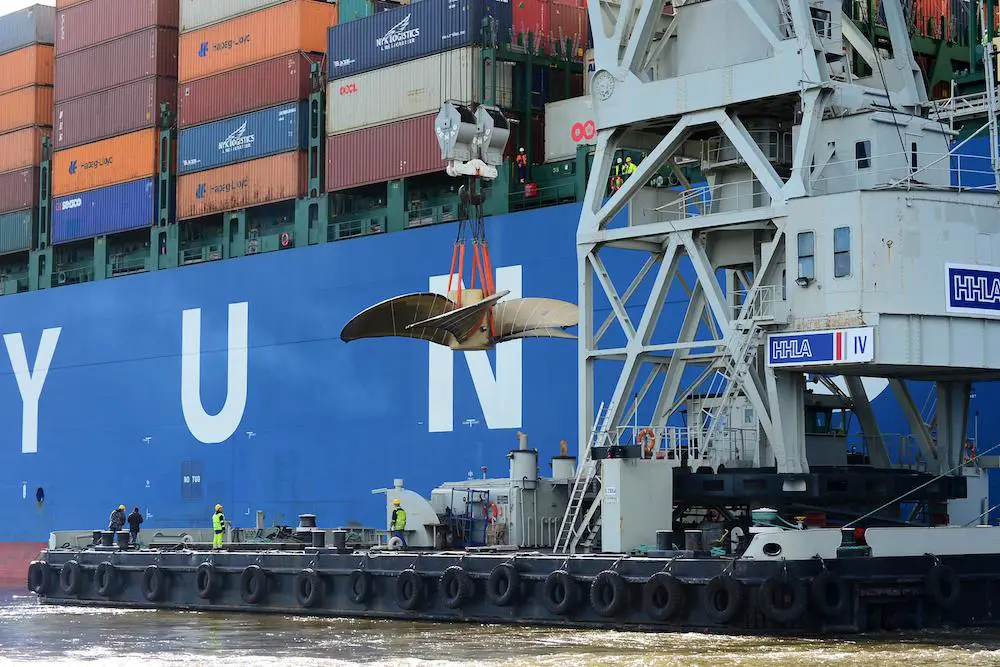
3) MT FRONT CENTURY
This vessel is a Crude Oil Tanker, built in 1998 by Hyundai Heavy Industries . The owner of this ship is Frontline Ltd. This ship is powered by a MAN B&W-Hyundai 7S80MC engine. It has a four-bladed key-less 6.46-meter pitch propeller with 9.7 meters of diameter.
4) MOL TRIUMPH
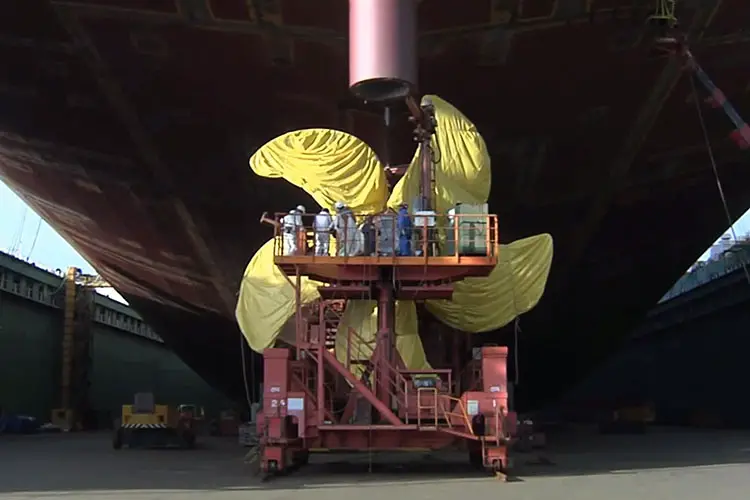
This container ship was built by Samsung Heavy Industries in 2017 and it is one of the four ultra-large ships built for MOL of Japan . It has a high-efficiency propeller. It can give a maximum speed of 24 knots by driving a single five-bladed propeller of the 10-meter pitch.
5) MV BARZAN
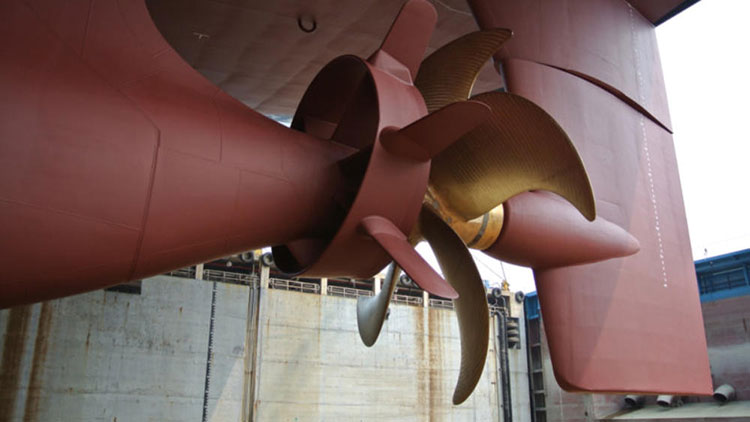
This ship was built in South Korea for the United Arab Shipping Company (UASC) by Hyundai Heavy Industries. It is an 18,800TEU container vessel ship with propellers weighing about 110.2 tons. The propeller has a diameter of 10.4 meters.
6) ROYAL CARIBBEAN OASIS CLASS SHIPS
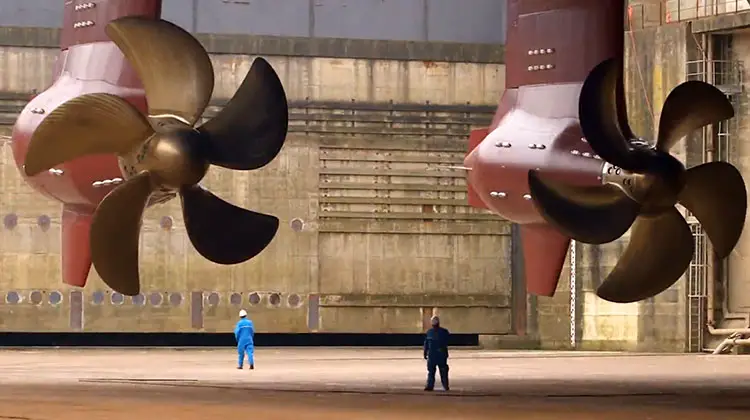
These ships are one of the largest cruise ships in the world. The first two ships in this class are Ocean of the Seas and Allure of the Seas. Propellers in these ships have a diameter of 6 meters. The propulsion is provided with the help of three 26,800 hp Azipods, ABB’s brands of electric azimuth thrusters.
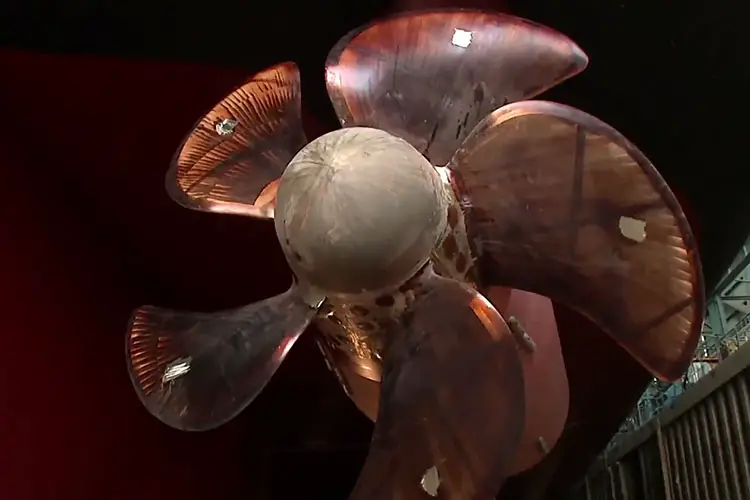
7) HAMBURG EXPRESS
This container vessel ship is owned by Hapag-Lloyd AG (a German-based transportation company). It is a 13,177 TEU container vessel built in 2012. Its propeller is six-bladed. With a diameter of about 9.1 meters and a weight of 101.5, this propeller is one of the largest propellers in the world.
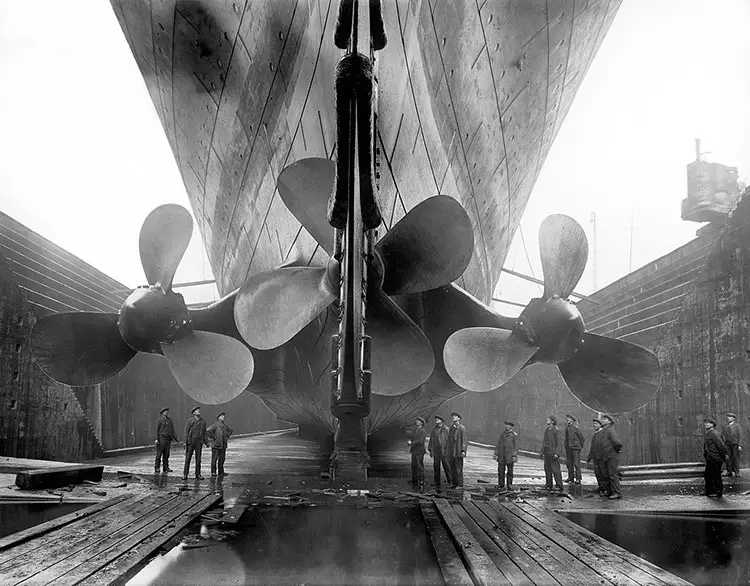
We all know the story of the Titanic of how the biggest ship of its time sank after it struck an iceberg. There were three propellers in this ship weighing 38 tons each. Each propeller was operated using separate engines. The propellers measured 7.2 meters. The propellers were made of bronze.
9) SEAWISE GIANT
Seawise Giant was the longest ship ever built. It was a ULCC supertanker, twice as big as the titanic. This ship was sunk during the Iran-Iraq war and was named Happy Giant after repair. The ship had five-bladed propellers, weighing 50 tons, with a diameter of 9.14 meters.
10) QUEEN ELIZABETH 2
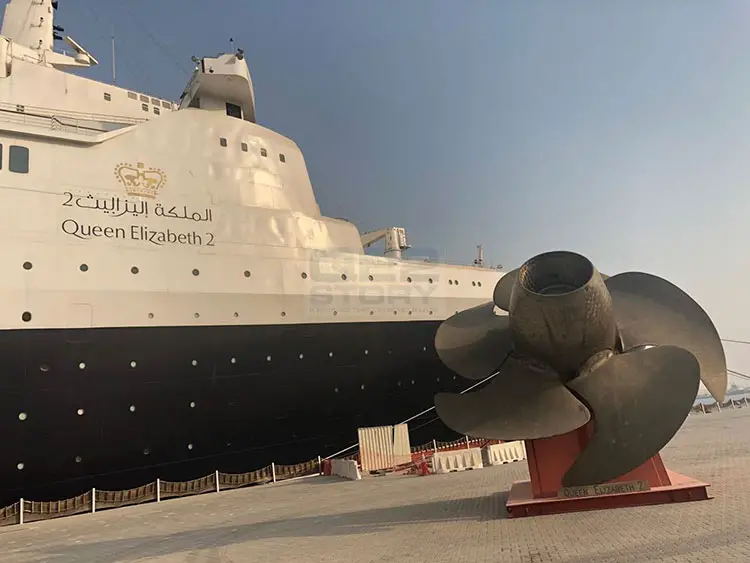
Queen Elizabeth 2 is a floating hotel and retired ocean liner which was built for Cunard Line. Since 2018, the ship has been operating as a floating hotel in Dubai.
QE2 has two huge variable pitch propellers each having a diameter of 22 feet and weighing 43 tons. The propellers are fitted with “Grim Wheels”. These are free spinning blades that are fitted behind the main propellers. This design was used for recovering the propeller thrust and reducing fuel consumption.
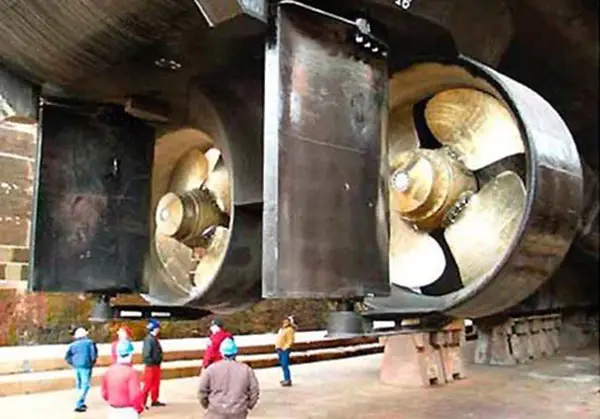
Icebreaker , Nathaniel B. Palmer, is a ship made for navigation through the ice-covered water and is mainly used for research purposes. For making a ship to move through the ice-covered water propeller with high strength are needed. Therefore, the propellers of this ship are made up of a sturdy alloy.
This ship has two four-bladed propellers that are about 4 meters long.
12) ELATION
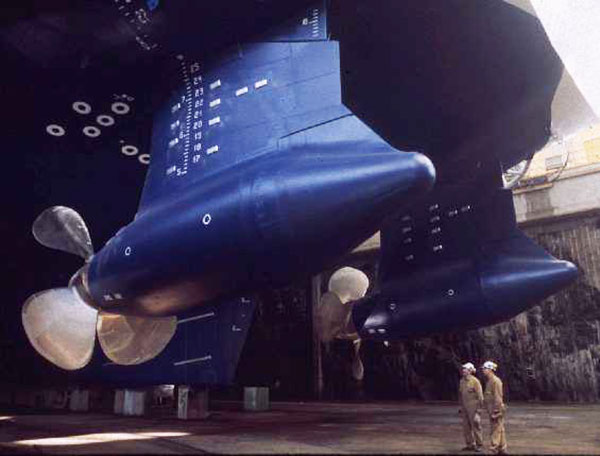
It is a Fantasy-class cruise ship owned by Carnival Cruise Line . Its service speed is about 22.3kt. It is the world’s first to use a unique electric azimuth Azipod propulsion system in which a ship is pulled rather than being pushed by the propeller. Elation has two 14MW Azipod propulsion units.
13) BISMARCK
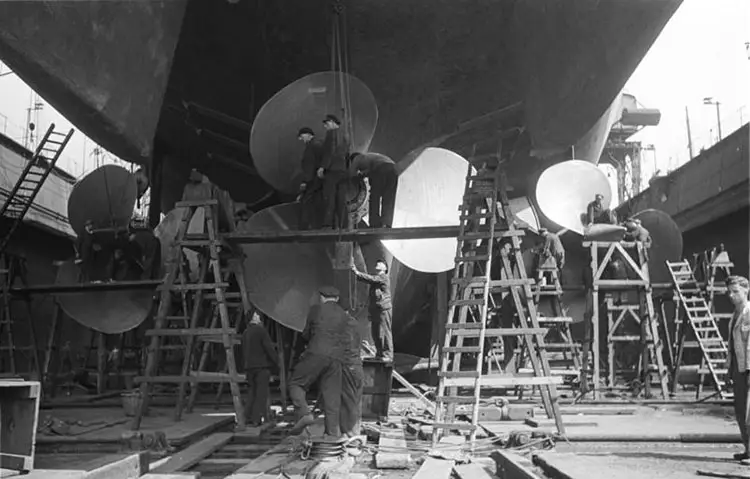
Bismarck was a battleship built for Nazi Germany’s Kriegsmarine before World War II. The ship had three manganese bronze propellers each having its own engine. Each propeller had three blades. The diameter of the propellers was 4.7 meters and the volume was a 2.4-meter cube.
This huge German battleship was sunk on 27 May 1941.
So, these were some of the biggest propellers in the world.
Similar Posts
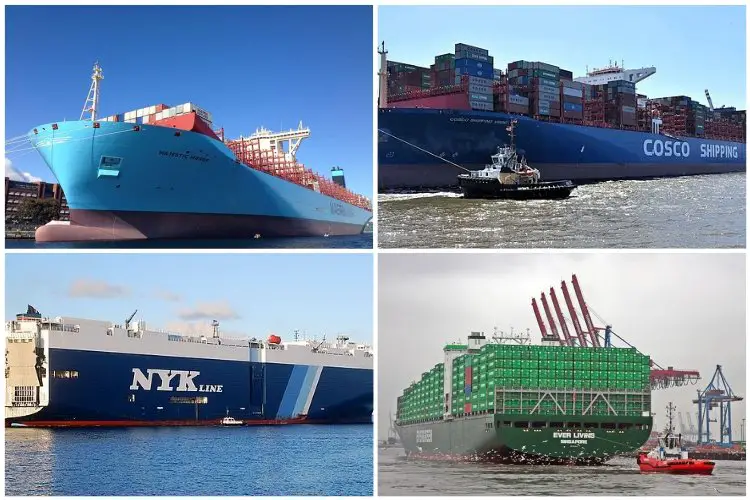
Top 21 World’s Largest Container Ships In the World
Humans have always strived to build the biggest, largest and fastest ships. So, today we will be telling you about the largest container ships in the world. Container ships are cargo ships that are exclusively used for the carriage of truck-size intermodal containers. The capacity of a container ship is expressed in TEU that is…
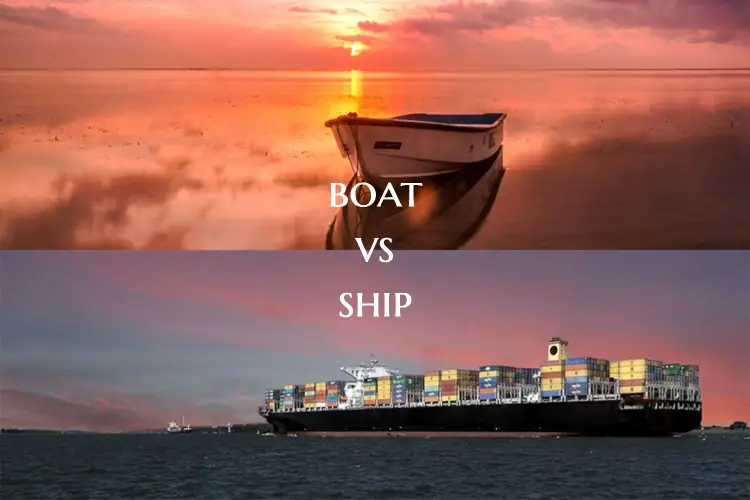
Boat Vs Ship
Boat vs Ship. What’s the difference between a boat and a ship? After all, both – boat or ship can be used to ferry people and cargo. If this question has also bugged you, this article will try to make the difference clear to you. Archaeological excavations have led to the discovery of log boats…

Ancient Seaports of India
It may come as a surprise to many people that India has a rich history of shipbuilding and Indians were quite accomplished seafarers. This obviously means that India also had many seaports in the past. Here is the list of ancient seaports of India. All of these ports were a hub of trade and commerce…
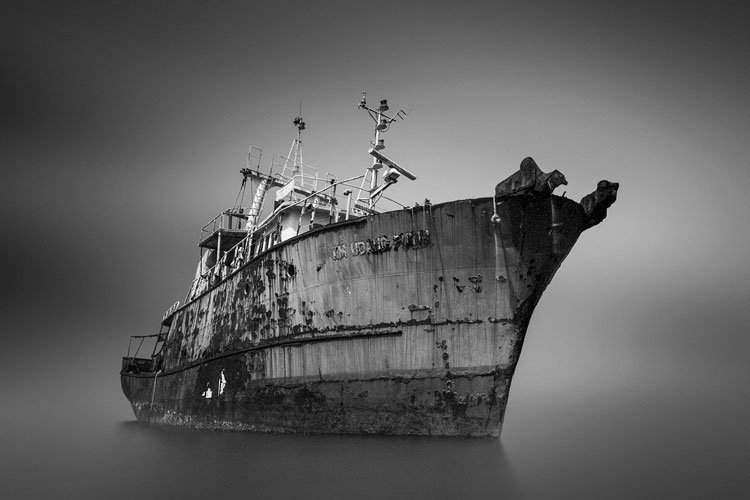
Top 13 Mysterious Ghost Ships and Haunted Stories of The Maritime World
We all have enjoyed mysterious ghost stories in our childhood. In the maritime world, there are lots of ships on which mysterious events took place. The stories of these mysterious ships are always very interesting. Here are some of the famous ghost ships of the maritime world. Top 13 Mysterious Ghost Ships and Haunted Stories…
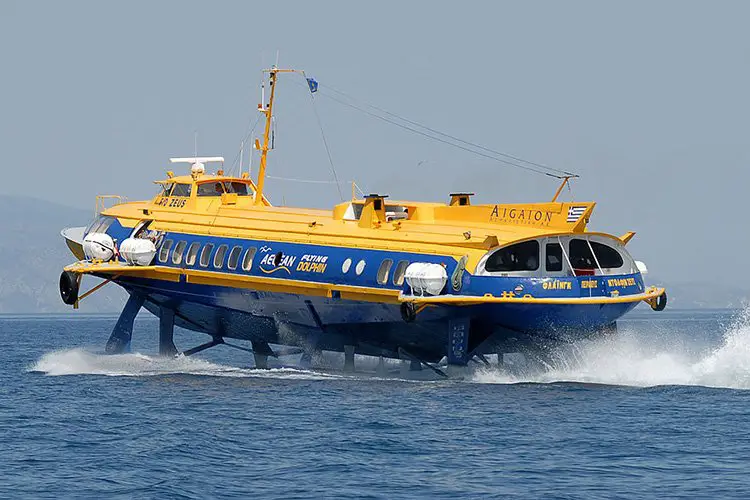
What is a Hydrofoil Boat?
A Hydrofoil boat is a vessel with a lifting surface (foil) attached to the hull to lift it from the water level at high speed thus decreasing the drag and increasing the speed of the boat. There are many different types of boats in the world. All of them share some common and uncommon characteristics….
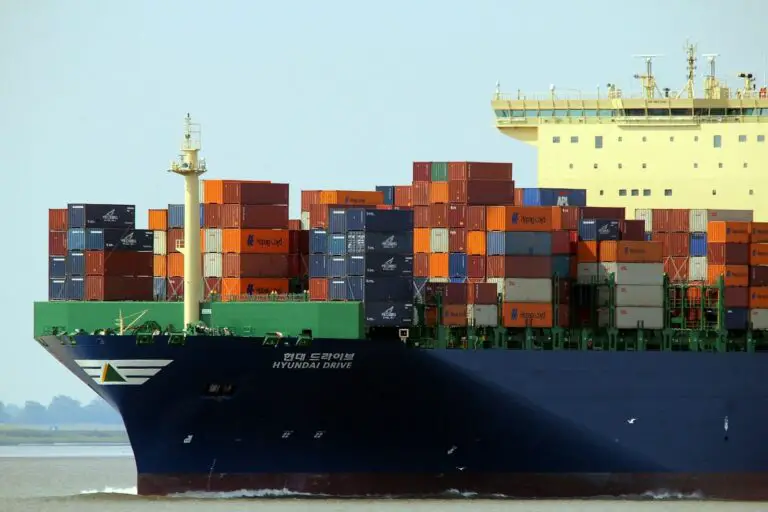
10 Largest Container Shipping Companies In The World
Want to know the largest container shipping companies? We have compiled the latest list of shipping companies that dominate the industry. It won’t be a stretch to say that container ships form the backbone of world commerce. These ships enable the movement of a vast amount of goods to be through the ocean quickly and…
Leave a Reply Cancel reply
Your email address will not be published. Required fields are marked *
Save my name, email, and website in this browser for the next time I comment.
This website uses cookies to improve your experience. We'll assume you're ok with this, but you can opt-out if you wish. Read More
How a Giant Tanker's Propeller Is Made in a Single Piece
Every component of a large tanker ship is carefully designed and built. Here's the process of making the propeller blades.
Building a large ship requires a massive amount of engineering work. Even the smallest parts require lots of time and effort to design and build. Case in point: the ship's propeller. The prop has to hold up to millions of miles of travel, and move the ship fast enough to get from port to port on time.
In this case, the propeller is cast in one piece, and is made of a complex alloy involving 8 different metals. Take a look at the process:
Once a design has been selected, the molten metal is poured into the mold and left to cool. The propeller is so massive that the metal takes a full 5 days to cool and harden.
Once the metal has cooled, the mold is broken off and the propeller is sent to the milling machine. The machine is computer controlled and spends the next 15 days polishing the propeller.
After almost 3 weeks of production, the propeller is finally ready to be attached onto the ship. All that work for just a single component on a massive tanker.
Source: Science Channel

.css-cuqpxl:before{padding-right:0.3125rem;content:'//';display:inline;} Infrastructure & Transportation .css-xtujxj:before{padding-left:0.3125rem;content:'//';display:inline;}

Inside the Final Minutes of a Horrible Train Wreck
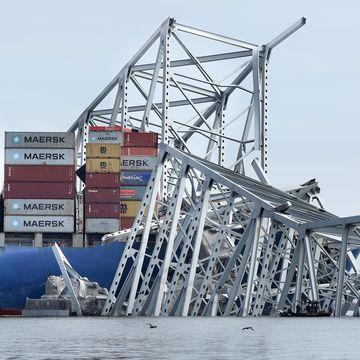
What to Learn From the Baltimore Bridge Collapse

Secret Tunnel in NYC Destabilizes Nearby Property

The Secrets of a 26-Year-Old Medieval Castle
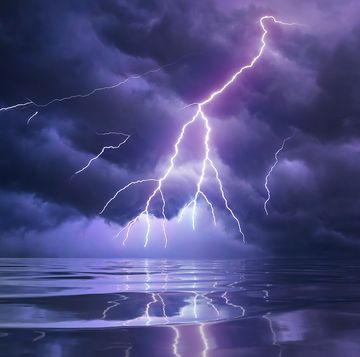
How Laser Lightning Rods Could Save Our Buildings
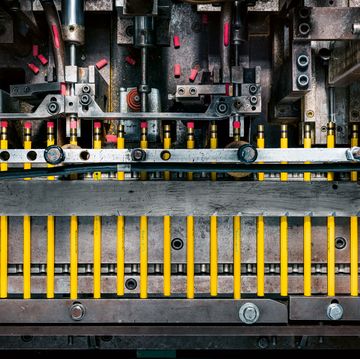
Christopher Payne's Industrial Photography
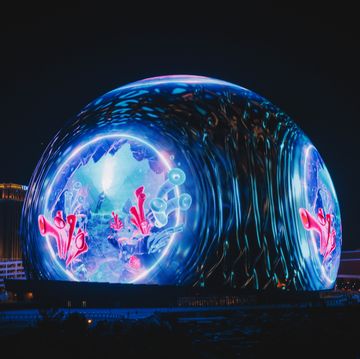
What It Took to Build the World’s Largest Sphere

Greek Mythology Impacts Longest Suspension Bridge
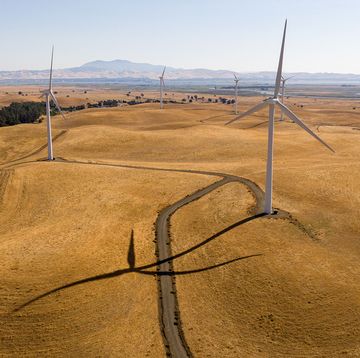
The Hubris of Building a City From Scratch
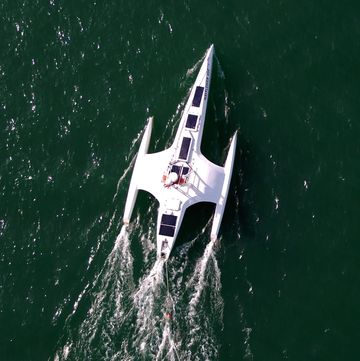
A Fully Autonomous Ship's Perilous Journey at Sea
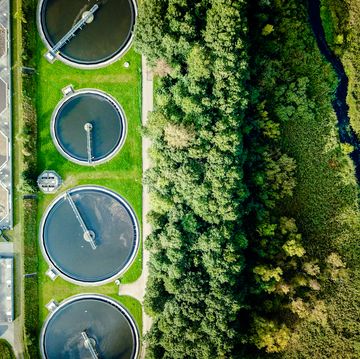
Everyday Explained: What Happens After You Flush

IMAGES
VIDEO
COMMENTS
What Are Cruise Ship Propellers Made Of? Cruise ship propellers, just like any propeller used on a modern ship, are made from an alloy of stainless steel and aluminium. This provides the necessary strength to be able to move through the water, and it is resistant to rust, too. It's also light enough to not increase the drag on the ship.
Cruise Ship Propeller Size. Propellers can be up to 20 feet in height. Often referred to as ABB Azipods XO, modern cruise ships tend to have three of them to properly maneuver the ship and propel ...
Cruise ship propellers can vary in size and are made from an alloy of stainless steel and aluminium to withstand corrosion and degradation. Modern cruise ships use azipods, which have the propeller at the front of the pod and can spin 360 degrees to help with steering, and typically have three propellers for balance between fuel consumption ...
Carnival Cruise Line Fantasy Class Cruise Ship, Elation - Service speed on this vessel is 22.3 knots. It is the first to use an electric azimuth Azipod system for propulsion. The difference with ...
Cruise ship engine power is supplied through the transmission to the propeller shafts. These transmissions determine the revolutions of propellers. Modern ships use either diesel-electric engines or gas turbines as a source of power for propulsion, and for ship's systems.
Here are some factors to consider: Ship size and weight: The size and weight of the ship can affect the required propeller size and pitch. Cruise speed: The ship's desired cruise speed can determine the propeller's number of blades and pitch. Engine power: The power of the ship's engine can determine the required size and type of propeller.
Nowadays, modern cruise liners are equipped with azimuth thrusters. Azimuth thrusters are simply the propellers attached to pods, but they are capable of rotating through 360 degrees. Hence they help ships to steer more quickly and effectively. The entire propeller is made to rotate at the desired angle in order to steer the ship.
In this video, we're going to take a look inside an cruise ship propeller test. We'll see how a propeller is tested and how that testing impacts the safety o...
An inspector checks out the propeller on cruise ship Oasis of the Seas. Image: ABB. ... And modern propellers are integrated with smart, data-collecting sensors that help track how a ship is ...
A ship propeller, often simply referred to as a propeller, is a crucial component of a ship's propulsion system. It is a rotating device with a set of blades that are strategically designed to generate thrust and propel the ship through water. Ship propellers are typically located at the stern (back) of the vessel and are immersed in the water.
The ship propeller has two hydrodynamic surfaces: Face and Back. To put it simply, the cross-section of blades coupled with the boss when looked from behind the ship is called the Face, also known as the 'palm'. The opposite face is called Back. Figure 3 illustrates better. Figure 3.
Cruise ship propellers come in different types, each designed to meet specific requirements and operating conditions. These propeller types vary in their design, configuration, and performance characteristics. ... Podded propulsion systems are a relatively new and innovative technology employed in some modern cruise ships. These systems consist ...
Azimuth thrusters—technically propellers—are a different take on propulsion. They're installed in pods at the back of the ship and can be rotated on a horizontal axis for better maneuverability, thereby eliminating the need for a rudder. Once installed, these thrusters can move 360 degrees, allowing ships to perform unprecedented maneuvers.
Rolls-Royce Marine Spey, a gas turbine developed by Rolls-Royce Holdings in the 1960s for marine propulsion. Marine propulsion is the mechanism or system used to generate thrust to move a watercraft through water. While paddles and sails are still used on some smaller boats, most modern ships are propelled by mechanical systems consisting of an ...
Case Study 1: Modern Cruise Ship Propellers. Modern cruise ships often utilize advanced propeller systems to maximize efficiency and minimize environmental impact. An example is the Royal Caribbean's 'Oasis of the Seas,' which employs Azipod propulsion units. These units feature variable-pitch propellers, allowing the ship to adjust ...
About 90% of today's modern cargo vessels use large bore, slow speed diesel engines. Propellers are usually driven directly by a shaft coming off the aft end of the engine. Most commercial propellers and diesel engines converged on an operating speed of around 100 RPM and that became the de facto standard for the diesel driving the prop.
Cruise Ship Propeller Size. Propellers can be up to 20 feet in height. Often referred to as ABB Azipods XO, modern cruise ships tend to have three of them to properly maneuver the ship and propel it forward in water. They are efficient on fuel compared to a traditional system.
This video takes you inside the giant ship propeller manufacturing facility, where you'll see how propellers are made. You'll learn about the different types...
A 4 blade propeller has the following characteristics: The manufacturing cost is higher than the 3 blade propellers. 4 blade propellers are normally made up of stainless steel alloys. Have better strength and durability. Gives good low-speed handling and performance. Has a better holding power in rough seas.
propeller moves forward 10inches for every complete turn it has a 10inch nominal pitch. In reality since the propeller is attached to a shaft it will not actually move forward, but instead propel the ship forward. The distance the ship is propelled forward in one propeller rotation is actually less than the pitch. The difference between the nominal
Propellers are the driving force behind most ships and planes around the world. They can drive large commercial ships through the water at 15 knots and commercial aircraft at 550 miles per hour. But how do they actually work? Today we are going to take a look at how ship propellers work, some of their designs, and how they differ from aircraft propellers. We'll also take a look at an ...
MSC Oscar, built by Daewoo in South Korea, is one of the largest container ships in the world. The total length of this ship is 395 meters. The propeller consists of five blades, each blade measuring 10.5 meters. The main engine of this ship is MAN B&W 11S90ME-C, which enables the maximum speed of this container vessel is 22.8 knots.
The prop has to hold up to millions of miles of travel, and move the ship fast enough to get from port to port on time. In this case, the propeller is cast in one piece, and is made of a complex ...
Drones like the Iranian Shahed or Ukrainian UJ-22 are basically petrol-engined, propeller-driven light aeroplanes minus the pilot. They are not much faster or more capable aeronautically than a ...